Bonington Gallery is pleased to present THROUGH A MIRROR, DARKLY, a new three-channel film by Turner Prize nominated artist Naeem Mohaiemen. The film explores memorialisation, protest, and political violence through the lens of events in May 1970, when American students protesting domestic racism and overseas wars were met by state violence.
As the Vietnam War came to its bloody end, for the American media, the memory of four American students shot dead at Kent State University was sometimes as emotionally charged as the millions of deaths in Vietnam.
In the decades that followed, a memorial community has formed around the ‘four dead in Ohio’. Yet while the deaths of students Alison Krause, Jeffrey Miller, Sandra Scheuer, and William Schroeder at Kent State, Ohio, are remembered, not many recall Phillip Lafayette Gibbs and James Earl Green, two students killed ten days later by police officers at Jackson State College, Mississippi, a Historically Black College.
By choreographing the relationship between archival footage and contemporary ceremonies memorialising the dead, THROUGH A MIRROR, DARKLY explores the role of memorials as a focal point for individual and collective grief. By comparing Kent and Jackson State, the project underscores blind spots around racialised violence and class tensions, made concrete in the disparity in coverage of these two campus shootings. The inclusion of stage-managed press conferences reveals the political machinations of the Nixon administration who fuelled a backlash to anti-war protests.
Mohaiemen deftly presents these intersecting strands, weaving together the voices of key political players, student leaders, and the fabled ‘man on the street’ alongside Vietnam veterans, to propose new interpretations of the events of May 1970 and their lasting impact.
“In Corinthians 13:12, ‘through a glass, darkly’ meant the impossibility of viewing the full scope of divine plans. In a more earthly, secular context, I consider the memorialization of the Vietnam War era, and how the farther away we get in years, the hazier the many meanings of events in the mirror of memory become.”
– Naeem Mohaiemen
Naeem Mohaiemen was born in London, UK, grew up in Dhaka, Bangladesh and currently lives and works in New York, USA. He combines films, photography, drawings, and essays to explore forms of utopia-dystopia within families, borders, architecture, and uprisings – beginning in South Asia and then radiating outward to transnational collisions in the Muslim world after 1945.
Several conversations around ‘nonalignment’ as a concept container in contemporary art pivoted after the premiere of his film Two Meetings and a Funeral (2017) at Documenta 14, which was nominated for the Turner Prize (2018).
Mohaiemen’s museum projects are represented by Experimenter Gallery (India) and film screenings are represented by LUX (UK); his work is in major international collections including British Museum and Tate Modern (London), Museum of Modern Art (New York), MACBA (Barcelona), Van Abbemuseum (Eindhoven), Kiran Nadar Museum (Delhi), National Gallery of Singapore, Art Institute of Chicago, Samdani Art Foundation and Sharjah Art Foundation.
Mohaiemen is co-editor with Eszter Szakacs of Solidarity Must Be Defended (Budapest, 2023) and with Lorenzo Fusi of System Error: War is a Force That Gives Us Meaning (Siena, 2007). He is the author of Bengal Photography’s Reality Quest (Dhaka, 2025), Baksho Rohoshyo (Umea, 2024), Midnight’s Third Child (Dhaka, 2023) and Prisoners of Shothik Itihash (Basel, 2014). He is a faculty member at the Visual Arts Department, Columbia University.
The first presentation of THROUGH A MIRROR, DARKLY is currently on display at Albany House, 94-98 Petty France, London SW1H 9EA, running from 21 September – 9 November, 2025. This exhibition has been reviewed by Jonathan Jones for The Guardian, and featured in Art and Design and Art Review.
Bonington Gallery is delighted to present Through Our Eyes, In Our Words, an exhibition exploring stories of ageing, belonging, and inclusion among middle-aged and older-aged LGBT+ people in Britain.
What does it mean to belong? To grow older? To feel heard, seen, recognised?
Spanning LGBT+ History Month 2026, this exhibition from the IncludeAge project invites you to engage with the experiences of middle-aged and older-aged LGBT+ people in Britain today. Reflected through photographs, personal objects and testimony, LGBT+ people share what matters to them: the places they love and where they feel seen, and the everyday moments that shape who they are.
These artefacts don’t come from behind a lens held by someone else. They were taken by the people whose stories they tell. Some might identify as artists or creative practitioners, others not. Each photo and object is a choice – of what to show, how to show it, and what it means. Some speak of joy and celebration. Others quietly express frustration or longing—all of them reflect lives lived with strength, humour, creativity, and care.
The IncludeAge project (2022-26) explores experiences of inclusion and exclusion among diverse middle-aged and older aged people (40+), in physical places and online spaces..
The project specifically engages with LGBT+ individuals and people with learning disabilities. Its goal is to build on the insights shared by participants and use them to develop solutions that foster more inclusive communities.
The project is led by Professor Judith Sixsmith at the University of Dundee, in partnership with the University of Hertfordshire, Liverpool John Moores University, and the University of Edinburgh. Several organisations are also involved in the project, including Tonic Housing, Sleeping Giants, and Outside the Box, among others.
At Bonington during LGBT+ History Month 2026, Through Our Eyes / In Our Words showcases the richness of LGBT+ voices, histories, and imagery emerging through the project. Exhibitions elsewhere in the country will showcase material relating to the participants with learning disabilities.
For more information, please contact Dr Richard Vytniorgu (r.vytniorgu@herts.ac.uk).
Photo: Rosie Gardener
Bonington Gallery is delighted to announce layt de kam, a newly commissioned body of film and textile work by multi-disciplinary artist Ibiye Camp, exploring the complex interplay between infrastructure, care, and resilience along the coast of West Africa.
At the heart of the exhibition is a critical reflection on the deployment of temporary power ships off the coasts of various West African cities — an intervention intended to address unstable energy infrastructures and shortages. The title, layt de kam (translated as “light is coming”), evokes both hope and uncertainty, highlighting the precarity of such power solutions while celebrating the enduring strength of coastal communities.
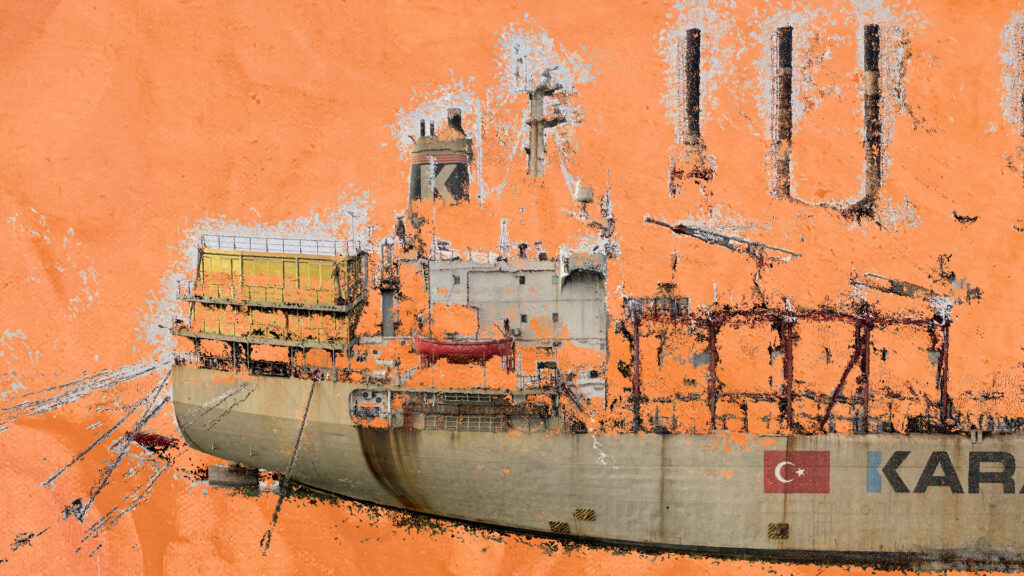
Combining spatial intervention, film and textiles, the exhibition will examine how brutalist infrastructure looms ominously over the intimate and everyday life on the shore. Central to the exhibition is a new film, GLOW, a speculative child’s tale that imagines the arrival of this foreign visitor who brings light. Created using point cloud reconstructions, the trace of the landscape is dependent on illumination, shadows and reflections to create the shapes and forms.
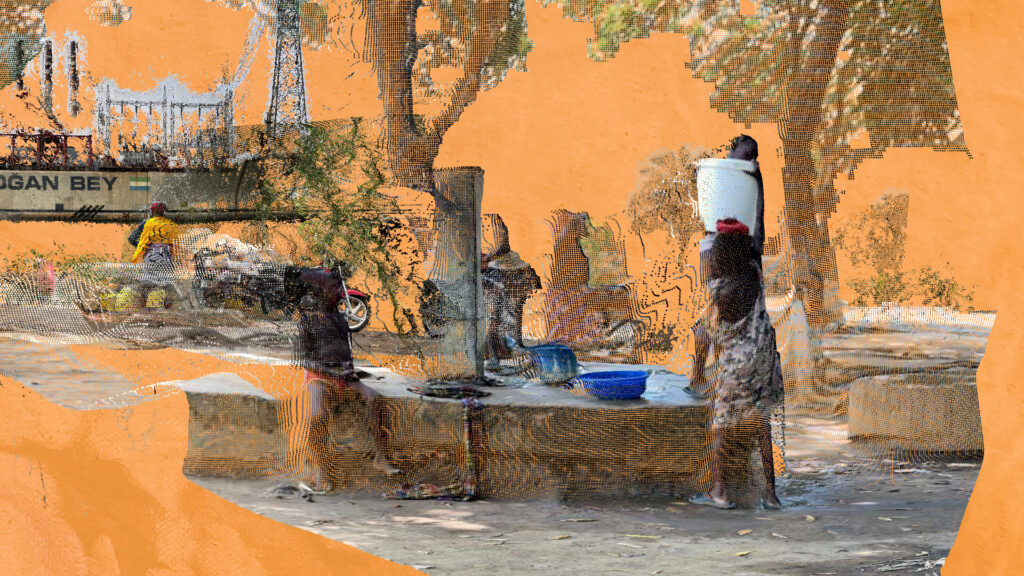
Camp further translates these digital landscapes into tactile form by laser-cutting point cloud stills into Kola Nut-dyed fabric. This process embeds the digital with the material, using concentrated light to cut cloth traditionally used by mothers to wrap their children—an enduring symbol of care and ancestral knowledge.
layt de kam further interrogates the broader geopolitical implications of temporary power infrastructures. Shaped by deregulation, privatisation, and conflict, these systems often reinforce global dependencies rather than fostering self-sufficiency. Drawing on theorist Keller Easterling’s concept of “extrastatecraft,” Camp reveals how non-state actors influence through infrastructure, turning energy access into a site of control.
By transforming disrupted landscapes into material memory, layt de kam offers a powerful narrative of resistance, care, and the entanglement of light, technology, and power.
Sound artist FAUZIA has made the soundtrack to Ibiye’s film GLOW.
Ibiye holds an MA in Architecture from the Royal College of Art, and BA (Hons) in Fine Art, from the University of the Arts London, Central Saint Martins. Ibiye’s Thesis project titled Data: The New Black Gold was awarded the School of Architectures Dean’s Prize and was nominated for the RIBA Silver Medal Award.
Ibiye has presented her work at The Sharjah Architecture Triennial titled Rights of Future Generations in 2019 and Triennale Milano The State of the Art of Architecture conference in 2020. She showed in the Istanbul Biennial titled Empathy Revisited in 2020, and MAAT – Museum of Art, Architecture and Technology’s exhibition titled X is Not a Small Country in 2021 and the 13th Shanghai Biennale titled Bodies of Water in 2021, and London’s Art Festival, Deptford X in 2022. In 2023 Ibiye was included in the Venice Architectural Biennial within the group exhibition Guests from the Future, and in 2024, was included in Unseen Guests, a project organized by Iniva as part of the British Pavilion’s public programme at the 60th Venice Biennial.
Ibiye Camp, Rhiarna Dhaliwal and Emmy Bacharach run a BA Studio titled Digital Native at the Design Academy Eindhoven.
Press:
– Art + Australia ‘Floating Power Houses: A Conversation’.
Join us for the launch of the first exhibition of the academic year, a two-person exhibition by William English and Sandra Cross bringing together film, photography, sculpture, sound, and archival material formed independently and collaboratively over several decades.
To Farse All Things offers a rare opportunity to explore the intertwined lives and practices of two artists whose work resists categorisation. Through a shared and uncompromising commitment to experimentation, hospitality, and social engagement, English and Cross have cultivated a body of work that is as generous as it is radical.
As part of the 28th instalment of the Bonington Vitrines series, we’re delighted to present Someone’s Doing Something, a project by London-based curatorial, research, and archival platform Gestures, developed in dialogue with writer Isabelle Bucklow.
Enjoy a free welcome drink, delicious food (first come, first served!) and music.
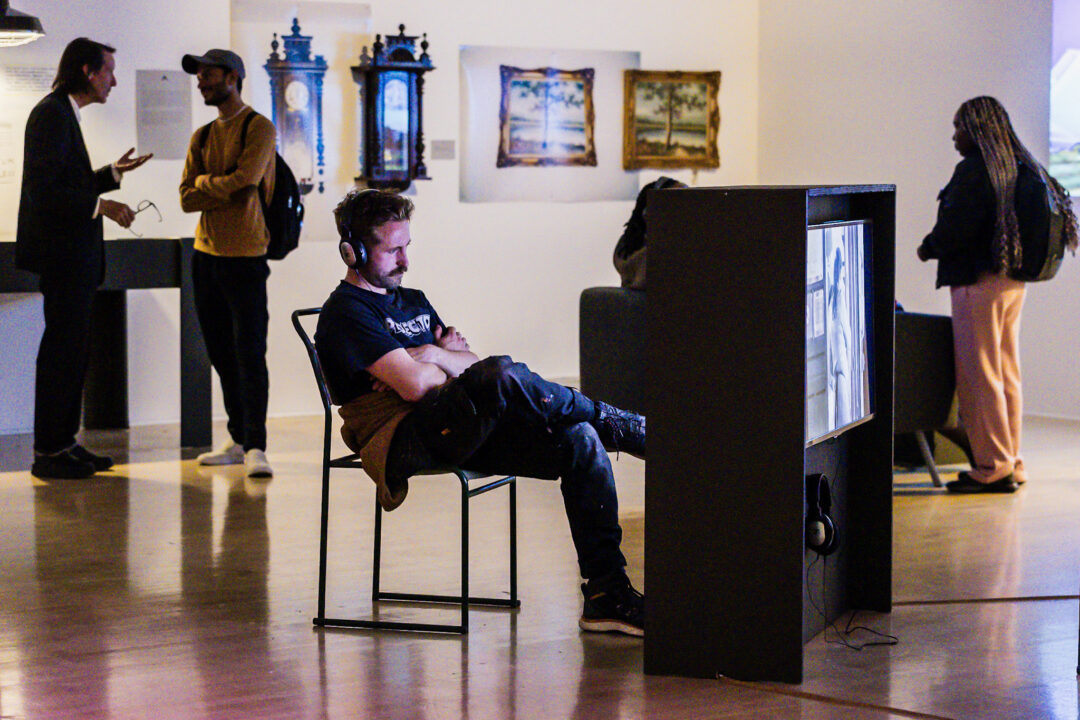
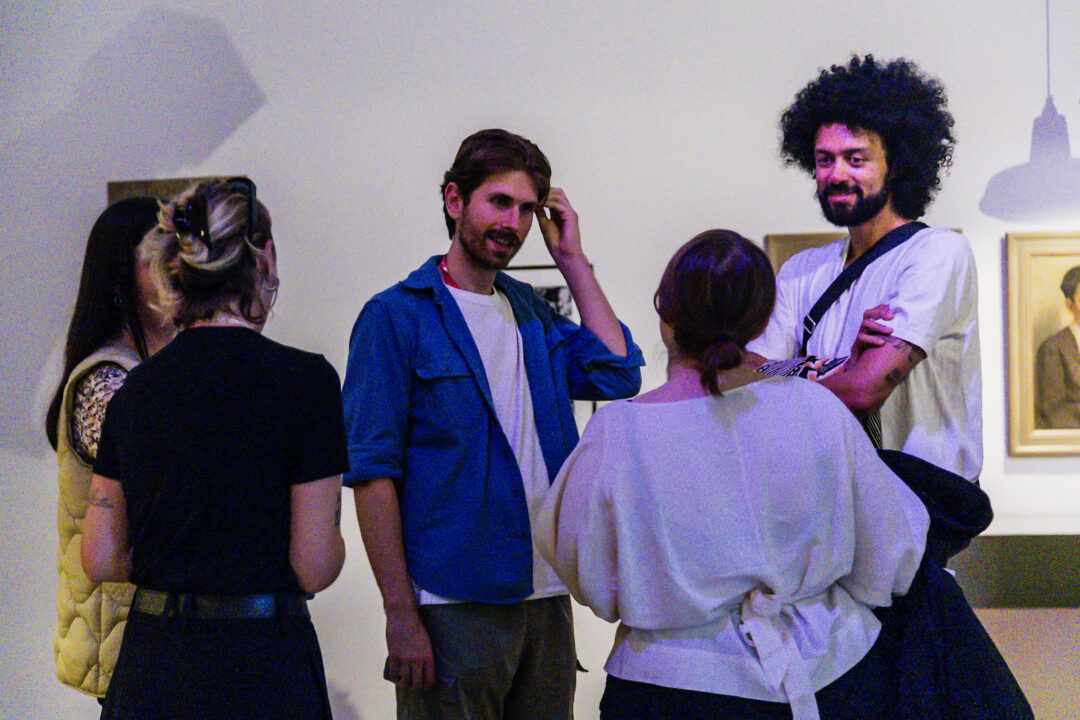
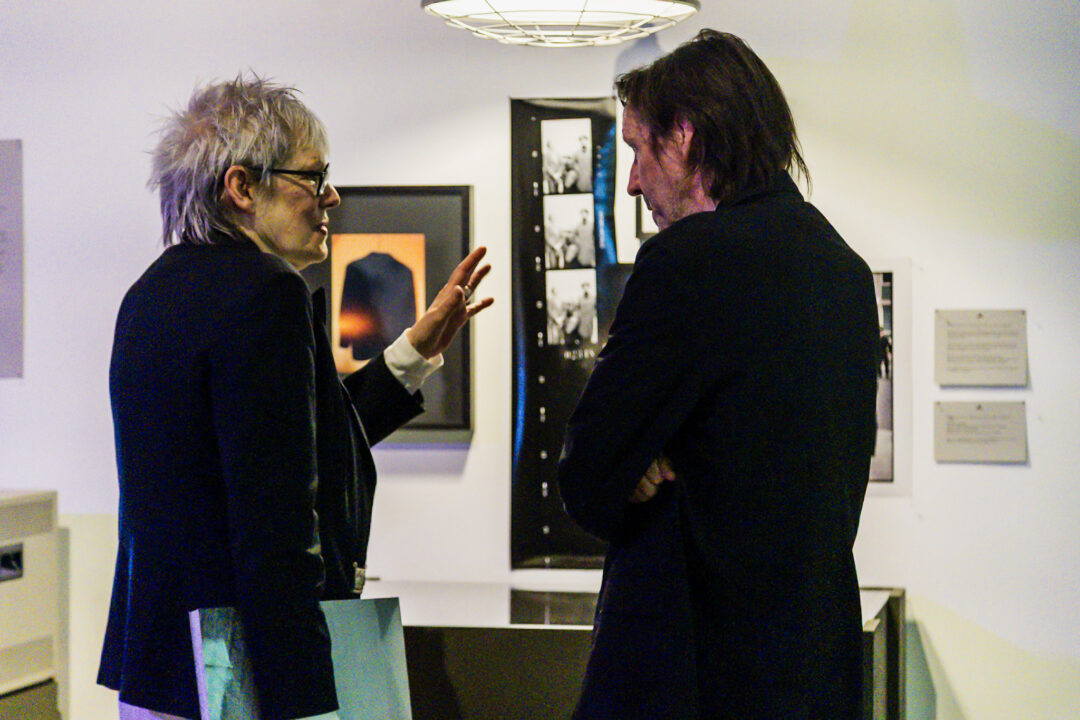
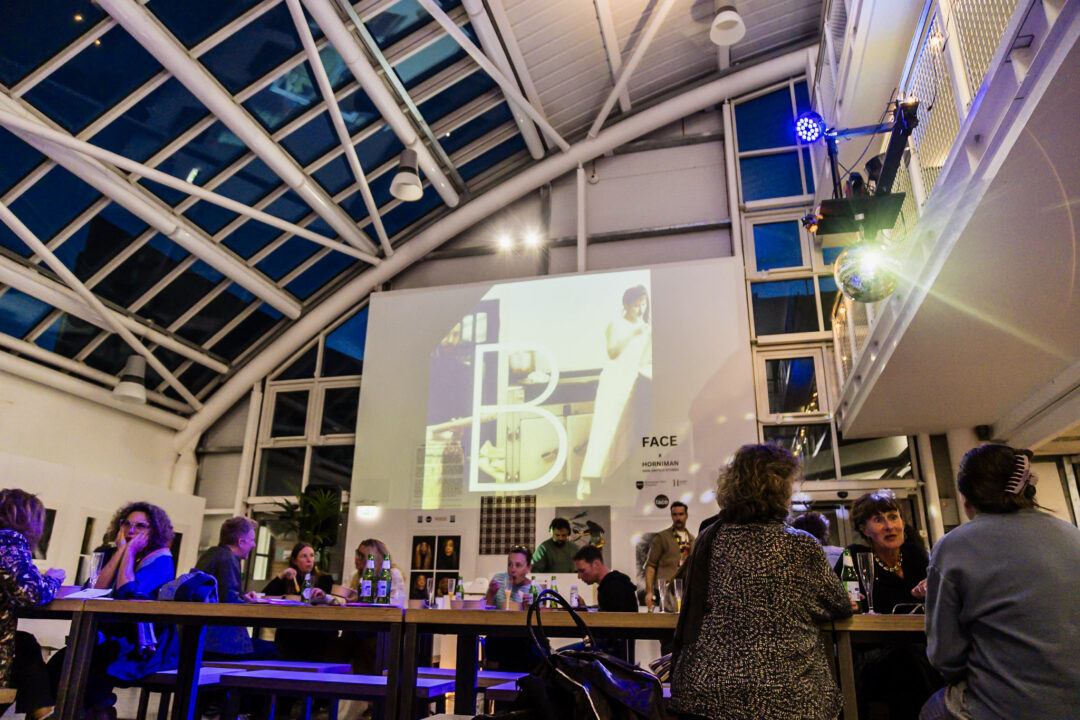
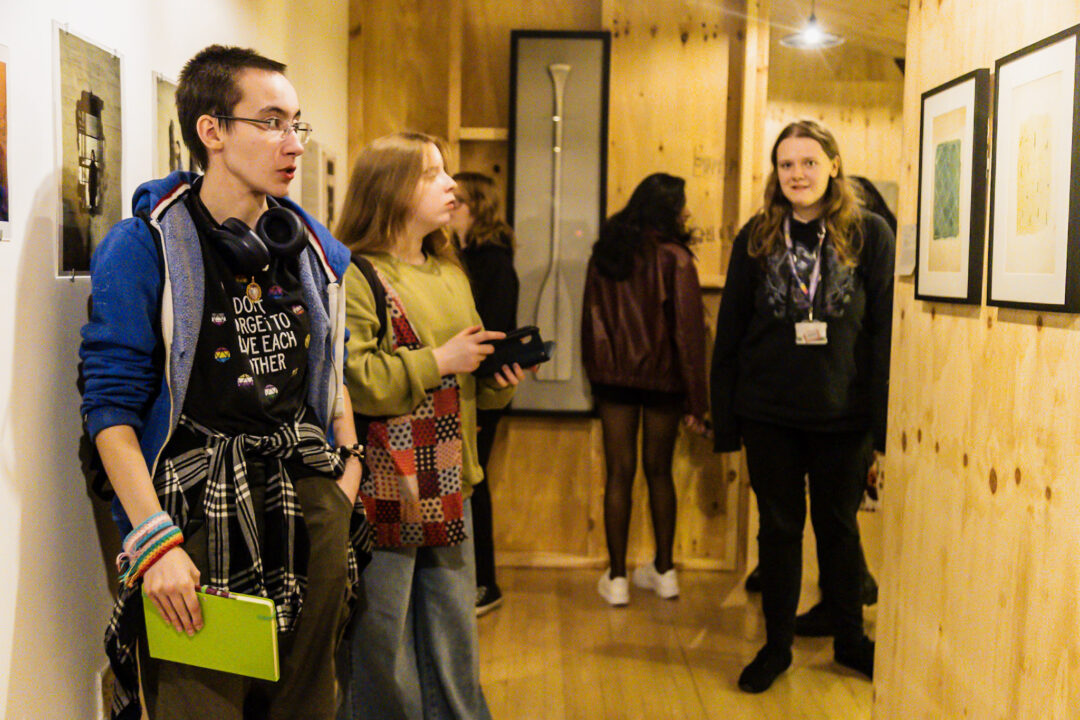
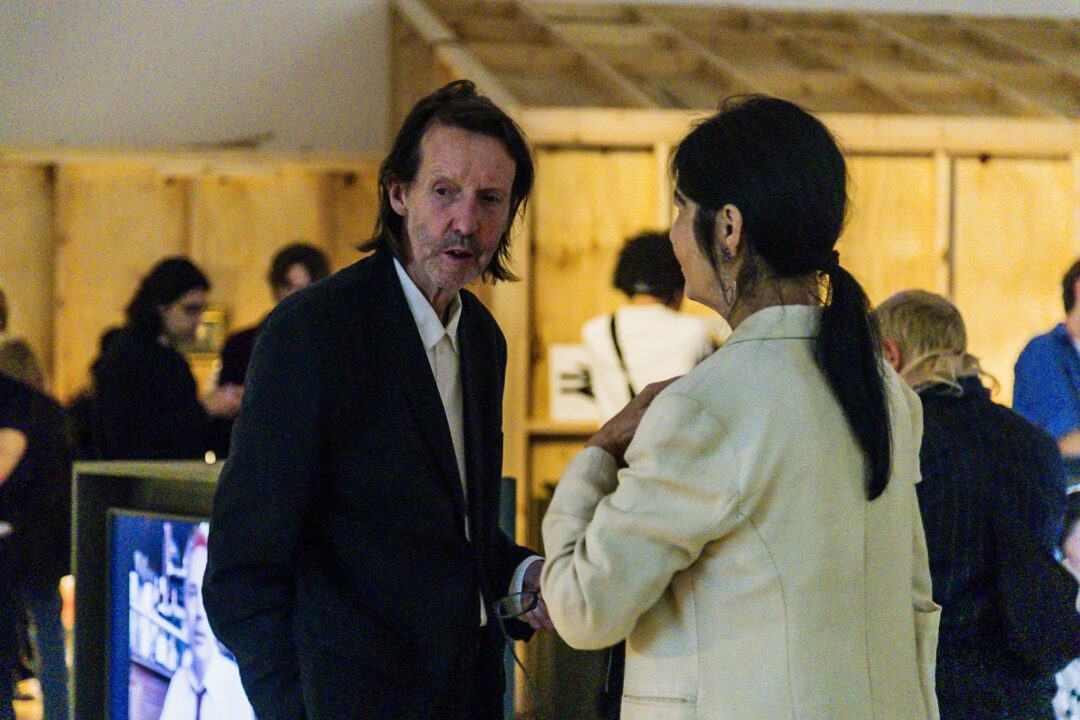
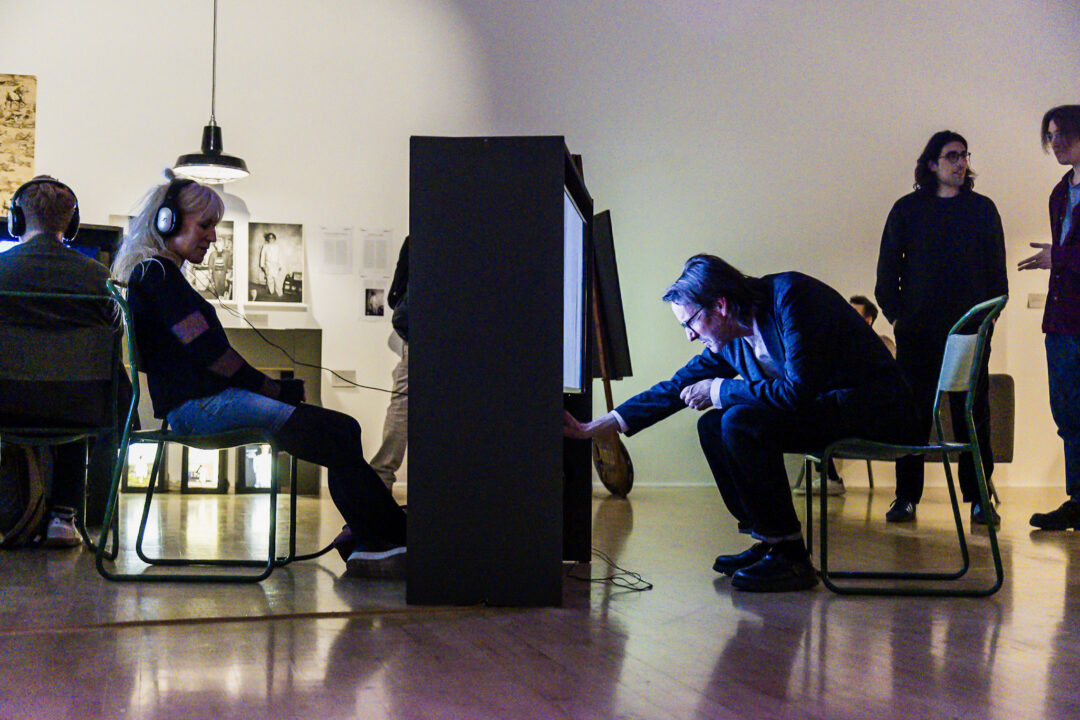
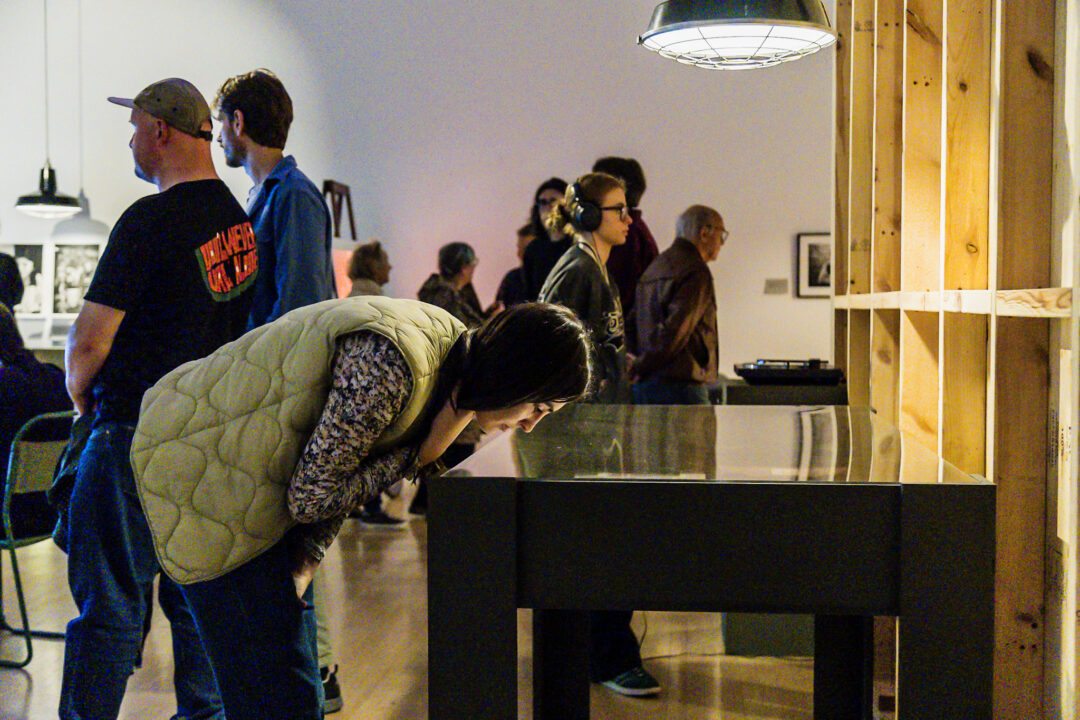
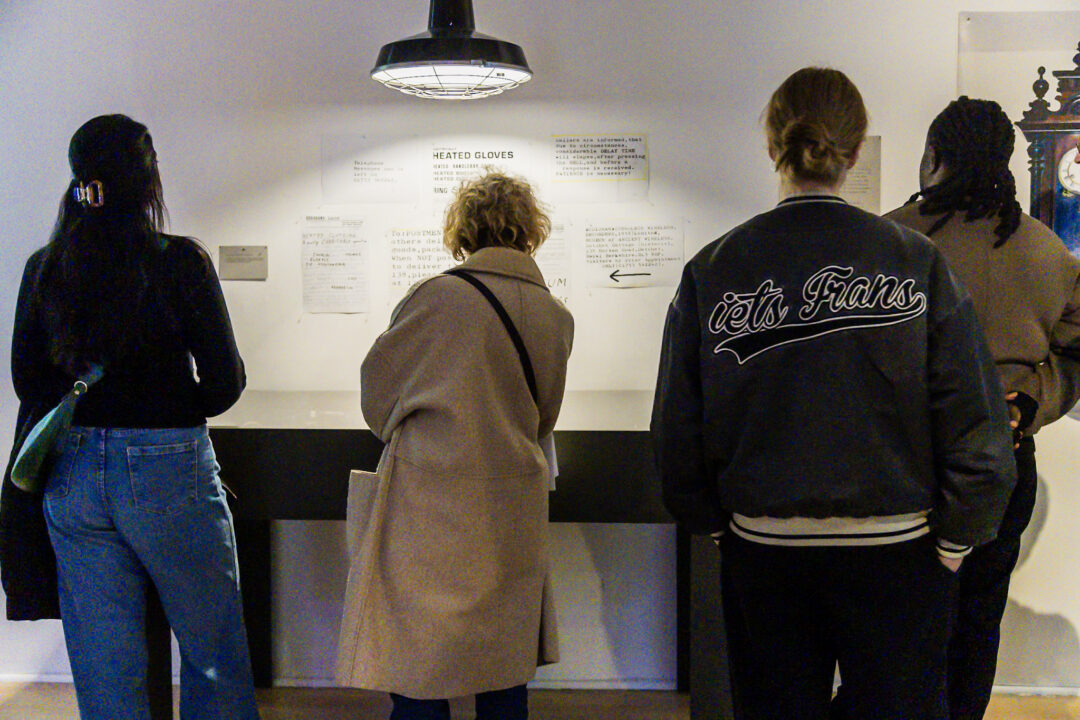
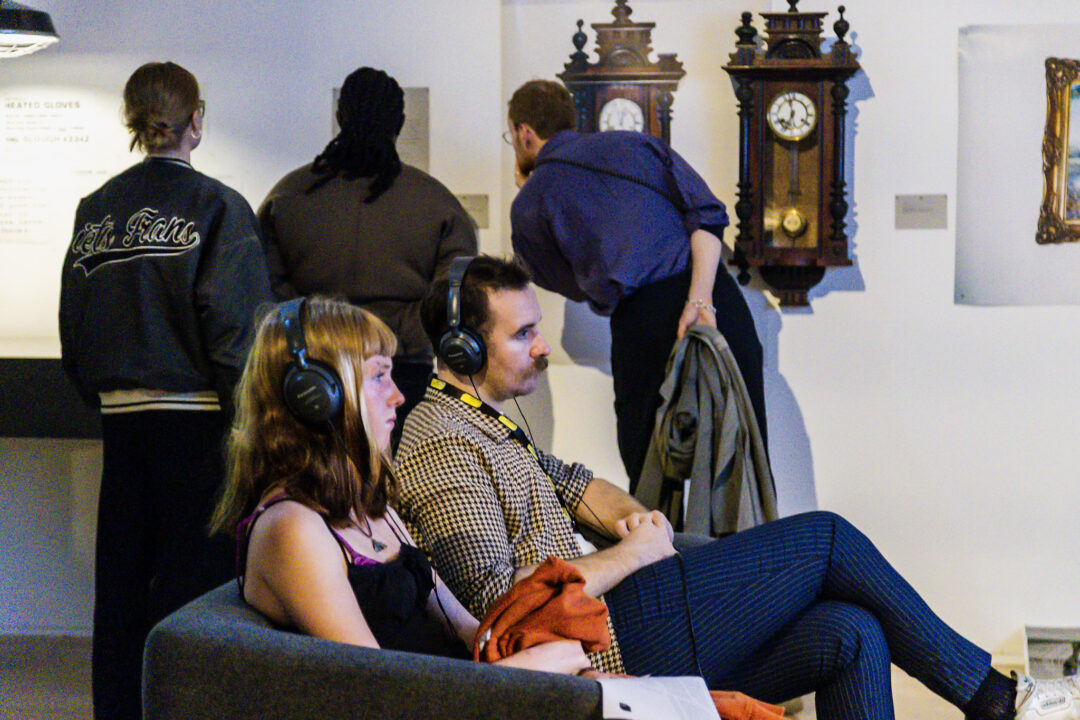
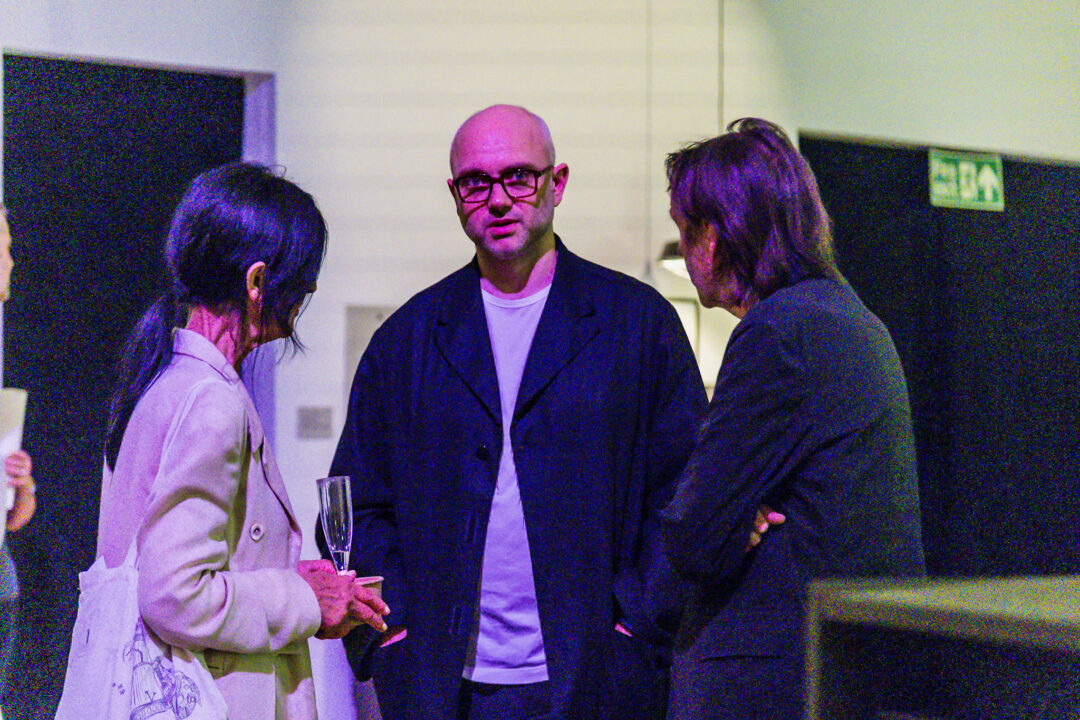
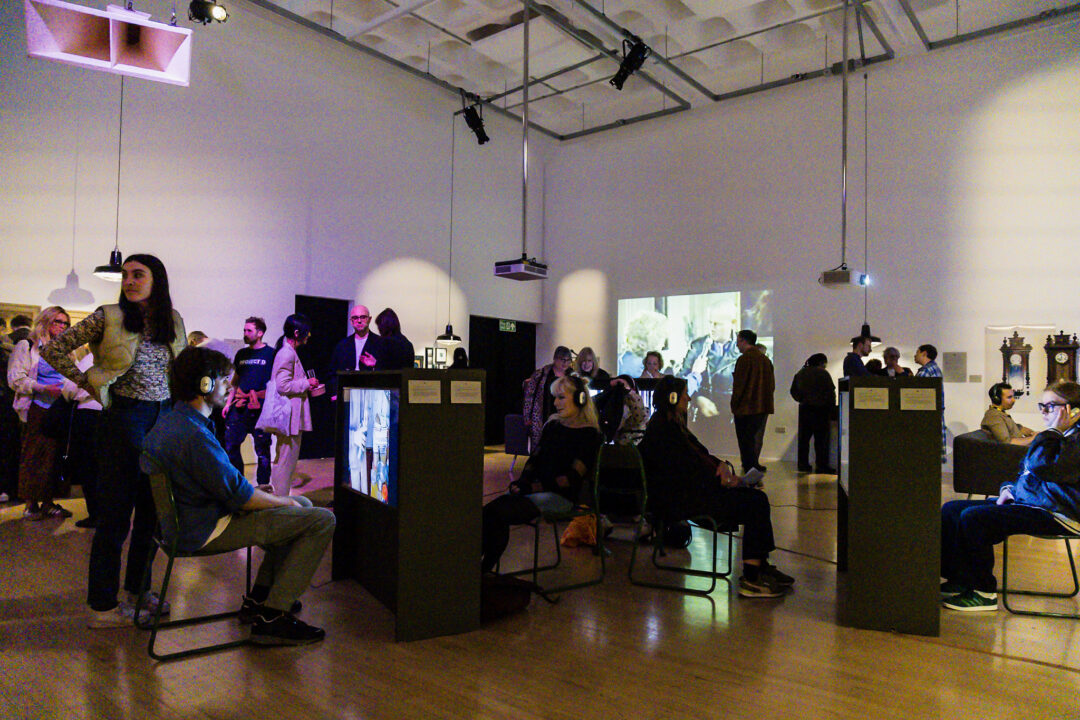
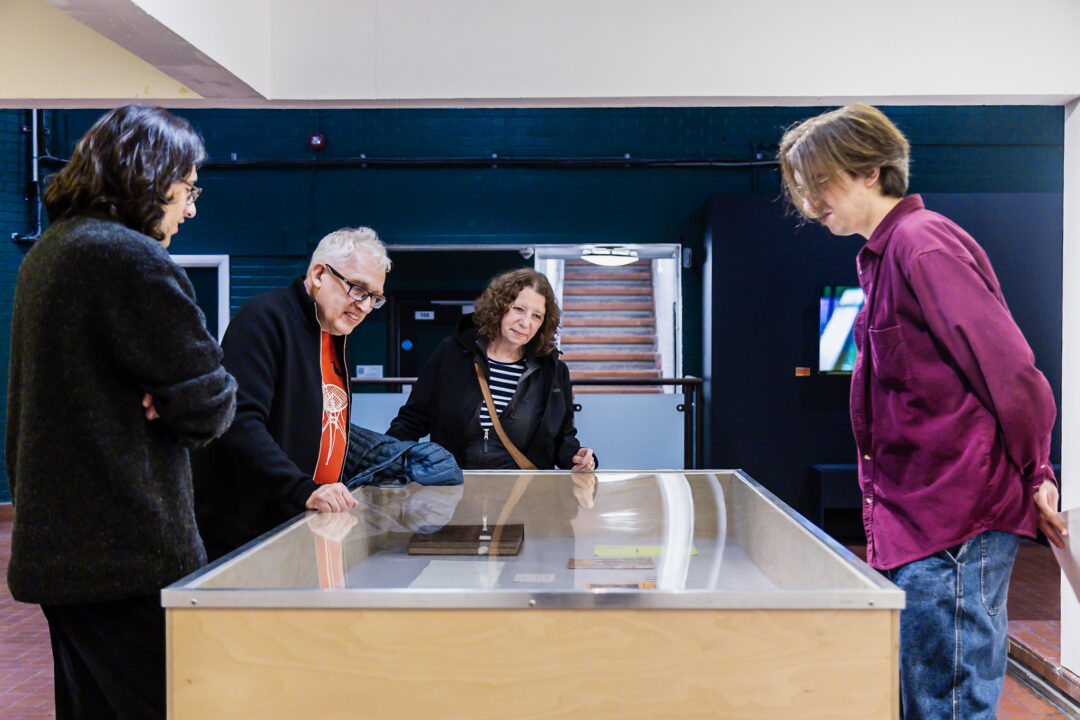
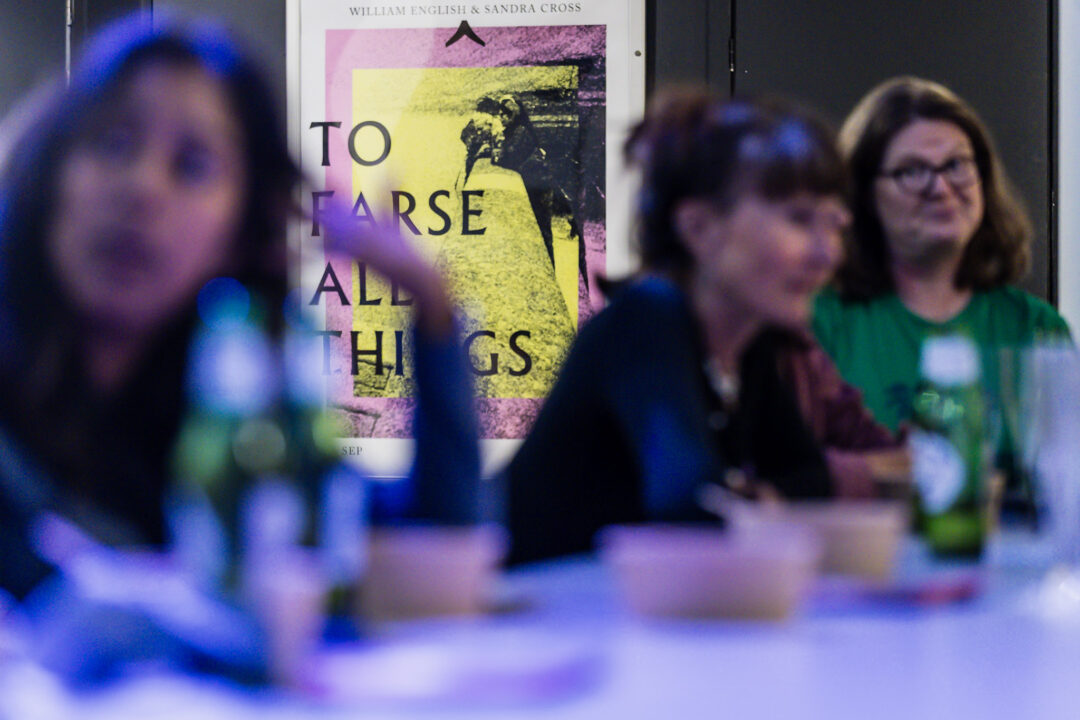
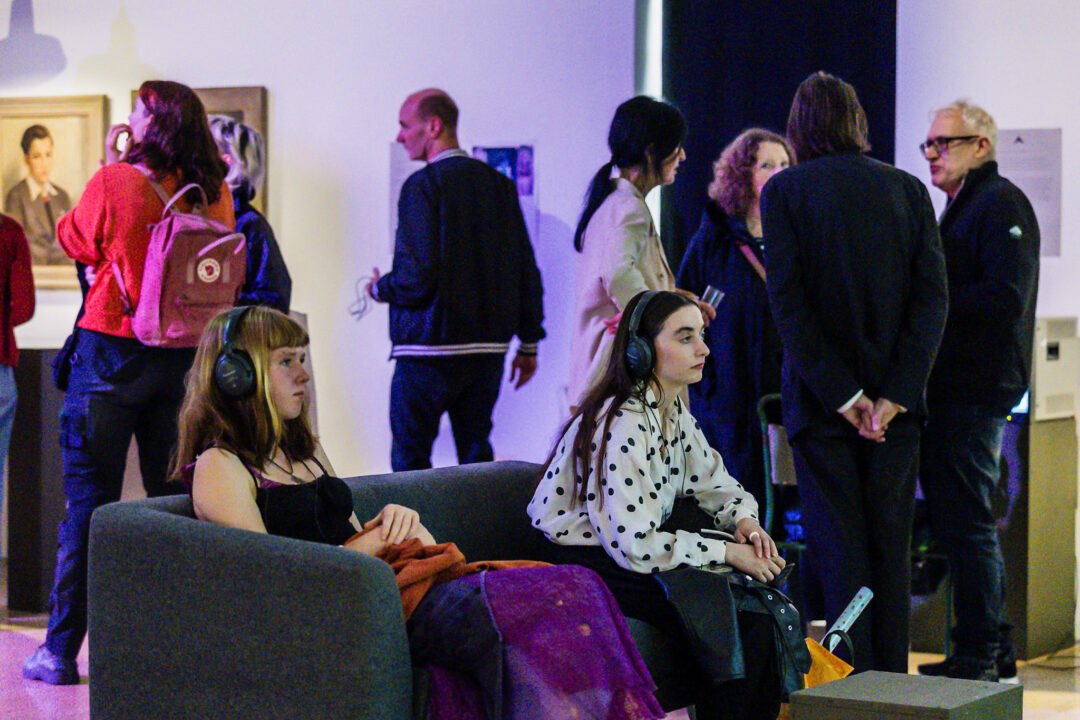
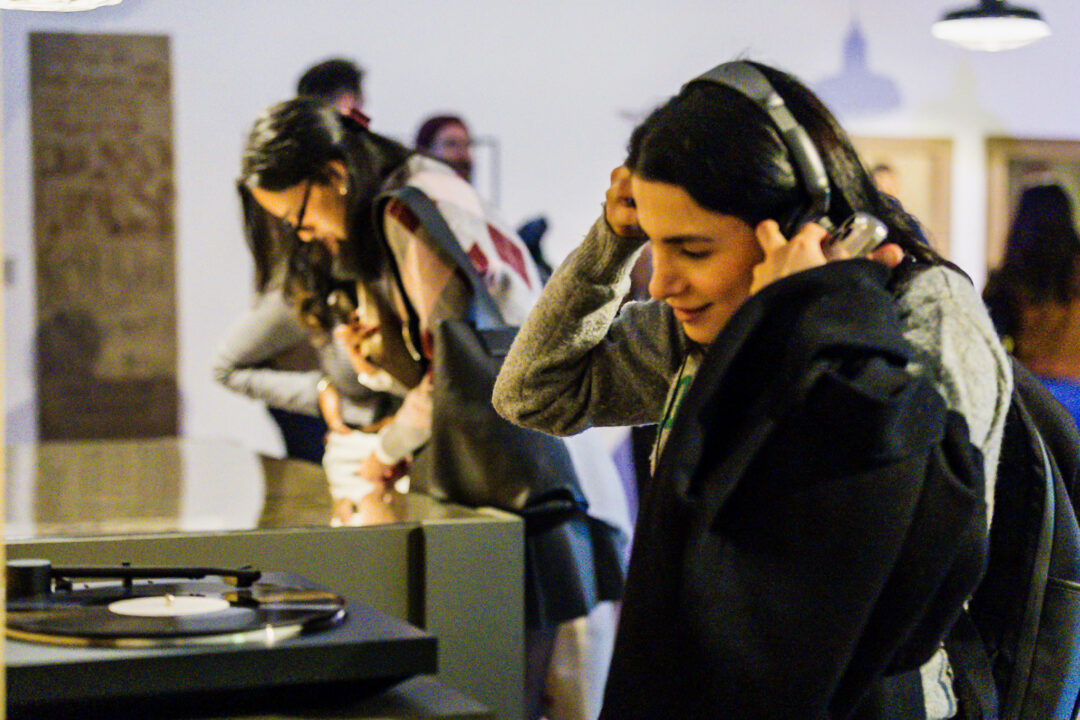
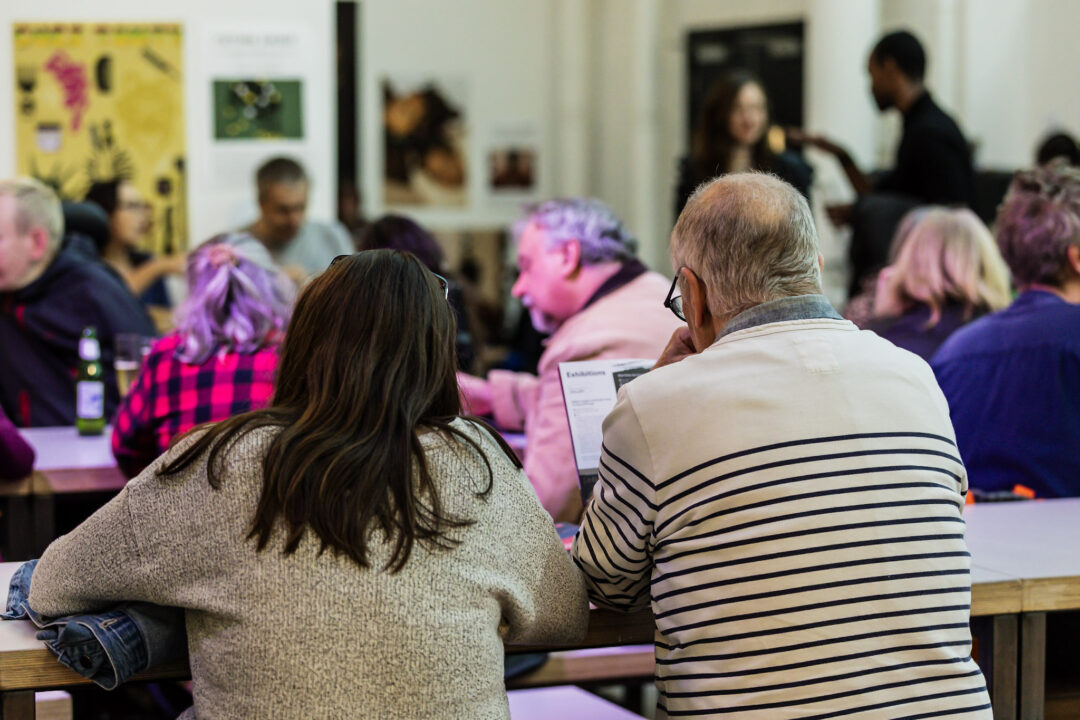
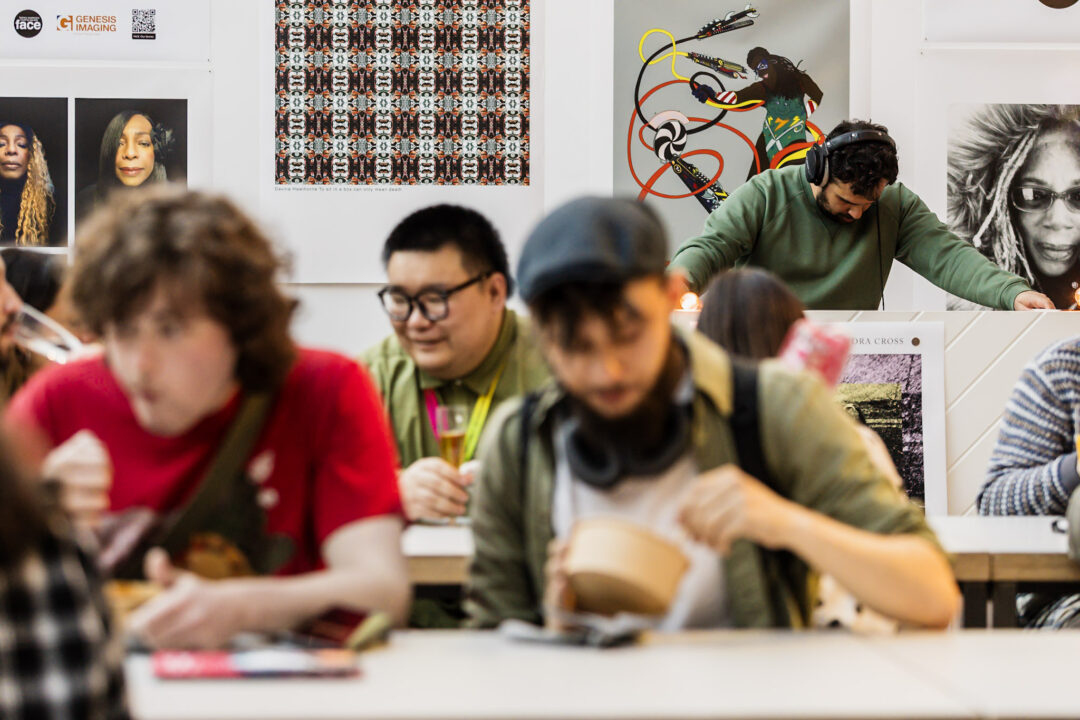
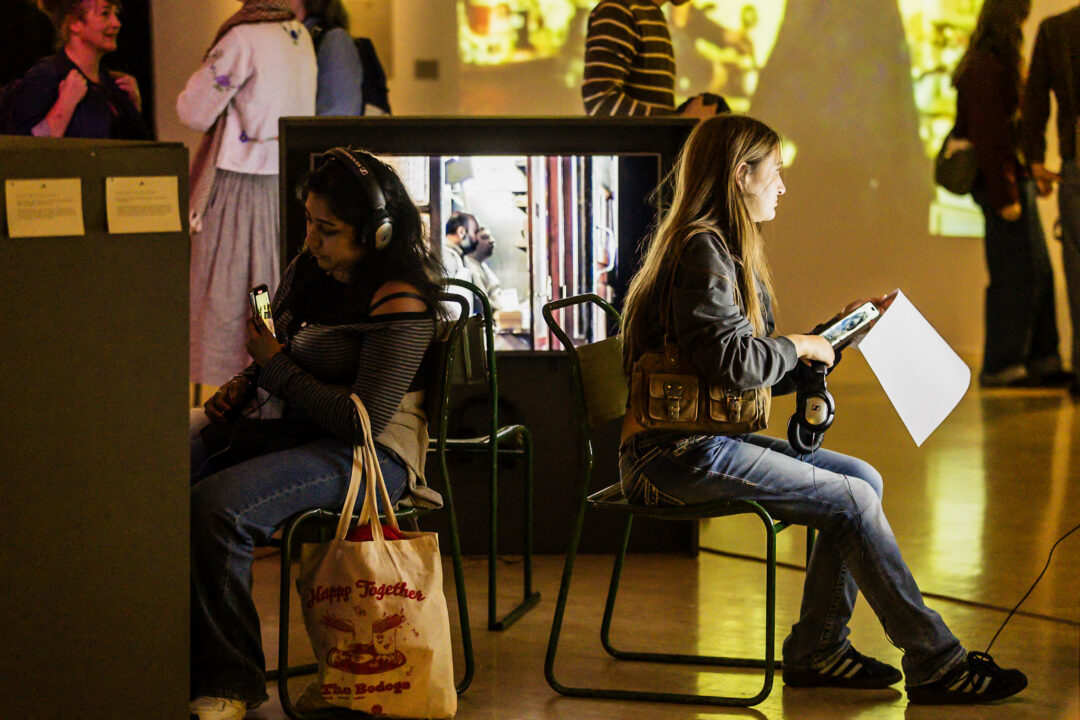
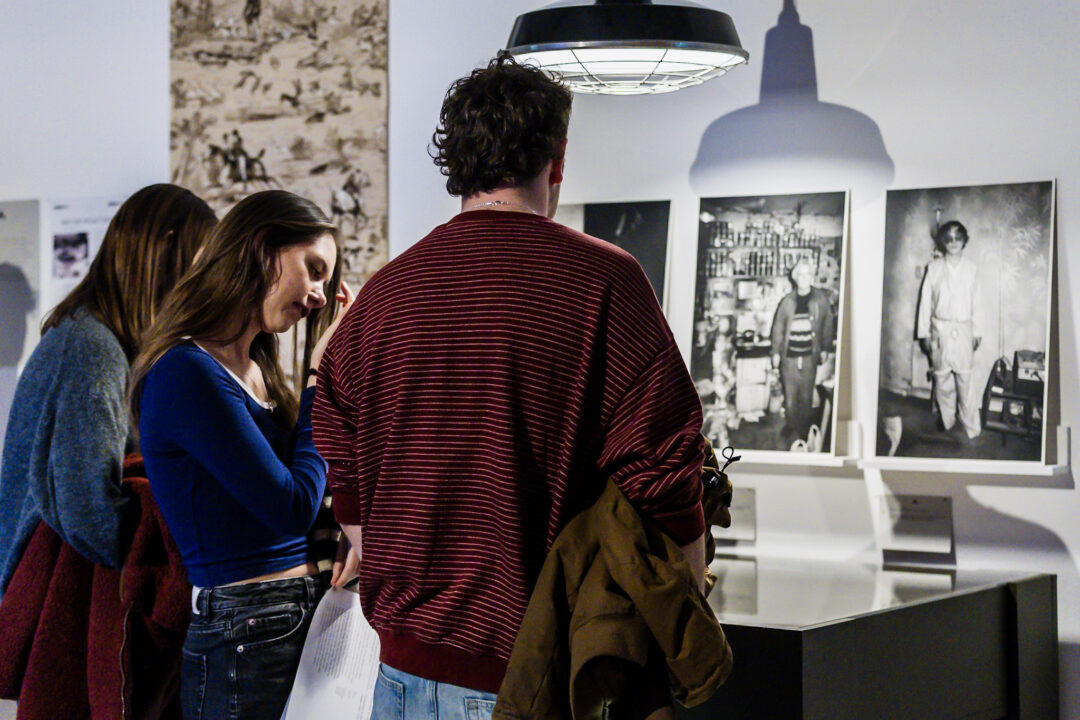
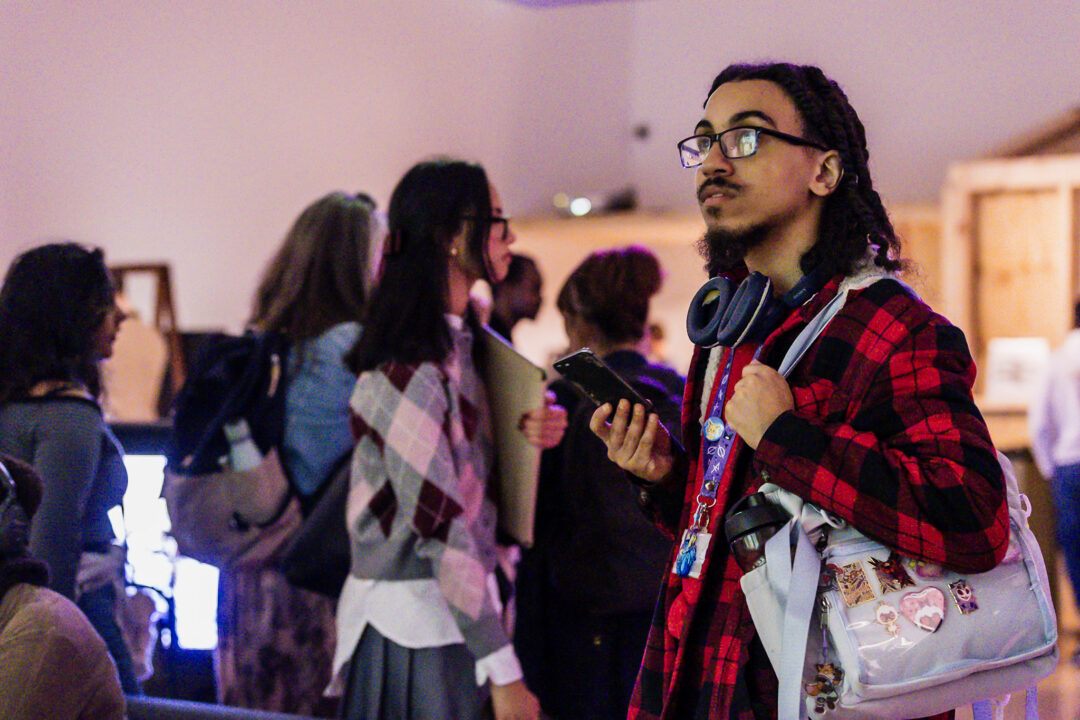
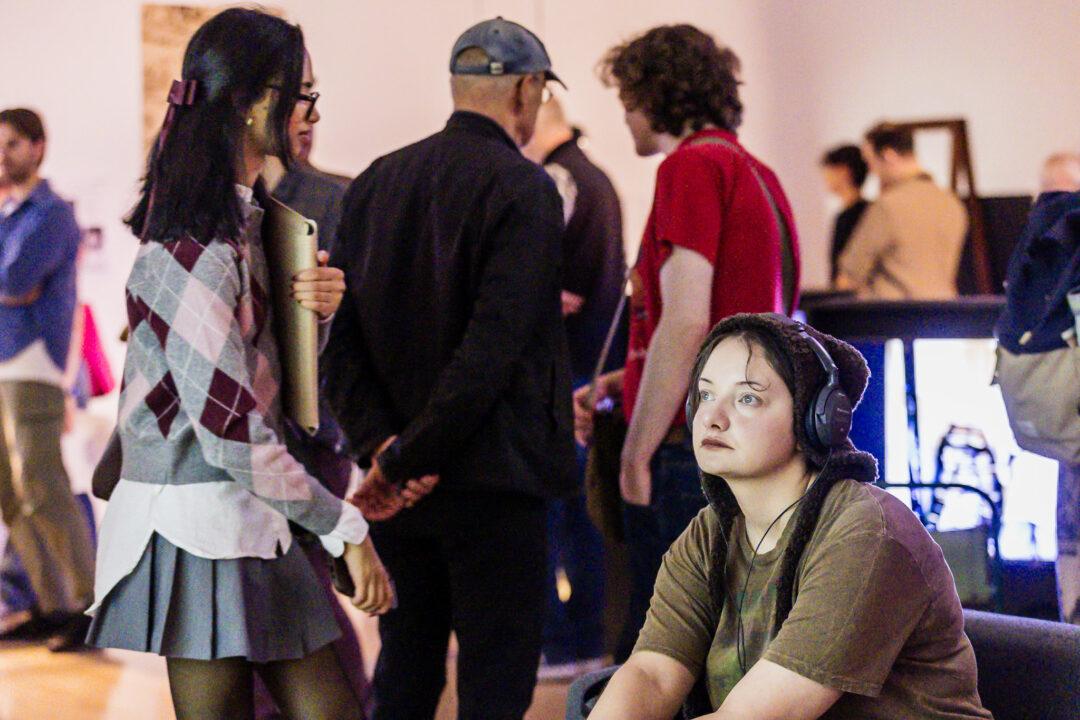
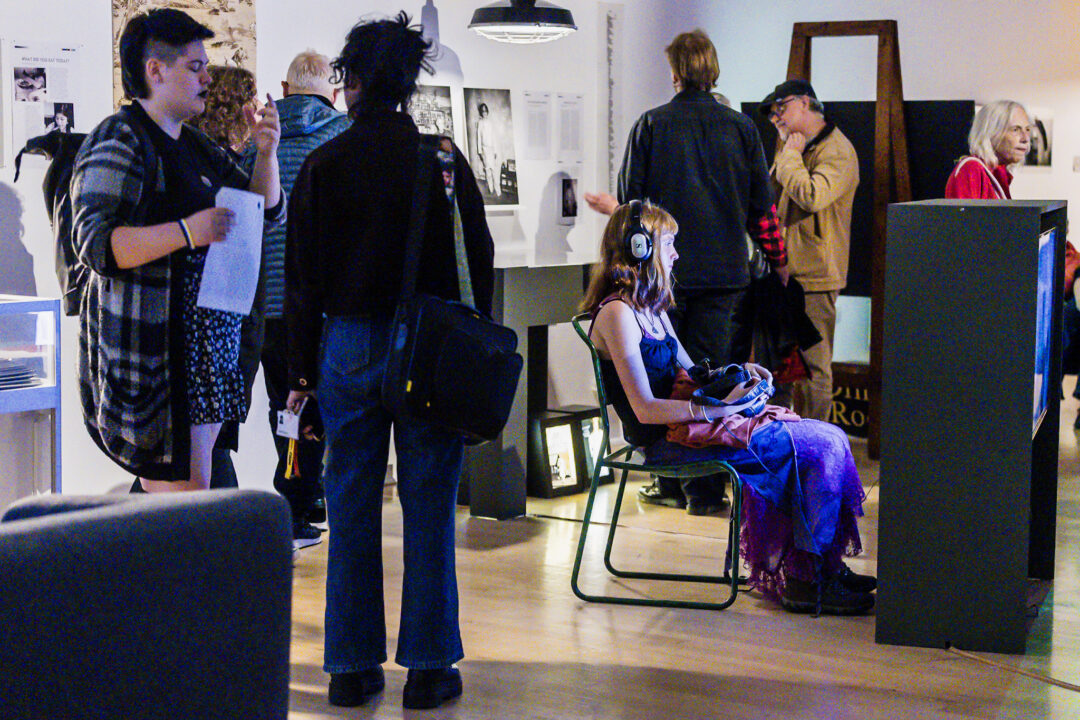
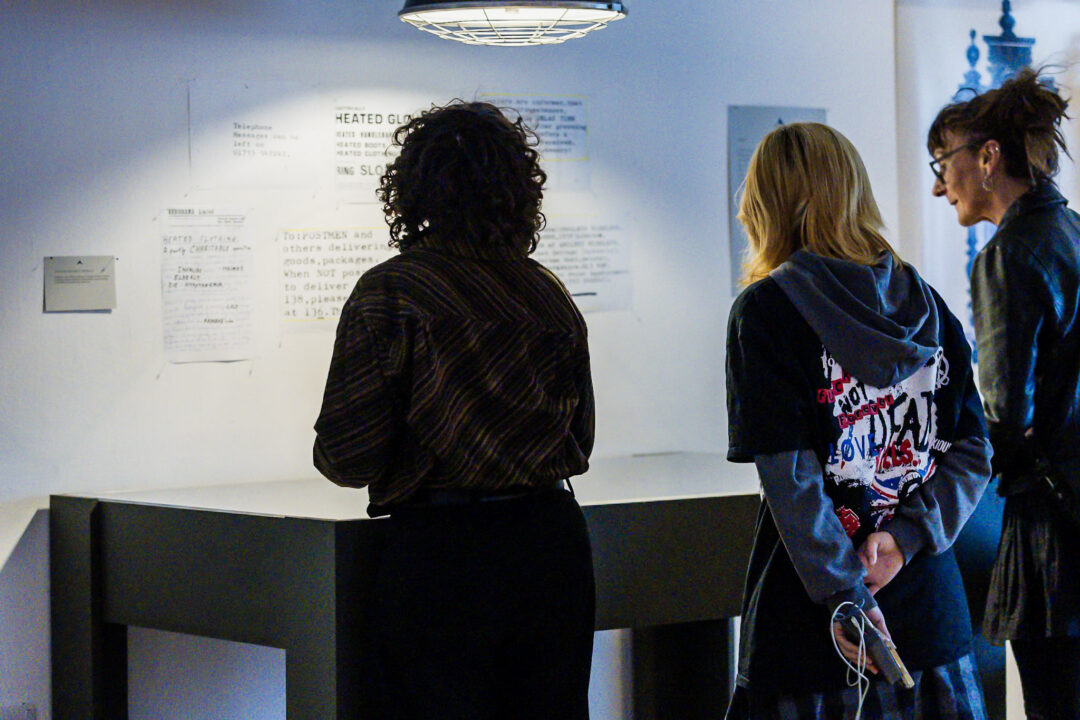
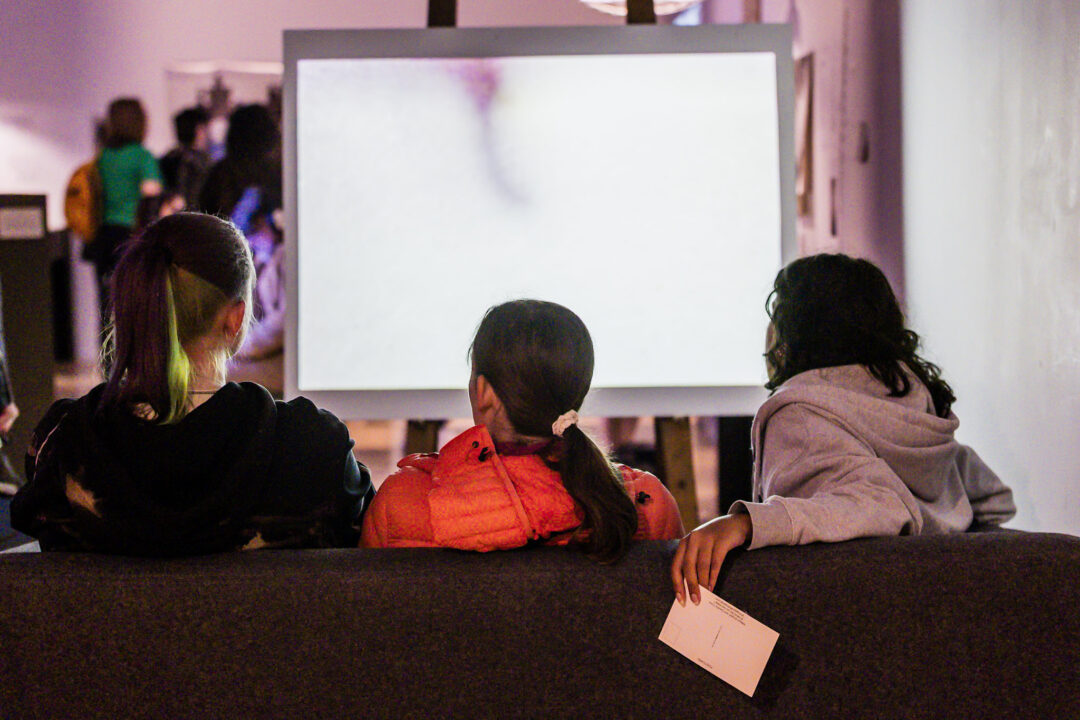
For the 28th instalment of the Bonington Vitrines series, we’re delighted to present Someone’s Doing Something, a project by London based curatorial, research and archival platform Gestures, developed in dialogue with writer Isabelle Bucklow.
This project, featuring artists such as Stuart Sherman, Simon Moretti, and Yvonne Rainer, will present a selection of work that explores gesture as a form of artistic expression. Whilst some gestures are recorded through notation or residue, others survive only in documentation or retelling.
The works in Someone’s Doing Something reflect a broad range of these approaches, from the formal to the informal, the scripted to the instinctive, and considers these against shifting times and contexts.
In considering the location of the Bonington Vitrines, as a space that is moved through by 100’s of people each day going about their daily business, this quote by theatre director Peter Brook is considered:
“I can take any empty space and call it a bare stage. A man walks across this empty space whilst someone else is watching him, and this is all that is needed for an act of theatre to be engaged” – Peter Brook.
Full list of artists: Simon Moretti, Allan Kaprow, Richard Schechner, Charlotte Moorman, Nam June Paik and Yoshi Wada, Mieko Shiomi, Sue Tompkins, Bruce McLean, Bruce Gilbert, with Angela Conway and Michael Clark, Stuart Sherman, Anastasia Coope, Yvonne Rainer, Ricky Jay.
Gestures is a London based curatorial, research and archival platform that has organised exhibitions, interventions and projects in locations as diverse as sidewalks in New York and Travelodge hotel rooms, as well as exhibition spaces such as the Postal Museum in London and 47 Bedford Street in London.
Gestures is currently conducting long term research into Situation, a space in London that existed in the 1970s that did early exhibitions with artists including On Kawara, Bruce McLean and Bas Jan Ader.
Along with colleagues WC2E9HA, The Everyday Press aka Bunker Basement and Whatever Anderson, Gestures will open the shared exhibition space Chequers in Summer 2025.
View checklist and text by Isabelle Bucklow here.
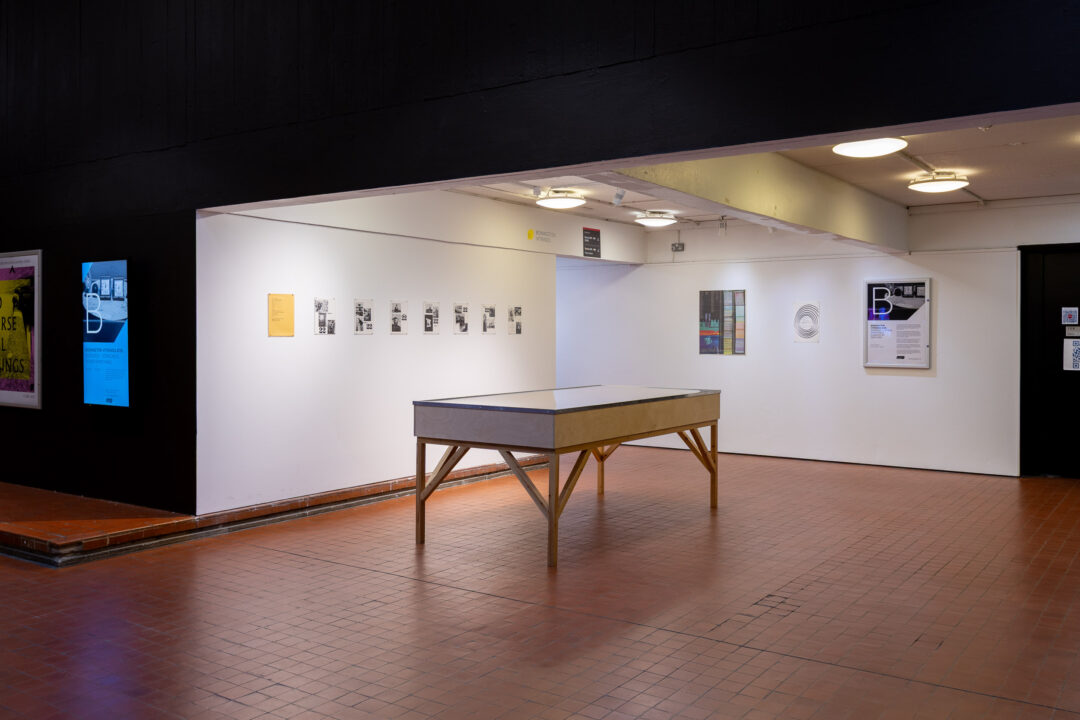
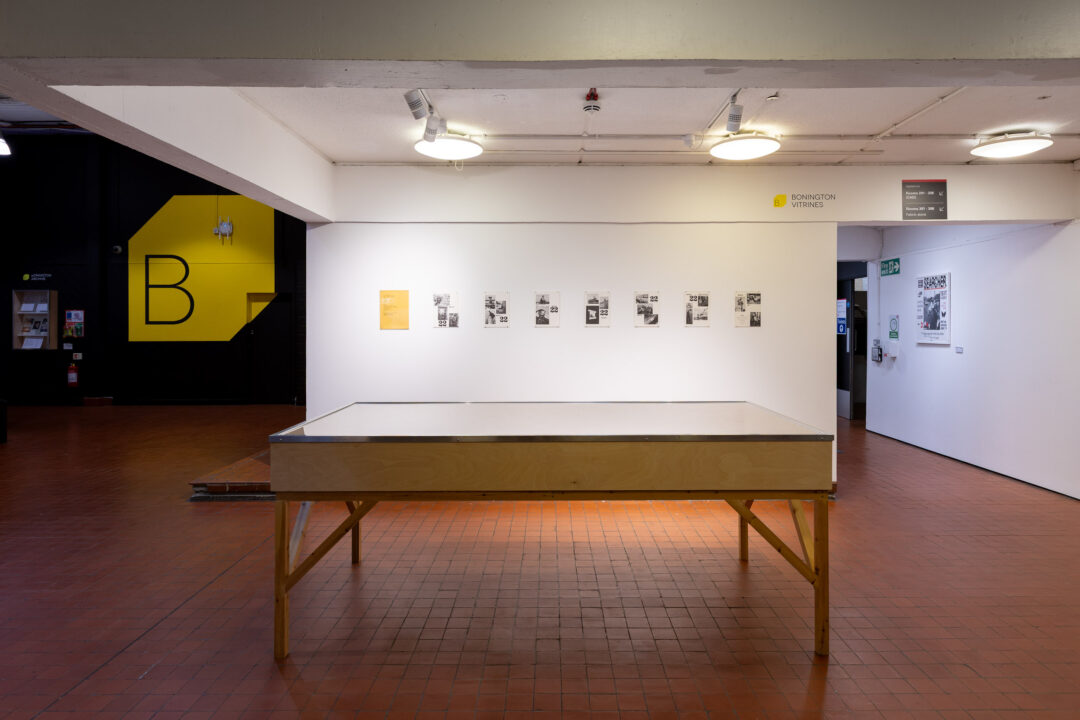
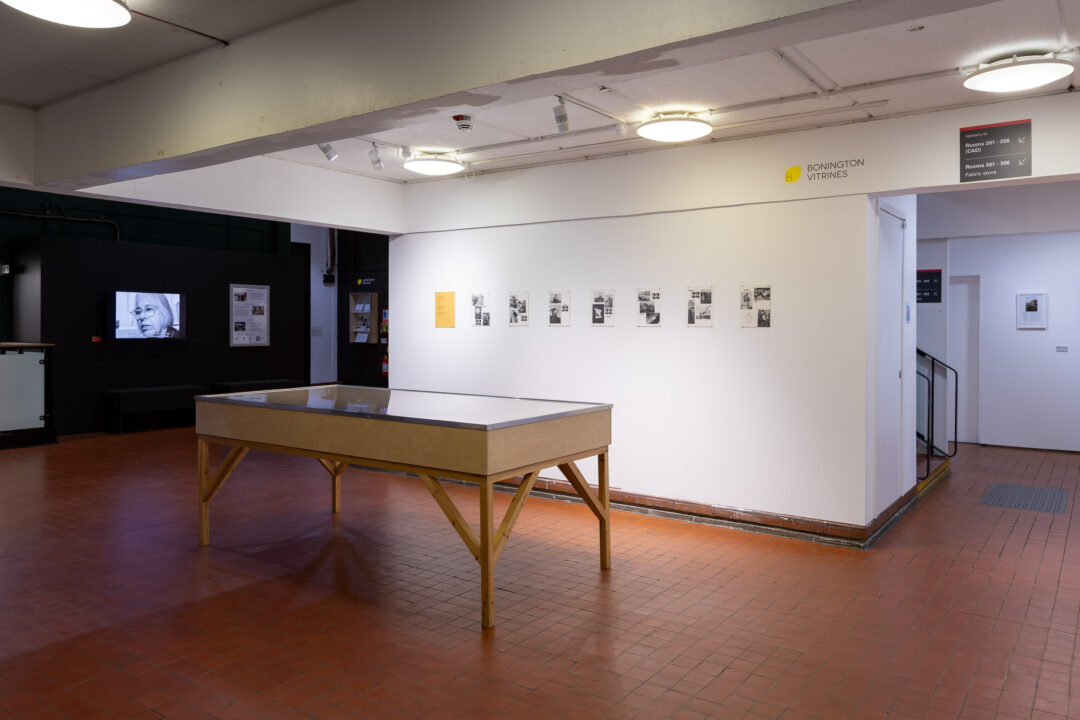
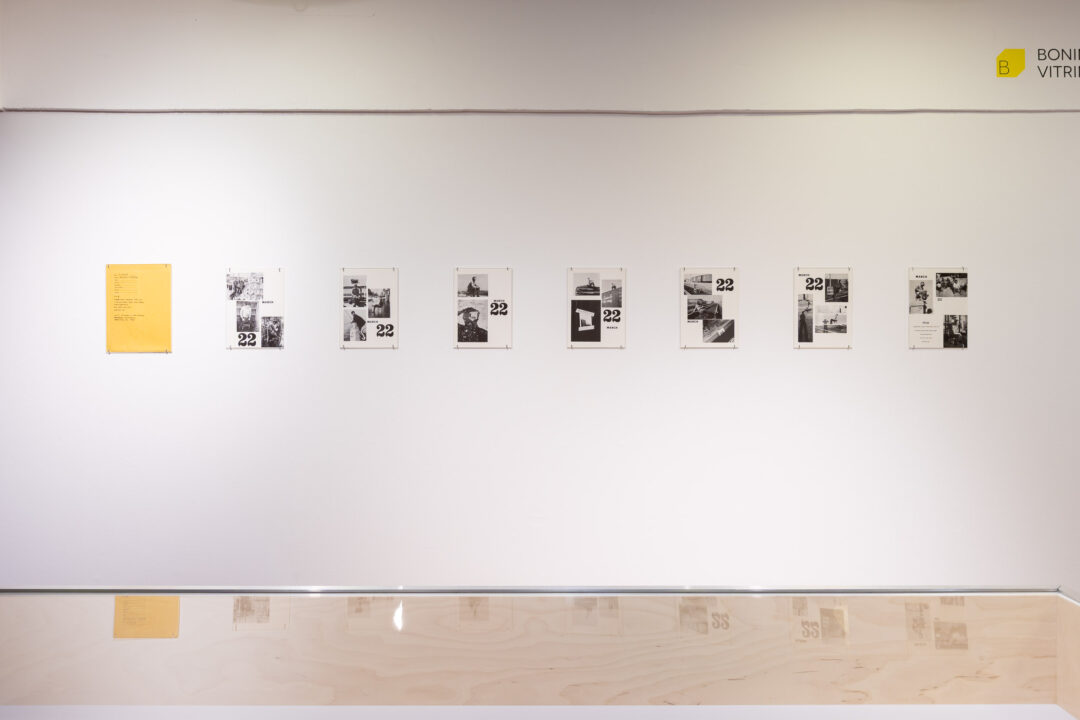
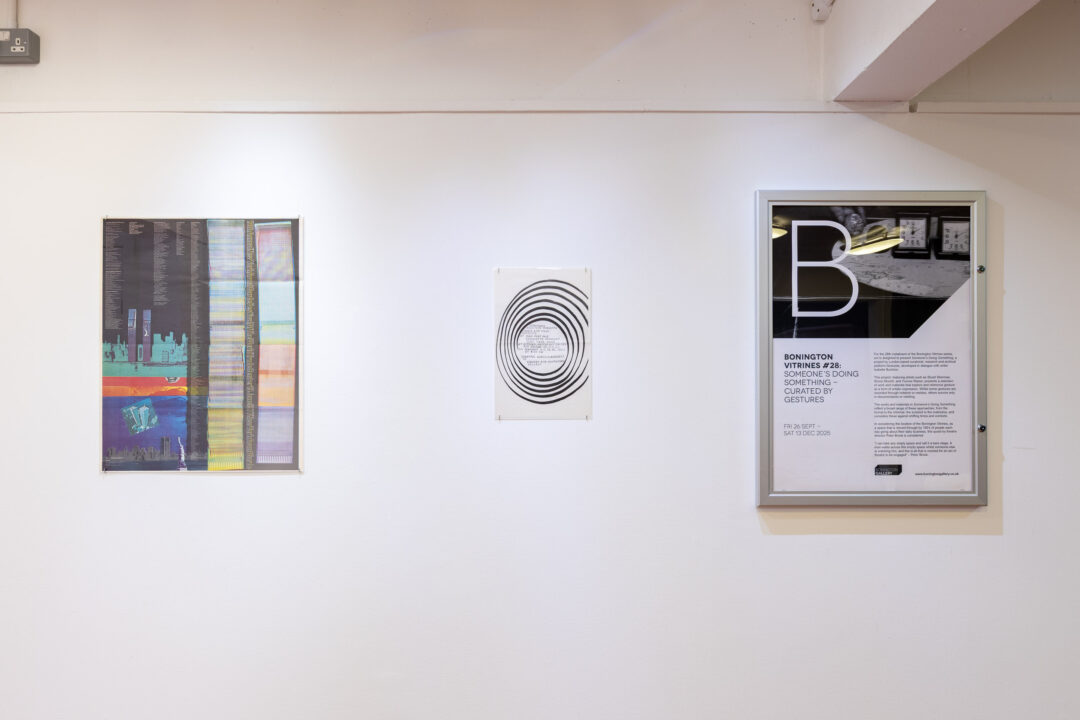
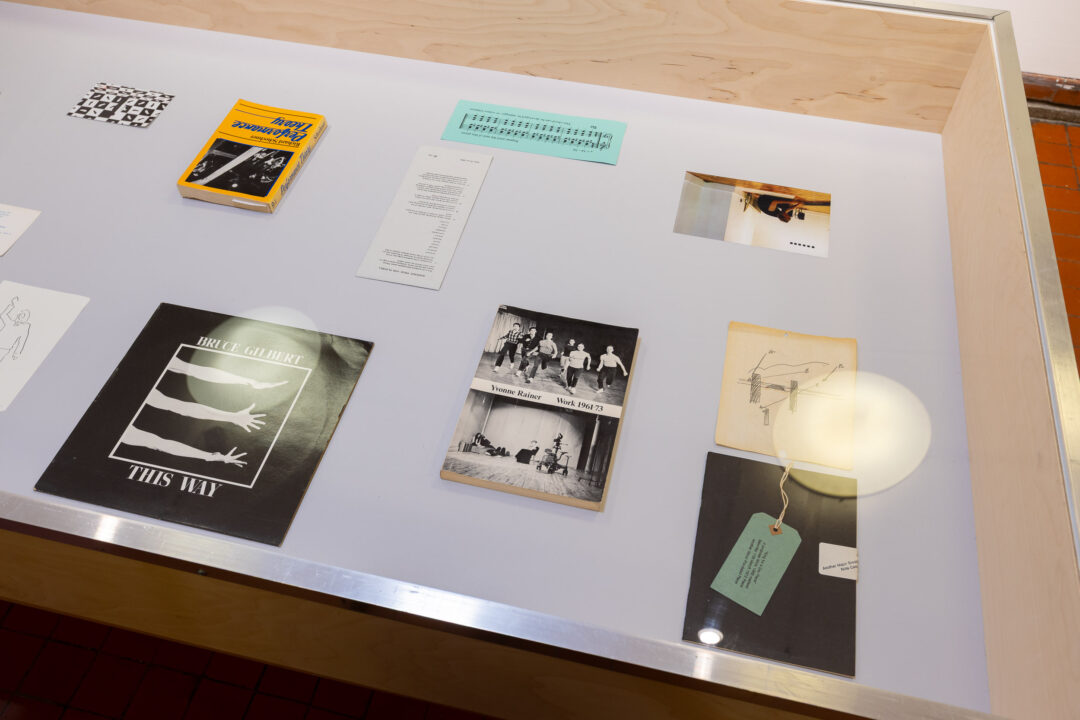
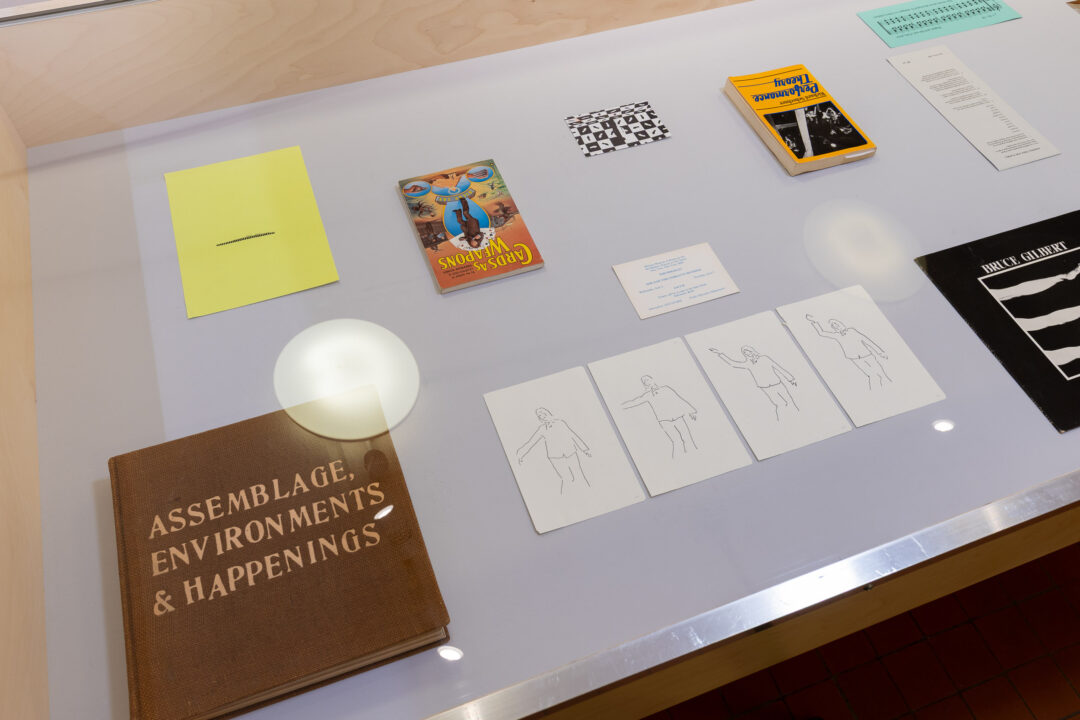
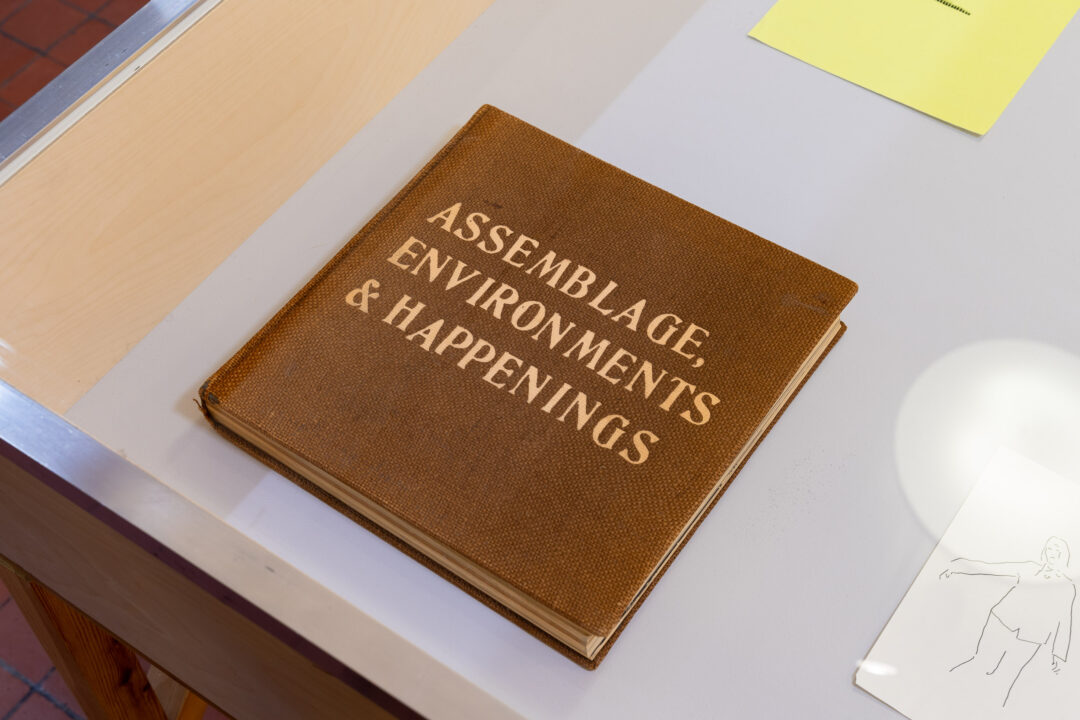
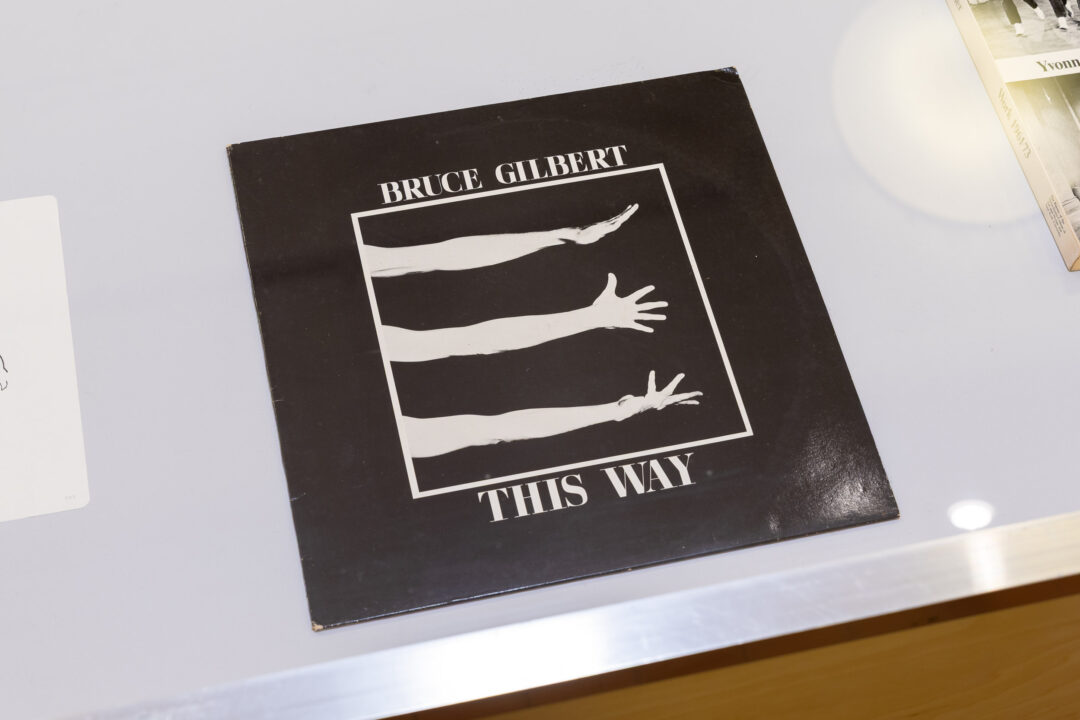
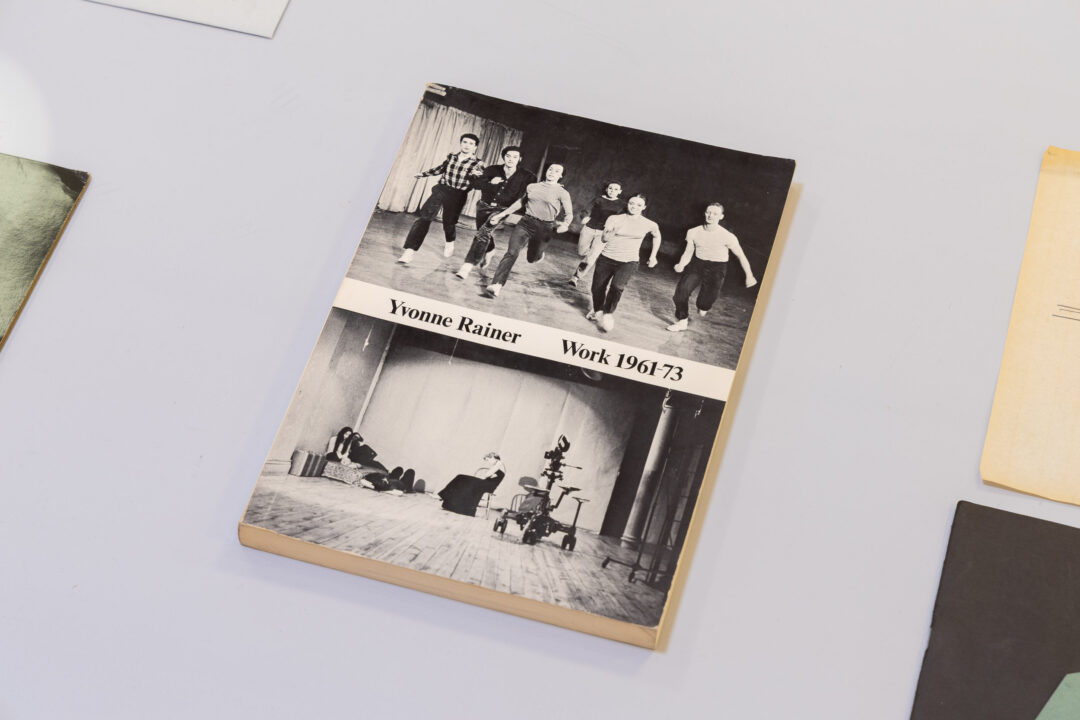
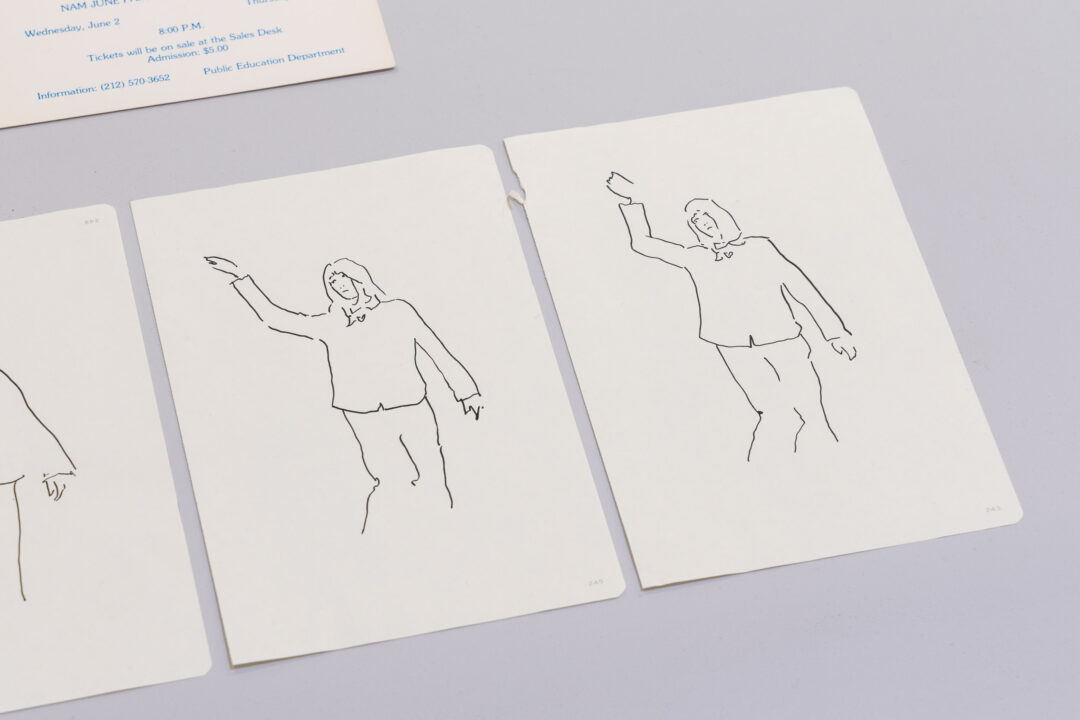
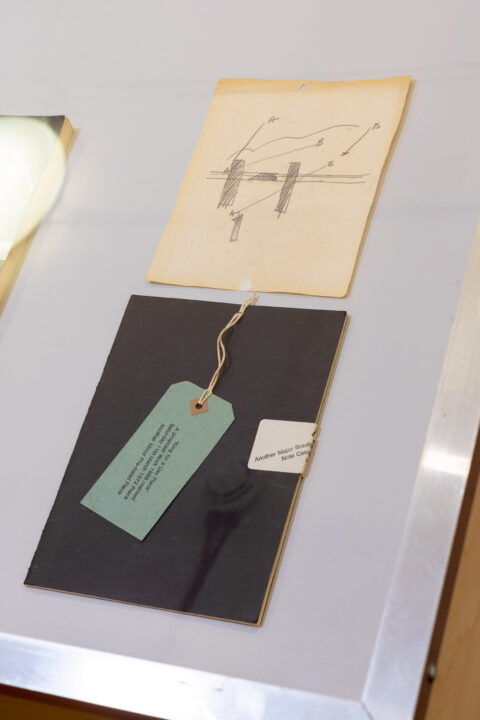
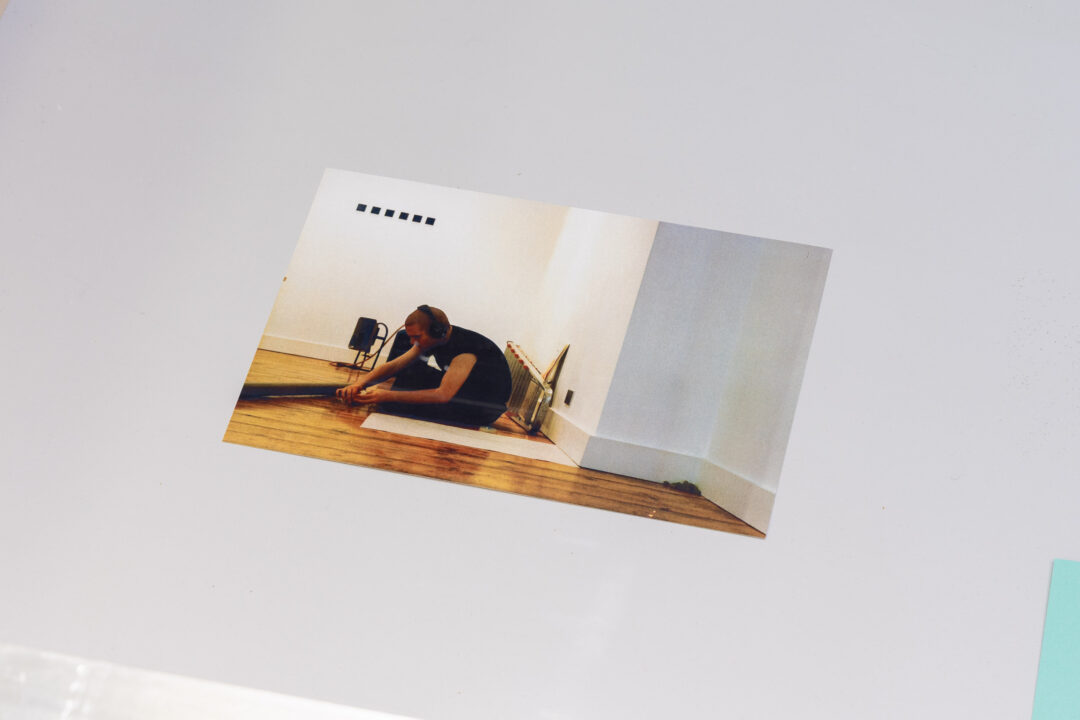
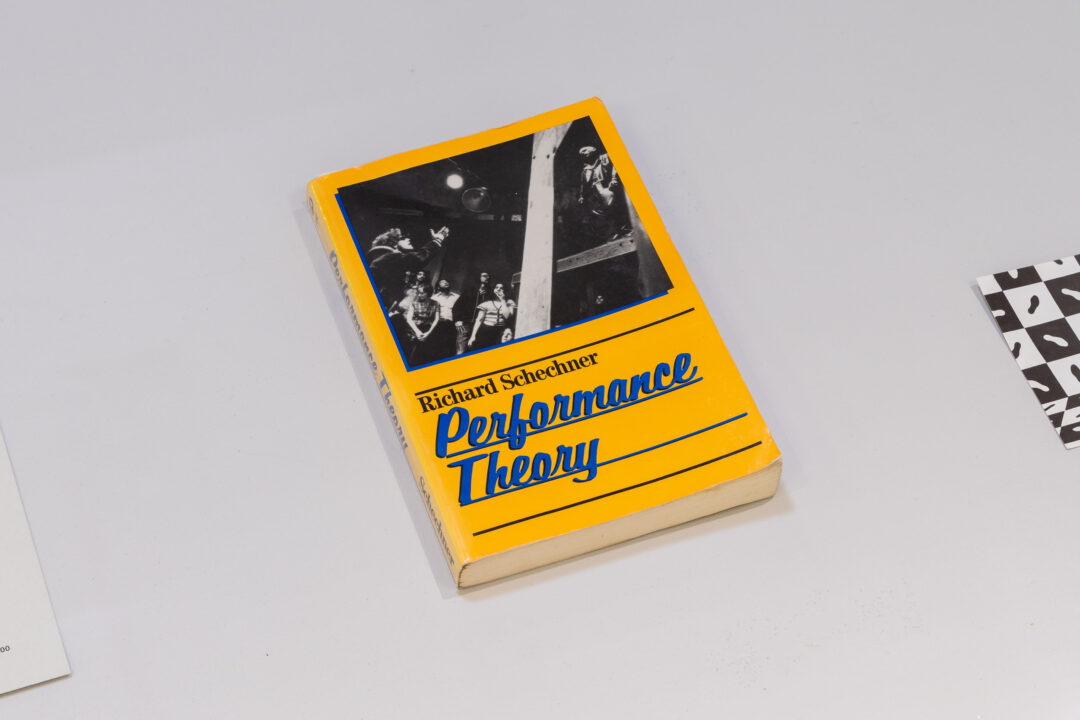
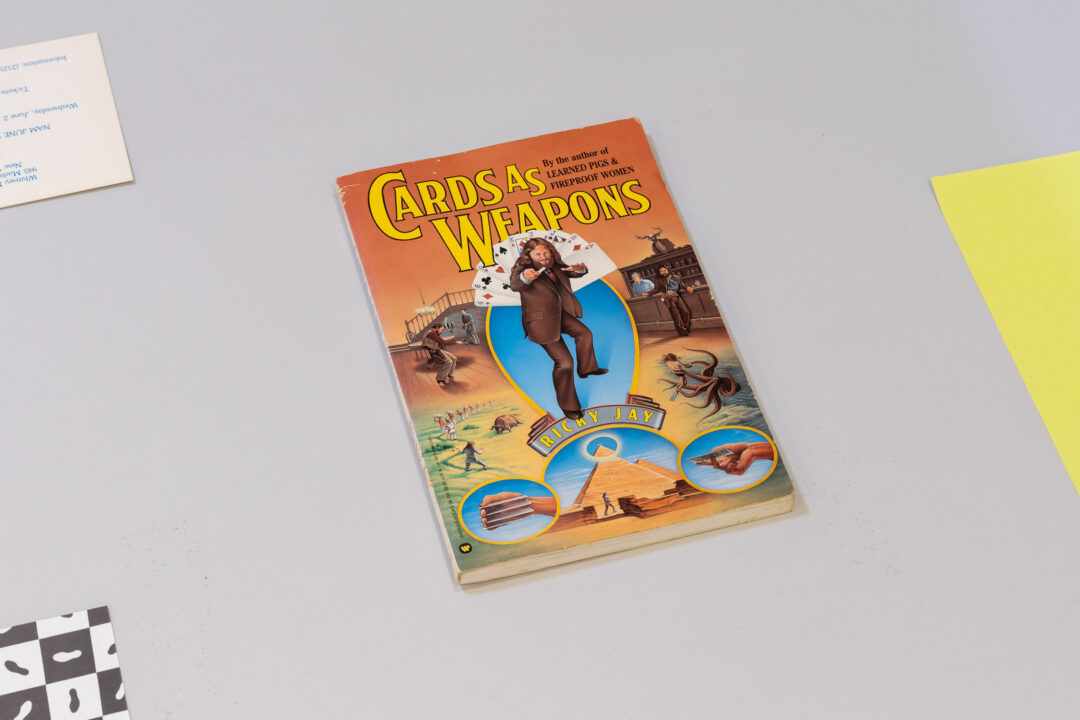
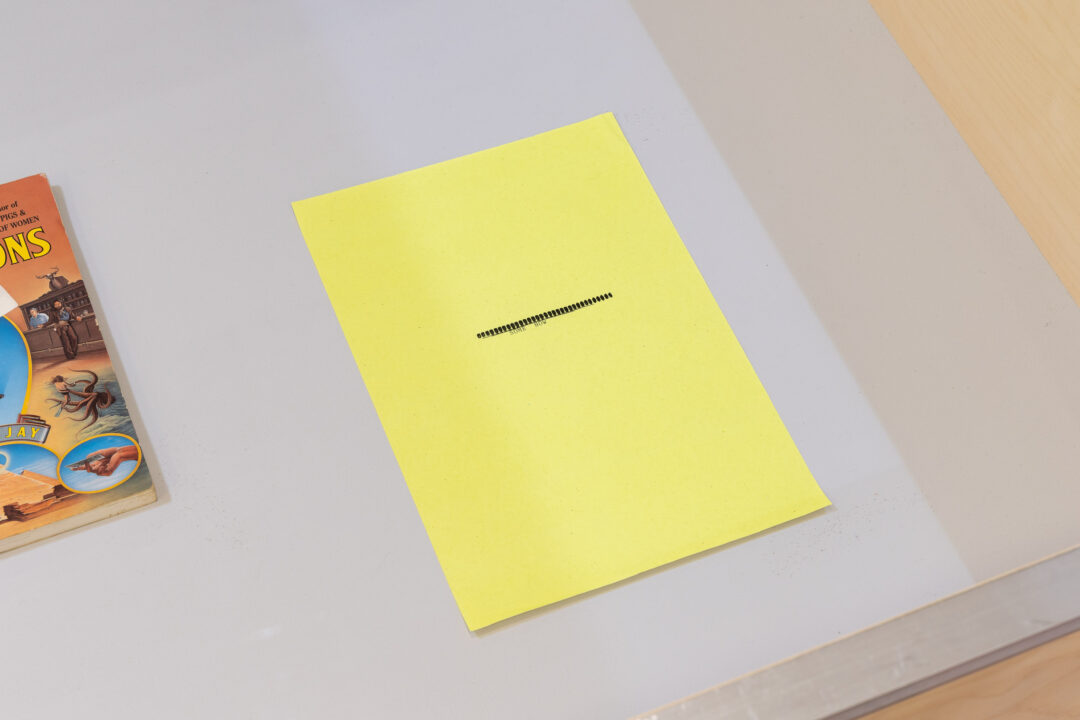
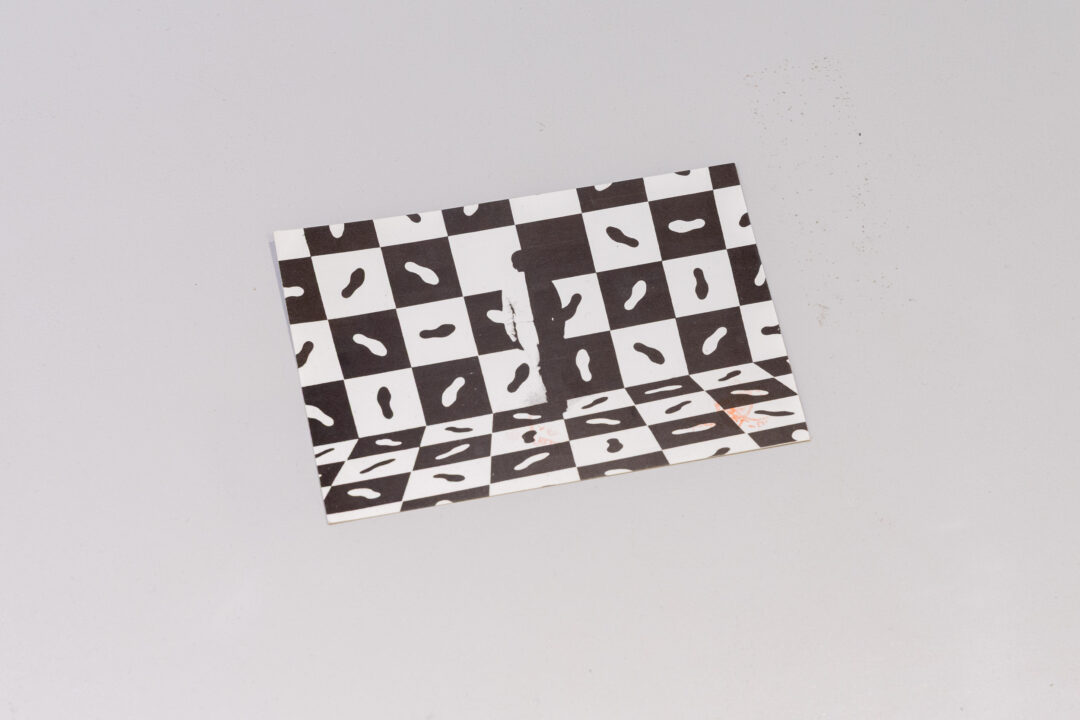
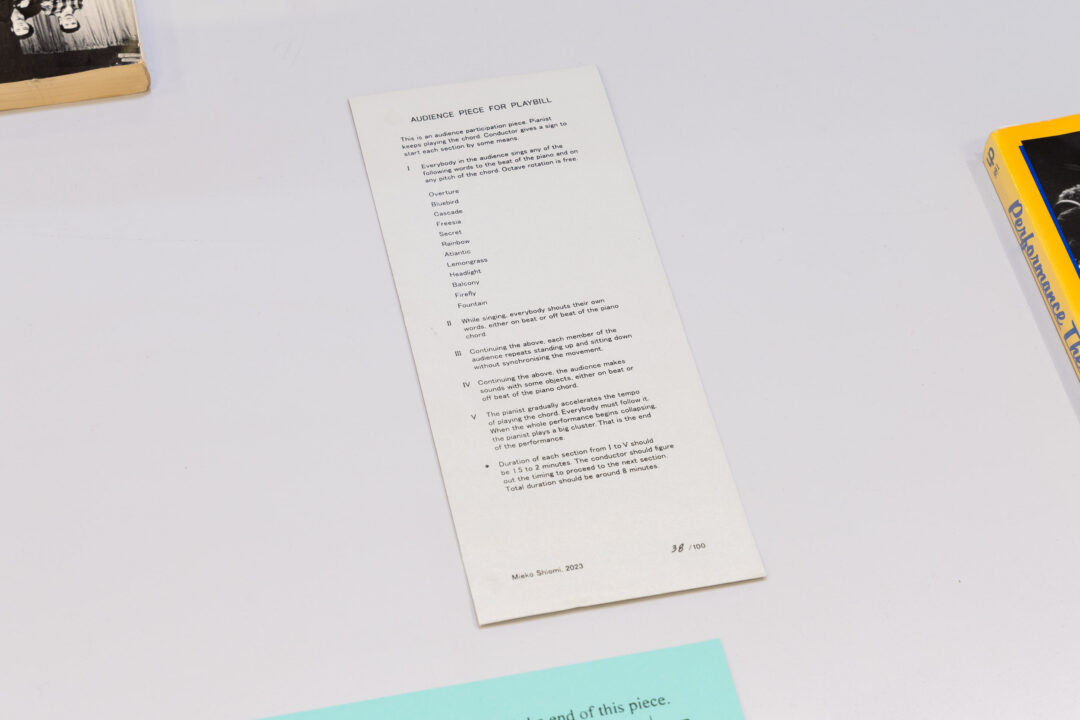
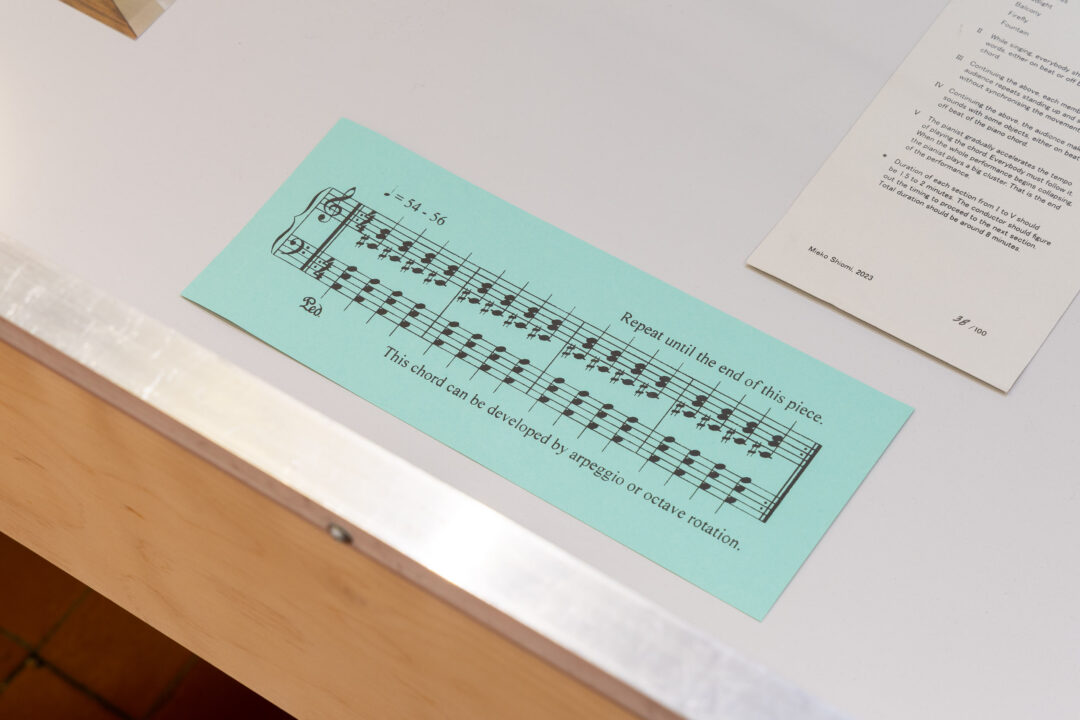
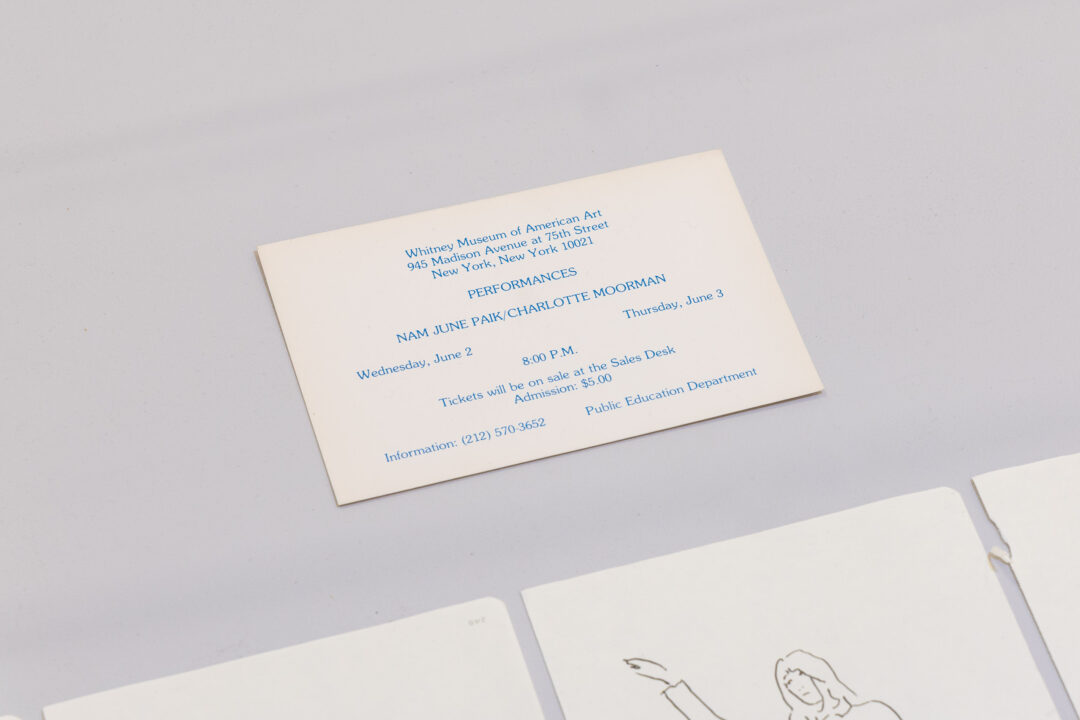
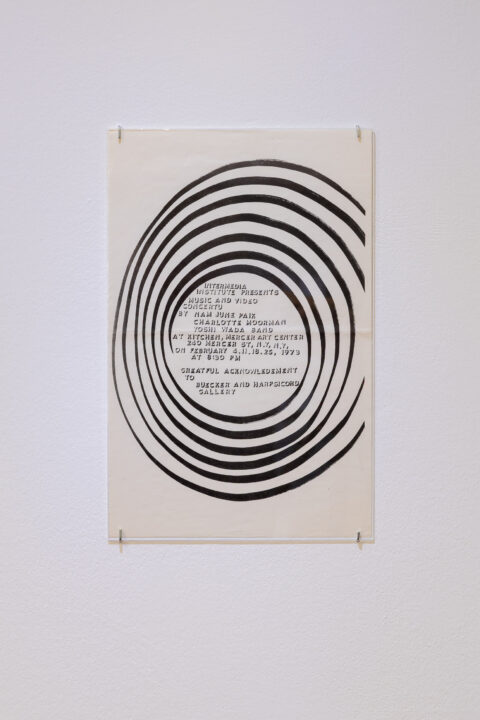
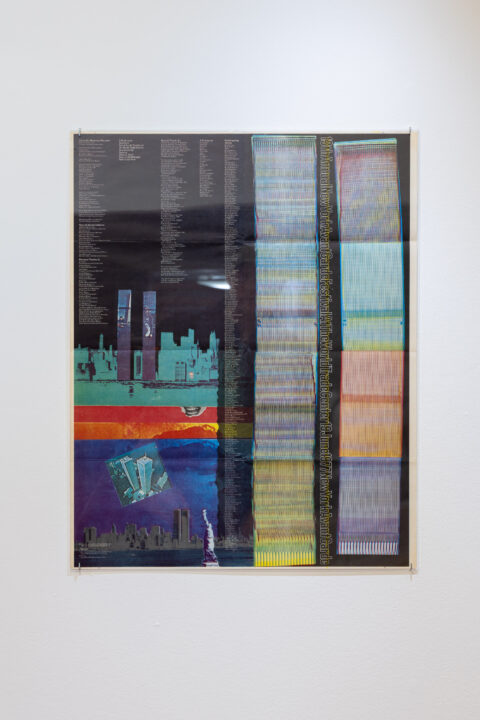
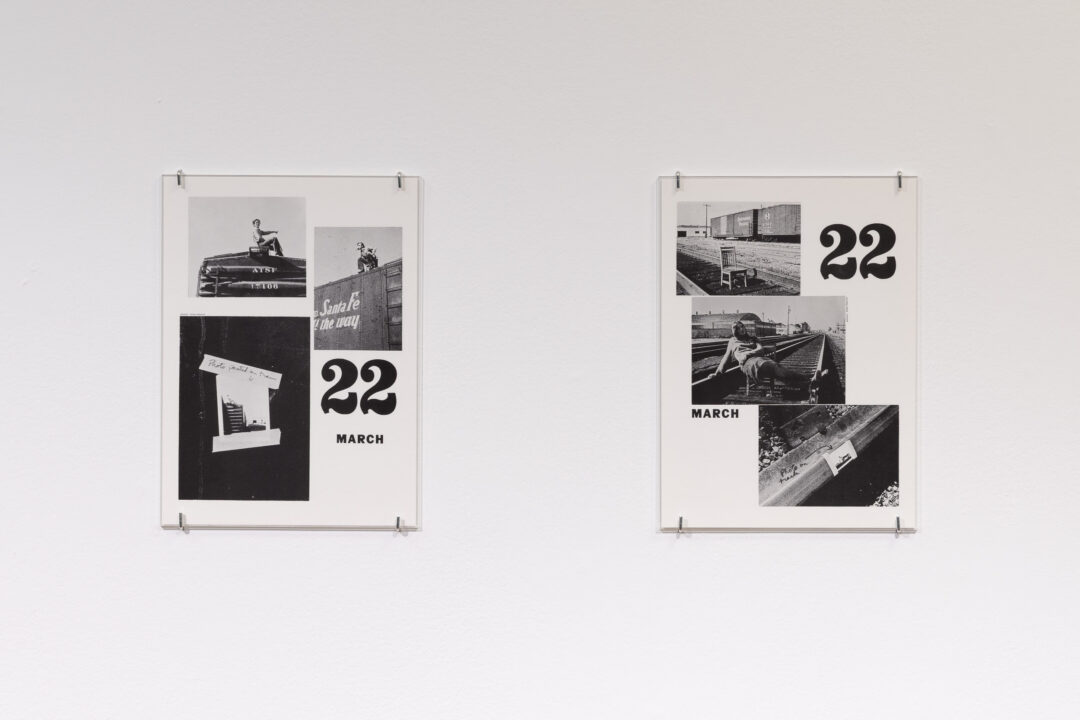
Image credit: Stuart Sherman, The Twelfth Spectacle (Language), photo by Nathaniel Tileston, 1980, as included in The Stuart Sherman Papers, 2025.
Join us for a free guided tour of Bonington Gallery’s latest exhibition with BSL interpretation.
Book your free place and enjoy a tour of Bonington Gallery’s first exhibition of the season, To Farse All Things a joint exhibition by William English and Sandra Cross, led by the Gallery’s Director, Tom Godfrey.
Along with an introduction to the exhibition, Tom will talk through the accompanying Vitrines exhibition, Someone’s Doing Something.
This event will last up to an hour. Please meet inside Bonington Building in the foyer space outside the Gallery doors at 12.55 pm. Free and open to all, booking required.
Bonington Gallery is delighted to present To Farse All Things, a two-person exhibition by William English and Sandra Cross, bringing together film, photography, sculpture, sound, and archival material formed independently and collaboratively over several decades.
To Farse All Things offers a rare opportunity to explore the intertwined lives and practices of two artists whose work resists categorisation. Through a shared and uncompromising commitment to experimentation, hospitality, and social engagement, English and Cross have cultivated a body of work that is as generous as it is radical. Their ten-year project, The Dining Room, can be seen as a living piece of performance art—emblematic of their broader practice which questions the boundaries between roles and purpose of cultural space. The lines between cast & audience, host & guest, artist & participant are constantly shifting and being shifted.
William English (b. Leicester) moved to London in the early 1970s to study filmmaking. In 1975, he produced a now-iconic series of photographs of Vivienne Westwood in her and Malcolm McLaren’s seminal punk boutique, SEX. The series, Venus with a Severed Leg, has become synonymous with the era, with writer Paul Gorman describing it as “the holy grail of punk photographs.”
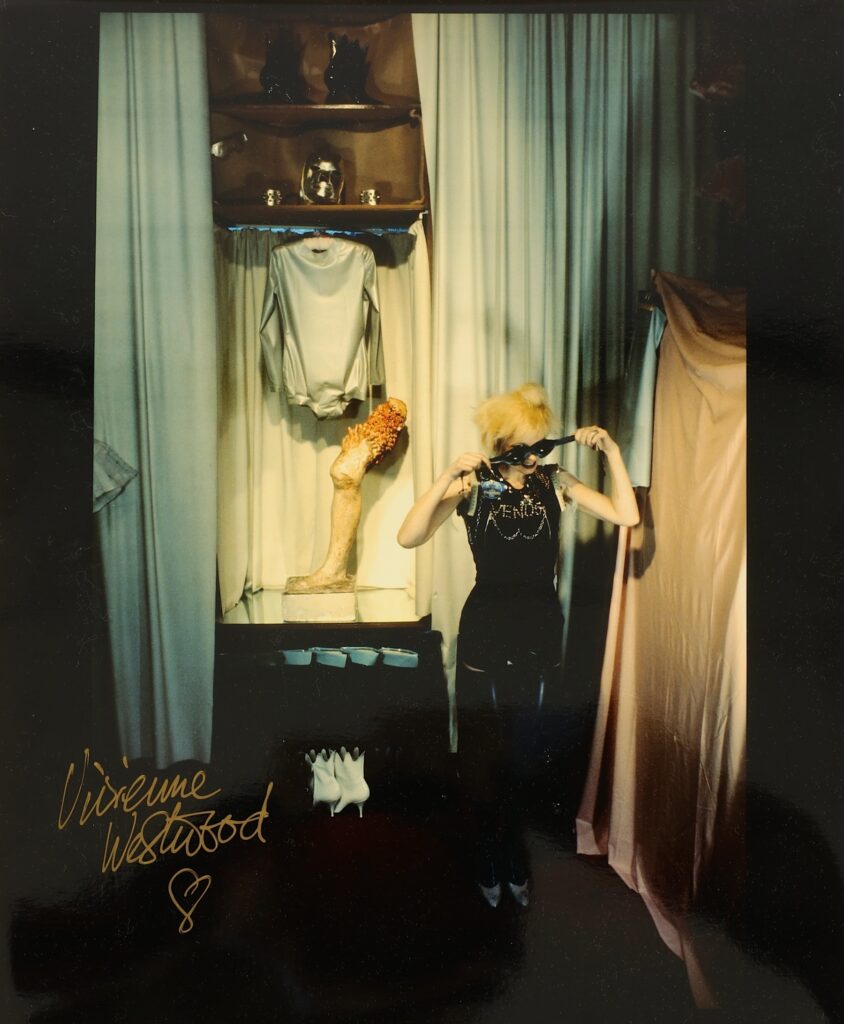
Sandra Cross (b. Northamptonshire) began her career as a copywriter before relocating to London in the mid-1970s, where she worked for a number of prominent literary agencies and publishers. Her professional life introduced her to a network of West End eateries, sparking a deep and lasting interest in food as both a social and cultural medium. She began hosting suppers at home for friends and acquaintances, laying the foundation for a lifelong exploration of food as an intersection for connection, memory, and artistic expression.
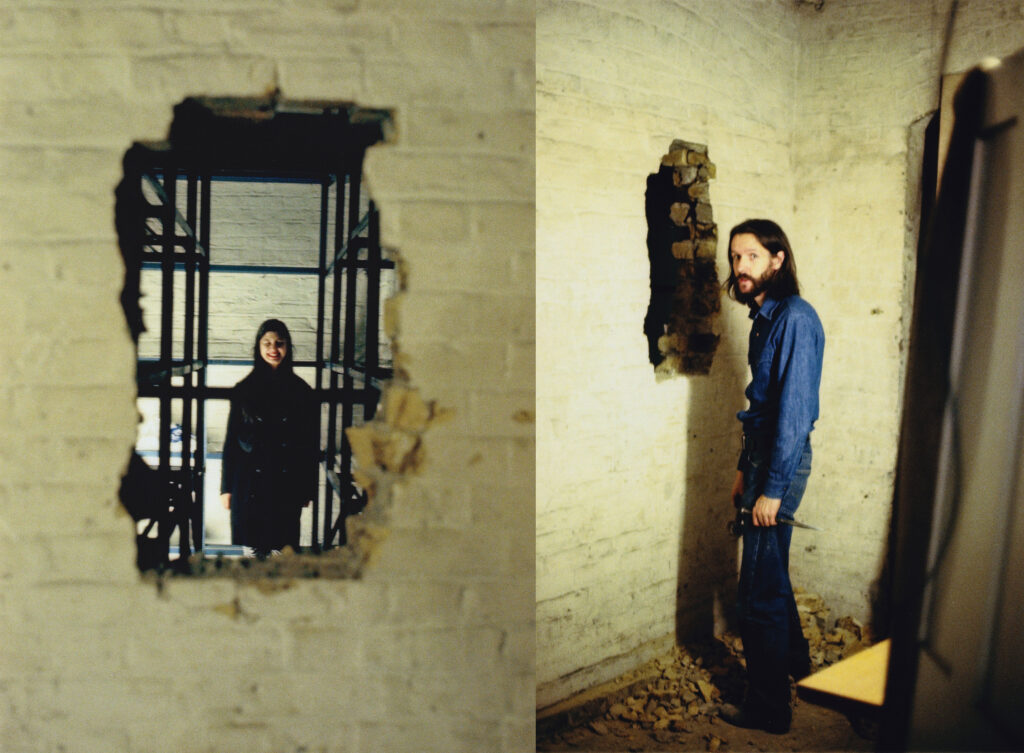
The pair met in the late 1970s and soon embarked on a shared project that would channel their shared interests and become a defining period in their collaborative practice. Motivated by a shared excitement for hosting and an interest in organic and whole foods (progressive for that period), they pooled their limited resources to renovate the basement of a Victorian building near London’s Borough Market. The result was The Dining Room—a groundbreaking vegetarian restaurant (though they resisted the label) that operated for a decade. Serving dishes such as Kasha Knish amongst a programme of exhibitions, screenings, book launches, and gigs, The Dining Room was more than a restaurant. Its ethos was radically inclusive: customers ranged from Shakespeare’s Globe founder Sam Wanamaker and underground filmmaker Kenneth Anger to nurses finishing late shifts at nearby Guy’s Hospital. Staff were often friends who may have struggled to find work elsewhere, and leftover food was regularly shared with those in need.
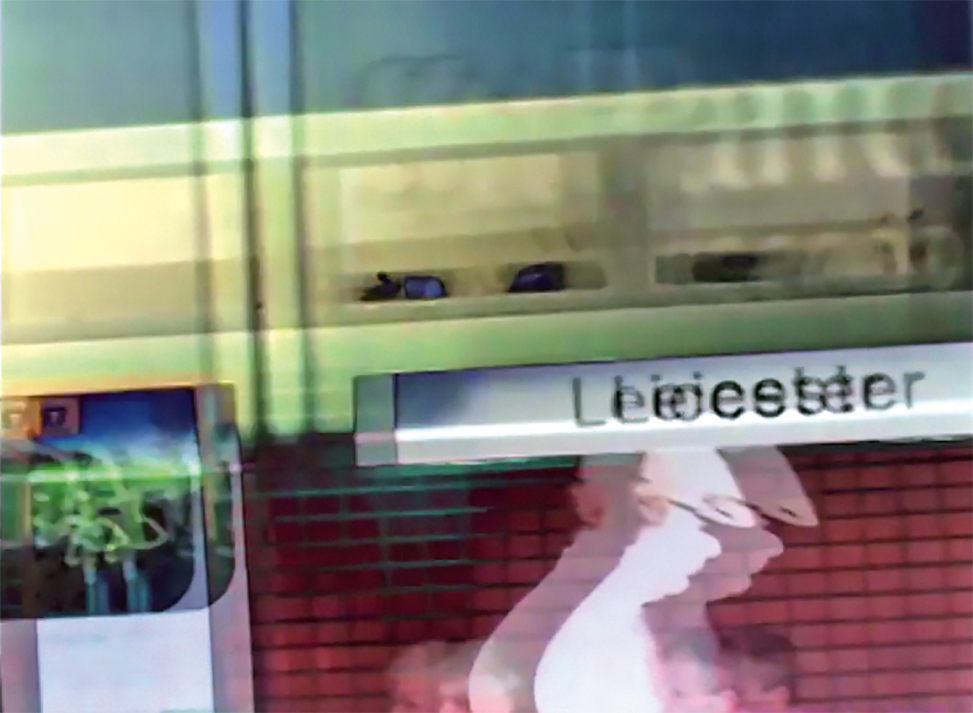
Following the closure of The Dining Room in 1990, Sandra continued to explore food as a subject through works such as What Did You Eat Today?, a series of filmed interviews examining personal relationships with food. Other notable works include MMs Bar (Trunk Records, 2011), a vinyl record composed of train catering announcements recorded during weekly journeys between London and Leicester, and Limbo (2019), a film narrated from journals written during this period whilst Sandra’s mother’s health was in decline, layered over footage of those same train journeys.
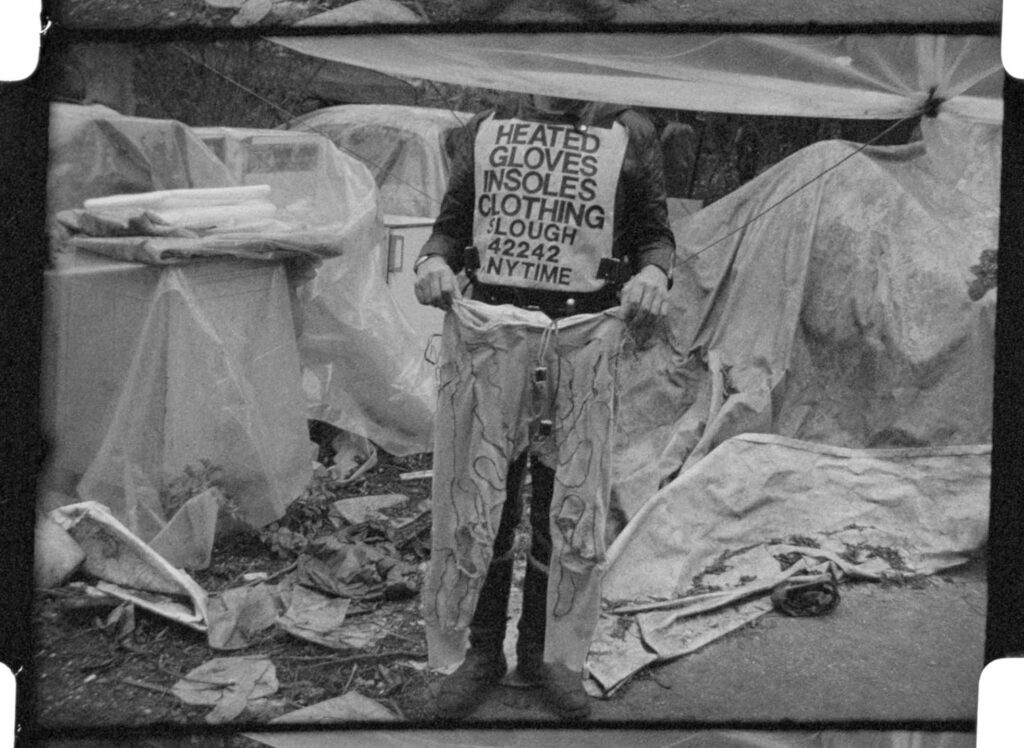
William continued to make films and work as a rare book dealer. His film Heated Gloves (2019) documents his friend and Dining Room regular Maurice Seddon, an eccentric inventor known for creating electrically heated clothing. The film features both intimate footage and clips from Seddon’s appearances on international talk shows, including David Letterman and Johnny Carson. After Seddon’s death, William discovered a trove of recorded phone calls spanning 30 years, which he compiled into the vinyl release The Seddon Tapes, Volume 1 (2018). These recordings—such as the surreal and humorous “Chest Freezer” exchange—formed the basis of William’s approach to his long-running Resonance 104.4 FM radio show Wavelength, which he has hosted for 15 years.
In 2020, William published Perfect Binding, a psychographic & counter-historical portrait of Leicester and changing attitudes towards fashion, music and art of the 1960’s and beyond, told and reflected through the lives of his family and childhood friends, including BOY boutique co-founder Stephane Raynor, artist and eccentric Jim Mellors (aka Victoria Ashley), and the late fashion photographer David Parkinson.
On the occasion of the exhibition, a follow-up to Perfect Binding entitled To Farse All Things (Designed by Daniel R. Wilson) will be published and made available from the gallery. This will be an anthology of work, interviews, and articles and is intended as a companion piece to the exhibition.
A broad selection of films by William & Sandra have been archived by LUX, an arts organisation that supports and promotes visual artists working with the moving image.
Exhibition curated by Tom Godfrey, Curator & Director of Bonington Gallery.
William English is a Leicester-born filmmaker, broadcaster, bookseller and co-founder with Sandra Cross of the organic vegetarian restaurant, The Dining Room (1980-1990). He is curator of the Captain Maurice Seddon (Royal Signals) archive, audio selections from which have been released as The Seddon Tapes (Paradigm Discs).
English’s long-running radio series – Wavelength – is a programme of multiple agendas, showcasing under-the-radar experimental music, poetry and art, broadcasting on Resonance 104.4 FM. His films include: Ex Library (2009), Heated Gloves (2015), It’s My Own Invention (2017) and City (1985). English is also the author of Perfect Binding: Made in Leicester (2019) – an experimental genre-defying documentary/counter-history/artist’s book, loosely themed around vanity/inertia and celebrity/obscurity in 1960s Leicester.
Sandra Cross worked as a features editor and deputy editor for IPC Magazines, before developing The Dining Room (active between 1980-1990), a vegetarian organic restaurant in London’s Borough Market, with partner and co-founder William English. This early experience of collaboration on projects where life and art intersect, guides her joint and solo actions whether in written work, film or sound. There is a focus on the lived experience documented and memorialised to celebrate and preserve what might otherwise have been lost. The founding of the restaurant initiated a quest to explore identity through the series What Did You Eat Today? leading to an association with the Mass Observation Archive, and the activity of recording announcements on the London-Leicester train in the MMs Bar (2011). These were described by one reviewer in Mojo as “destined for intense cultdom”.
Contemporary with this project was Limbo – a ten year study of her mother’s “probable Alzheimer’s” in words, sound, images, collages, and film, the substantial parts of which are a 2,000 page journal, 96-hours’ worth of recordings, and an hour-long film. Limbo (2019), the film, was presented at the British Library, and the recordings archived by Stephen Cleary, The British Library’s Lead Curator for Literary and Creative Recordings, whose enthusiasm was expressed via a suggestion that the readings over the film in particular were reminiscent of the ethos and articulation of Mark E. Smith, lead singer in the post-punk band The Fall. Cross has suggested that a quote from La-Bas by Joris-Karl Huysmans best identifies her approach to life:
“It is foolish to let my thoughts wander this way (…) but daydream is the only good thing in life. Everything else is uglier and empty”.
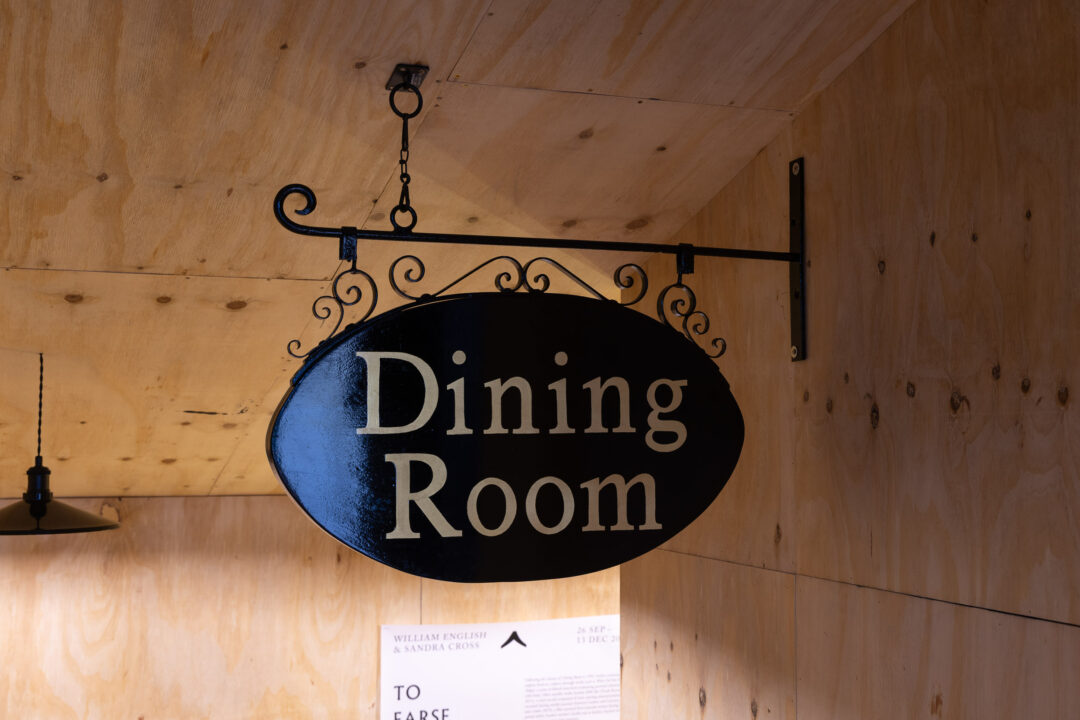
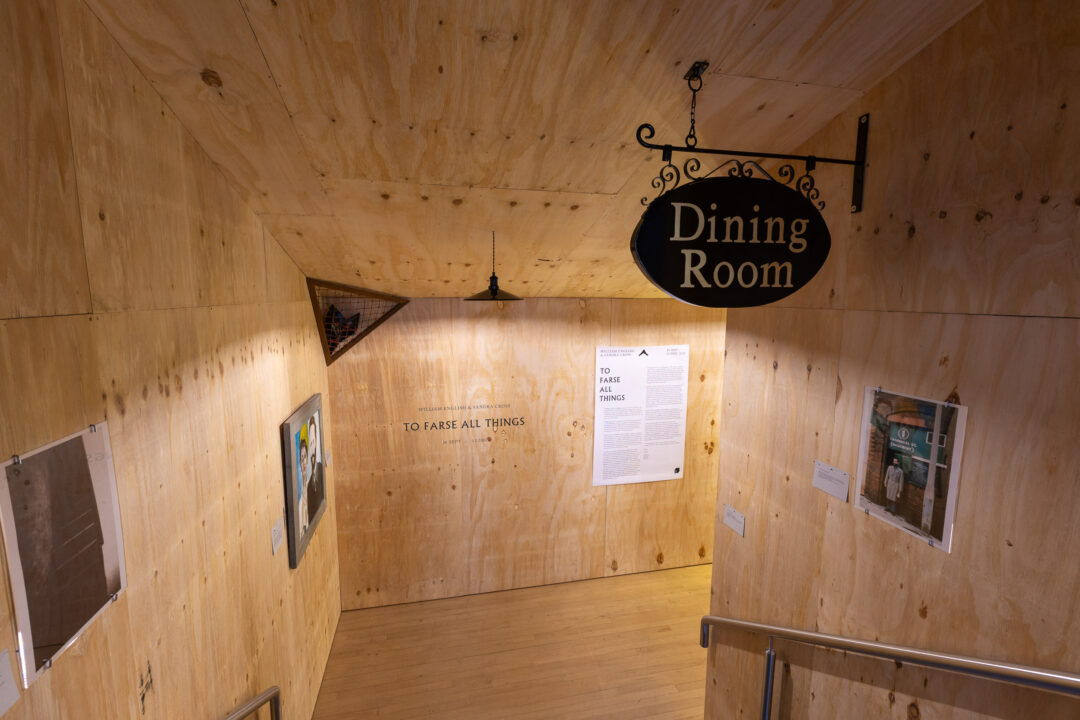
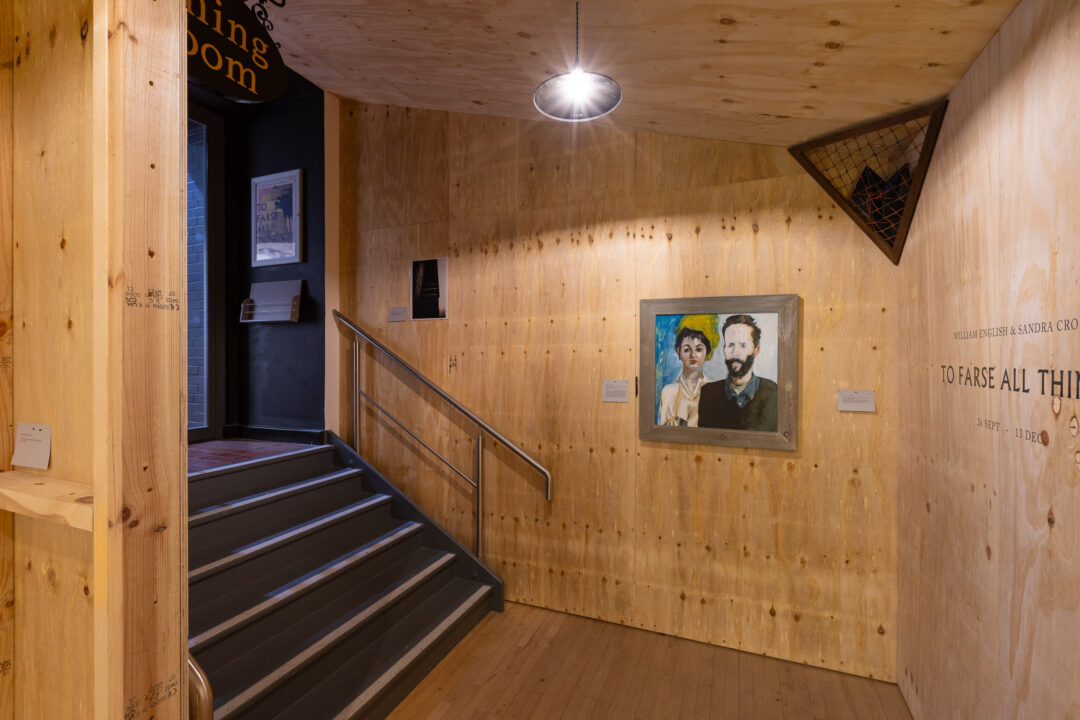

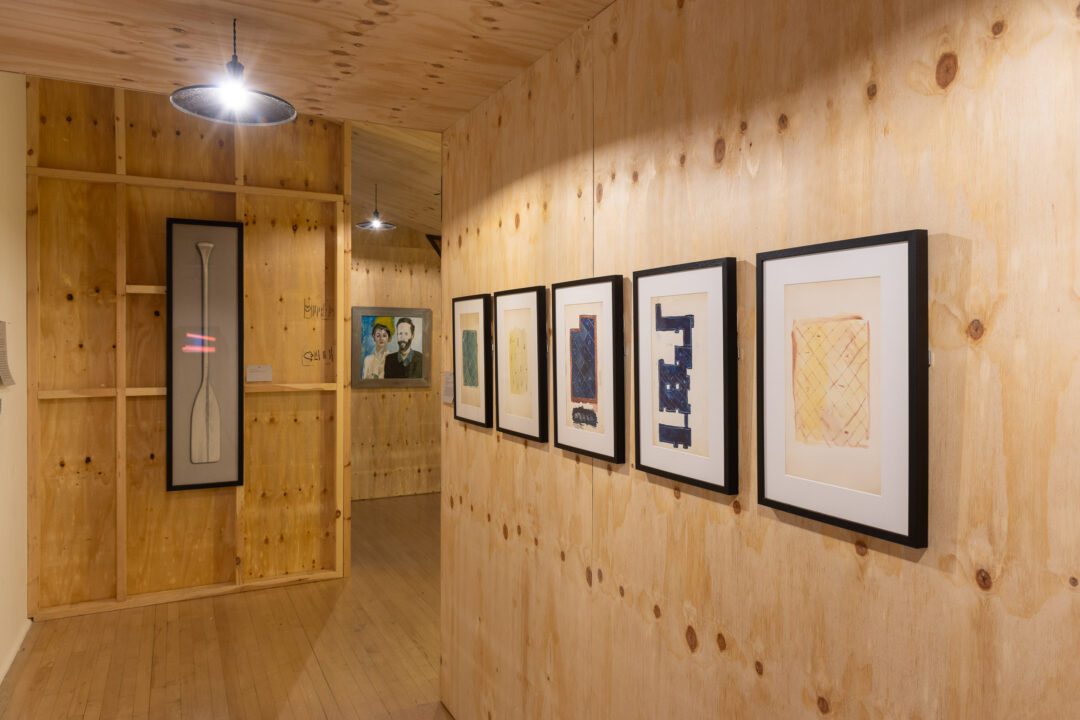
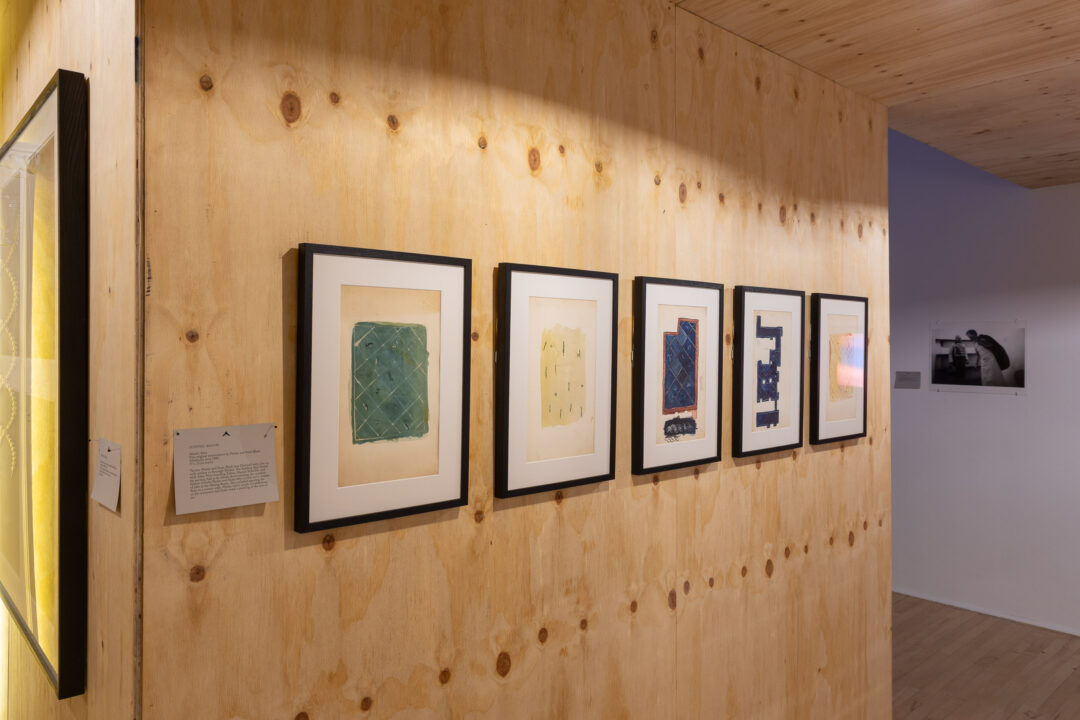
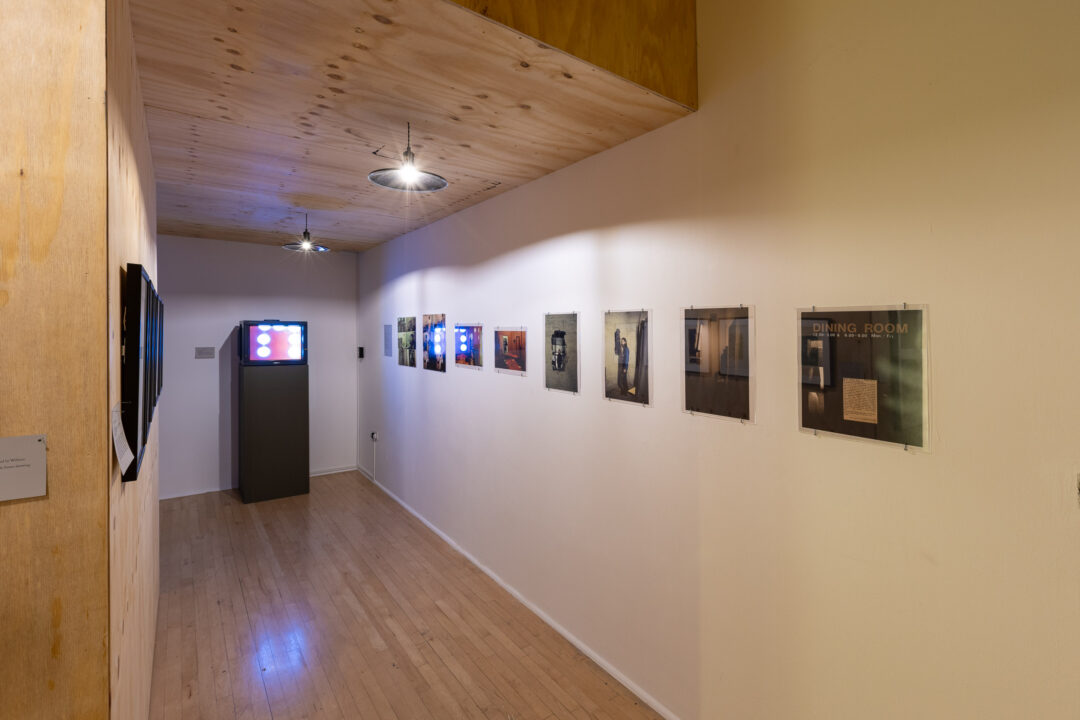
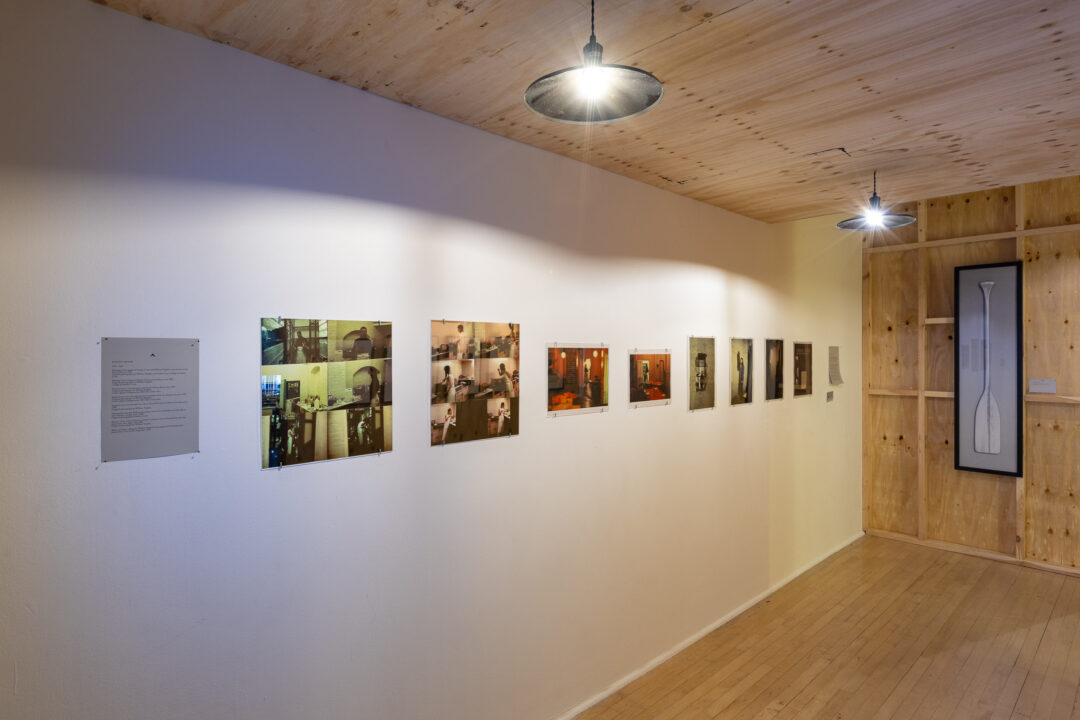
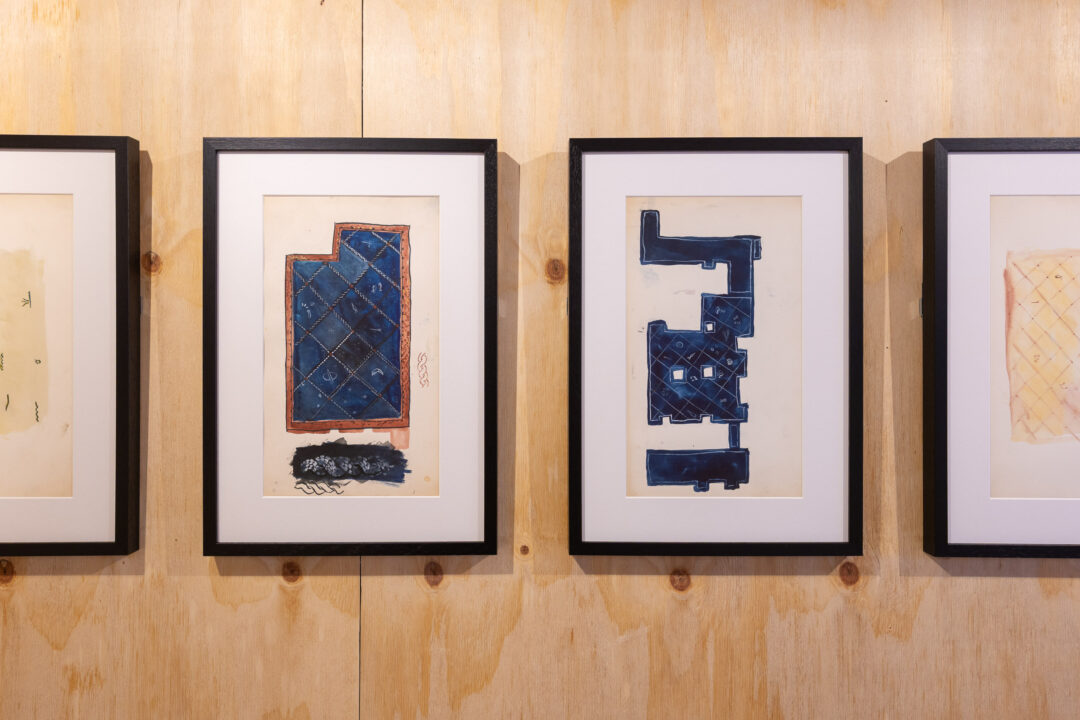
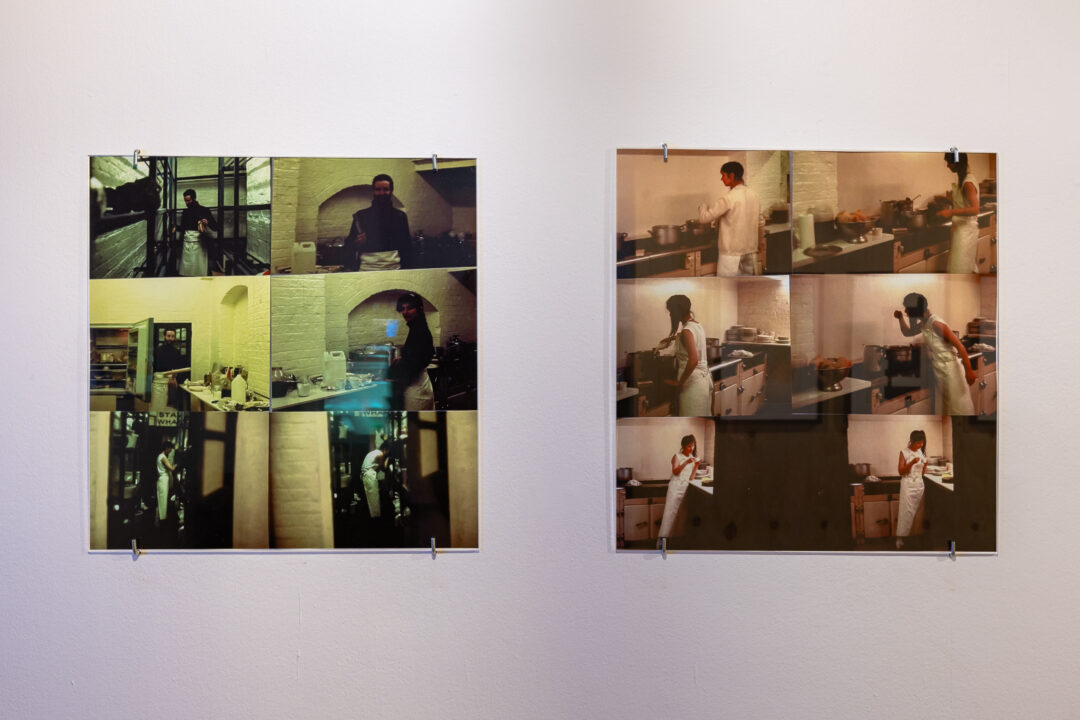
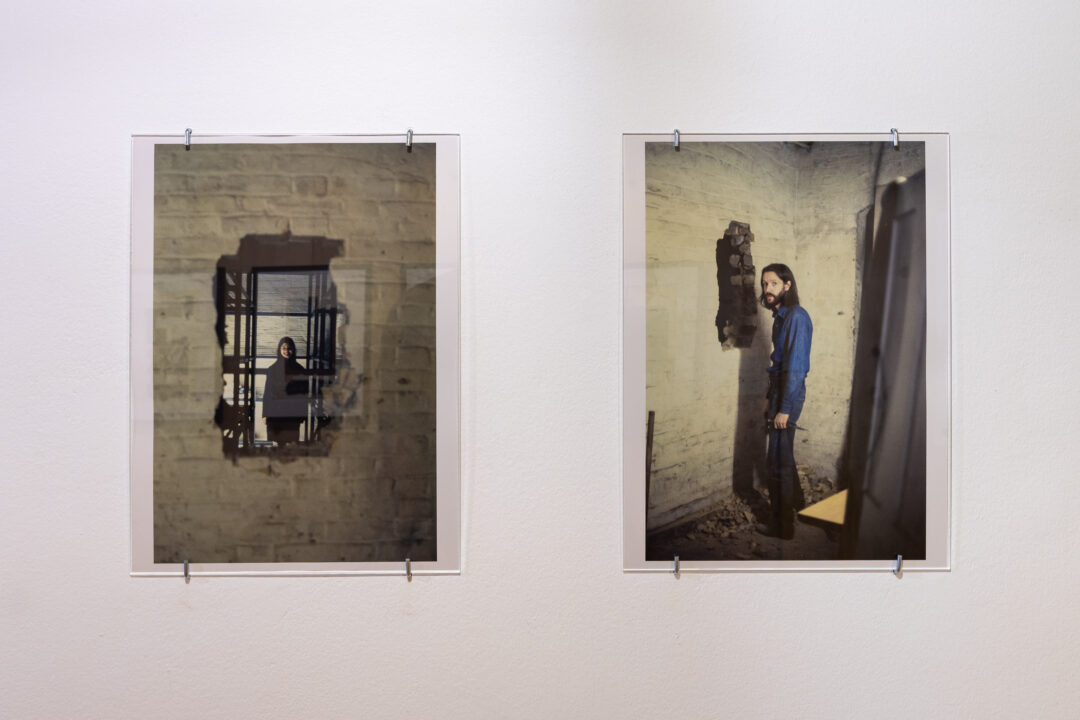
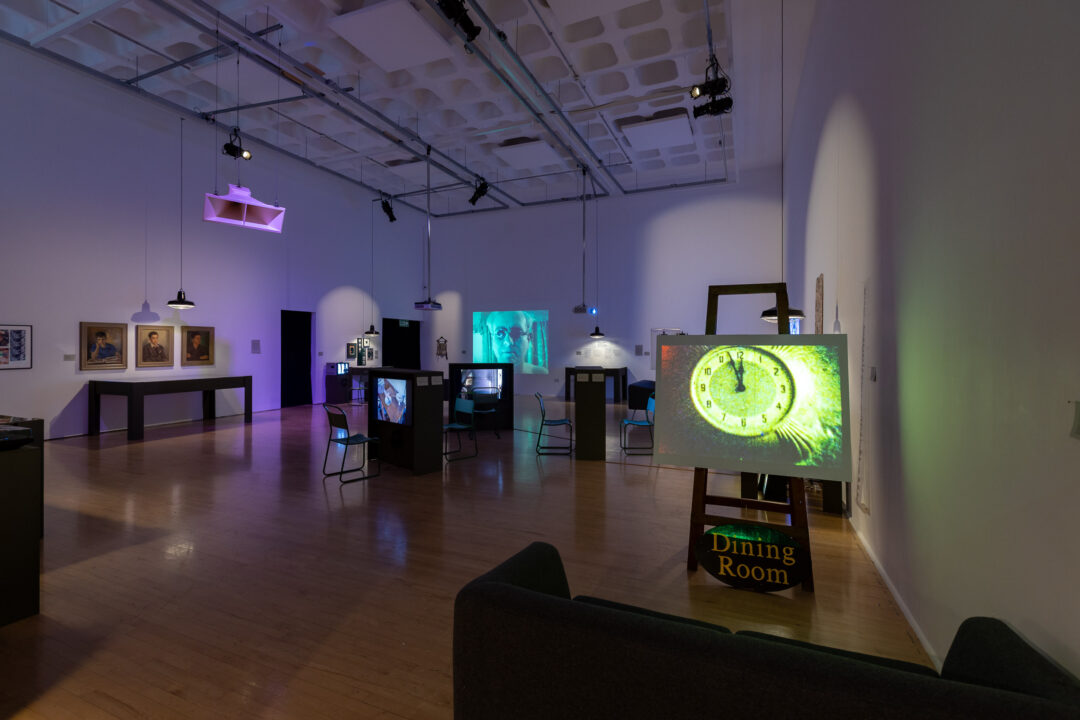
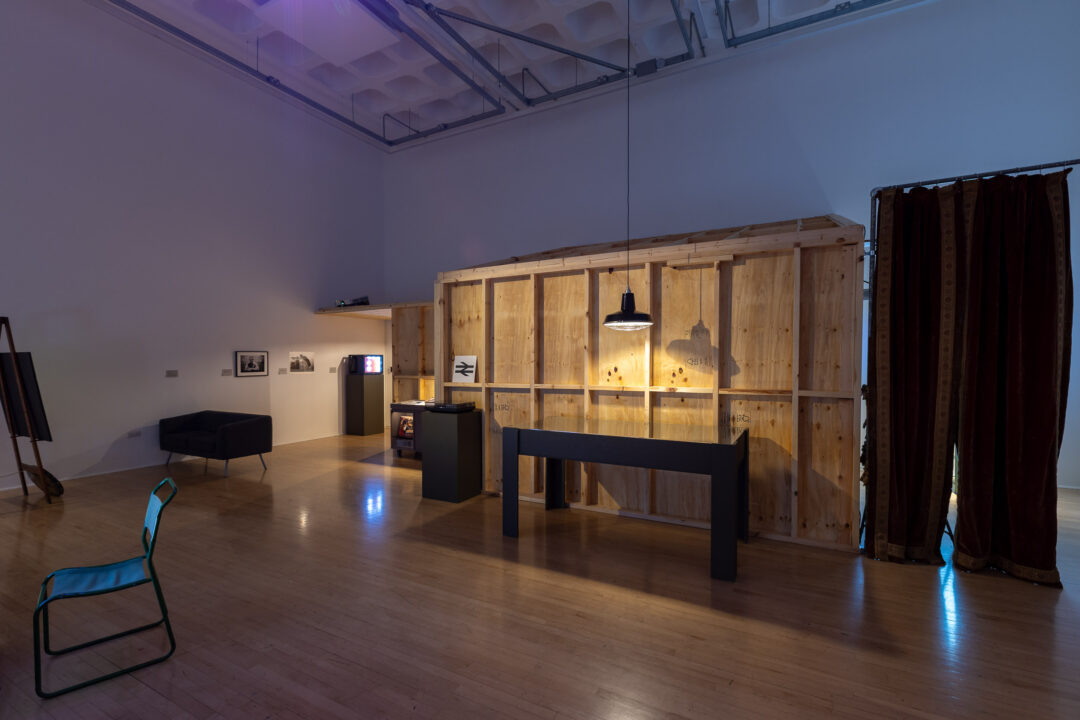

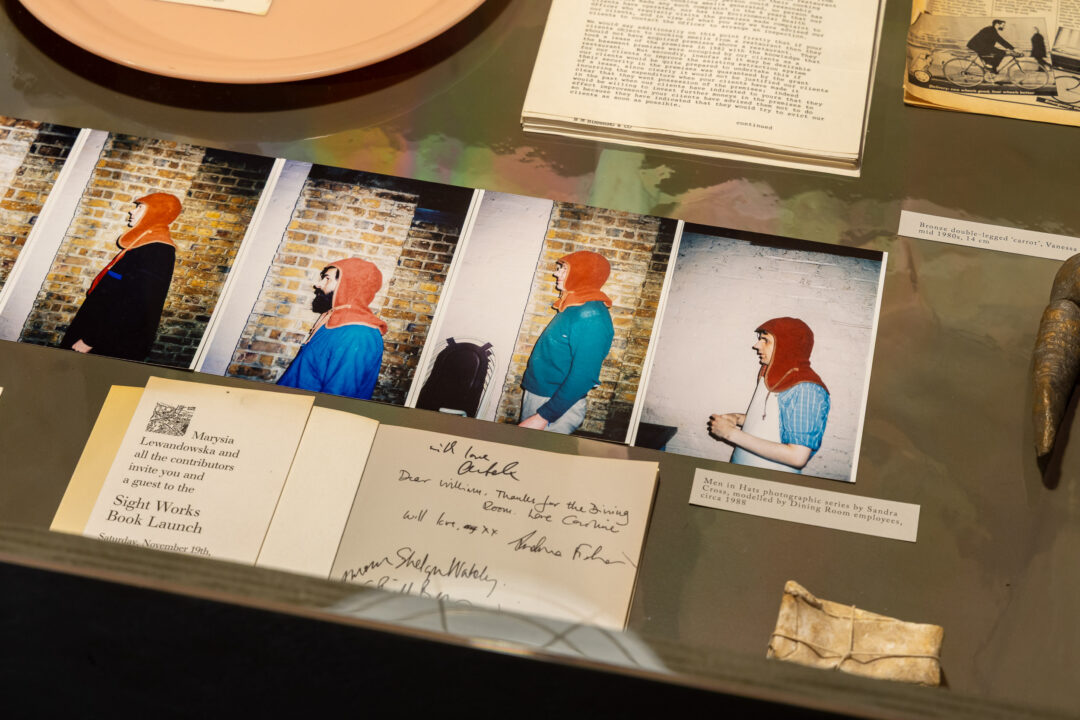
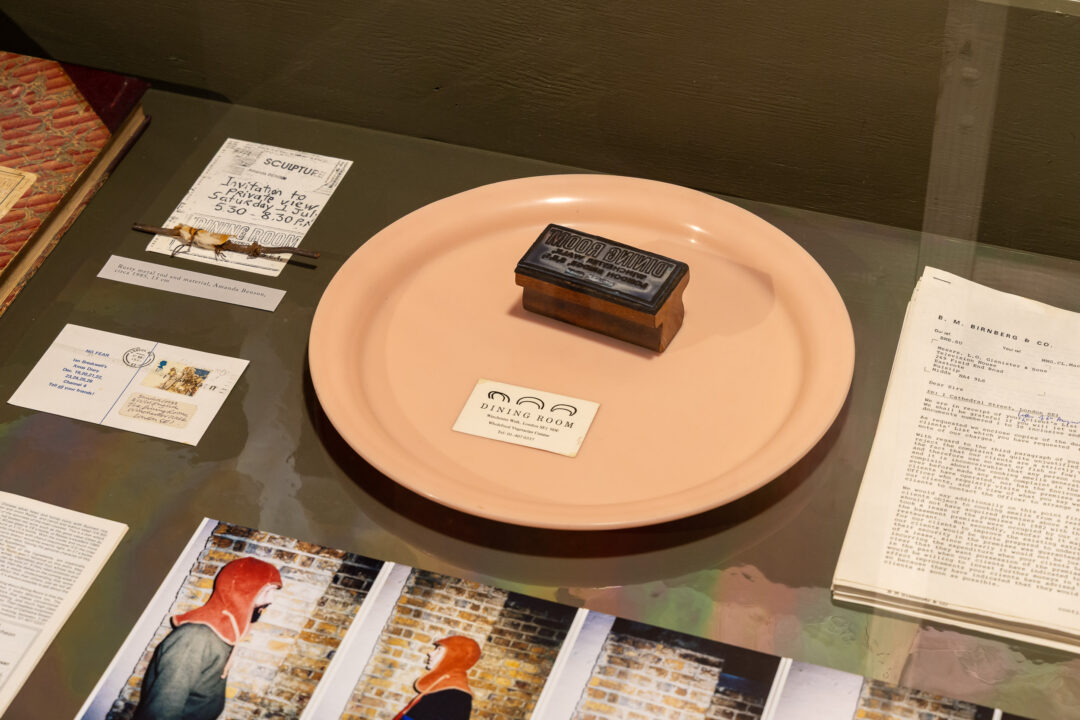
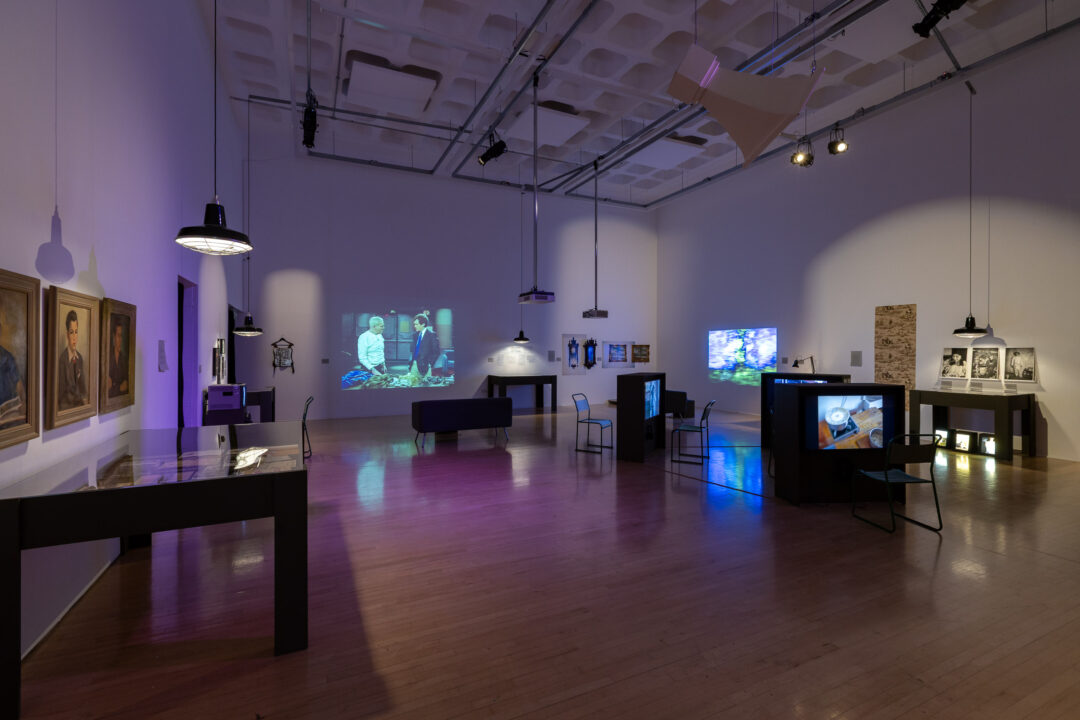
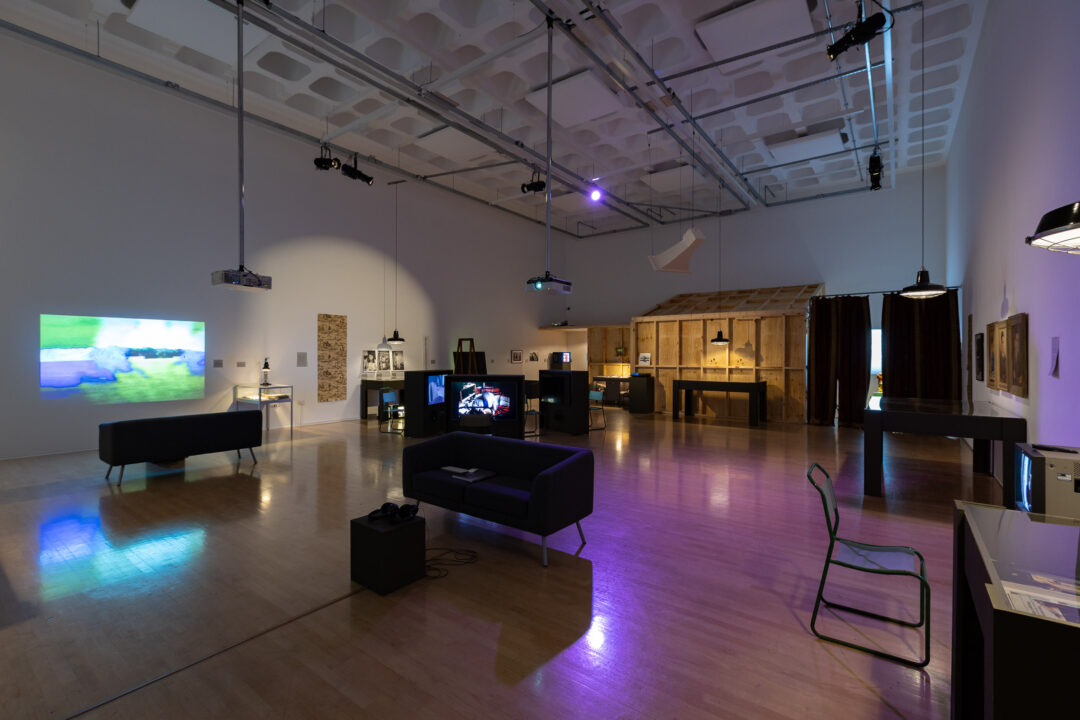
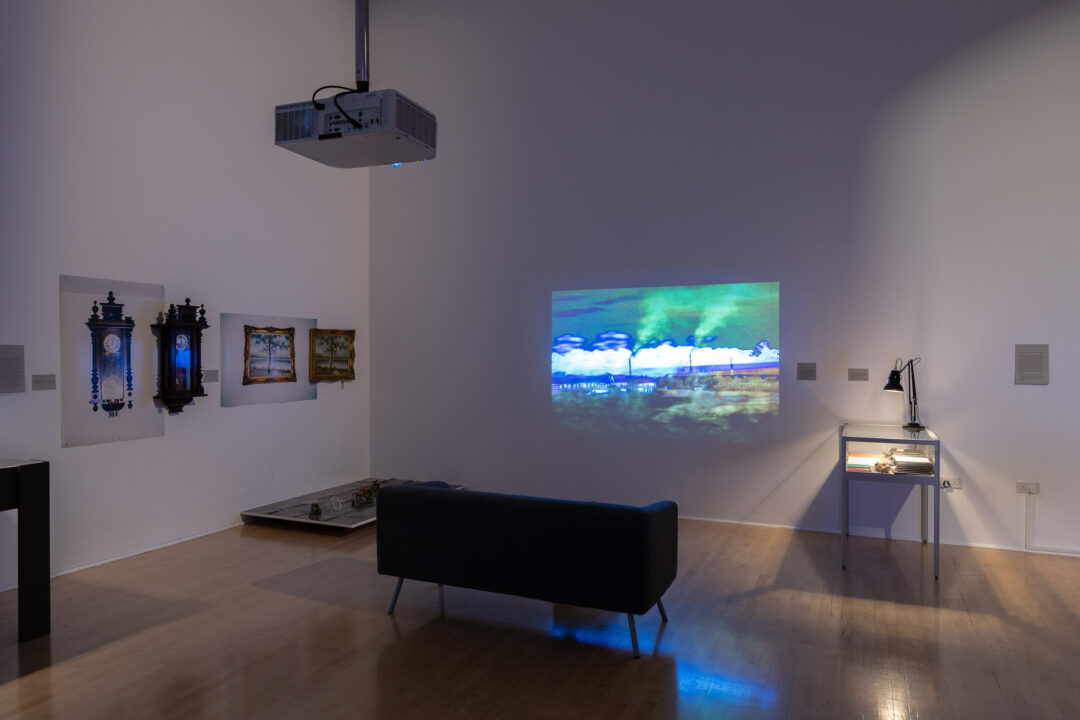
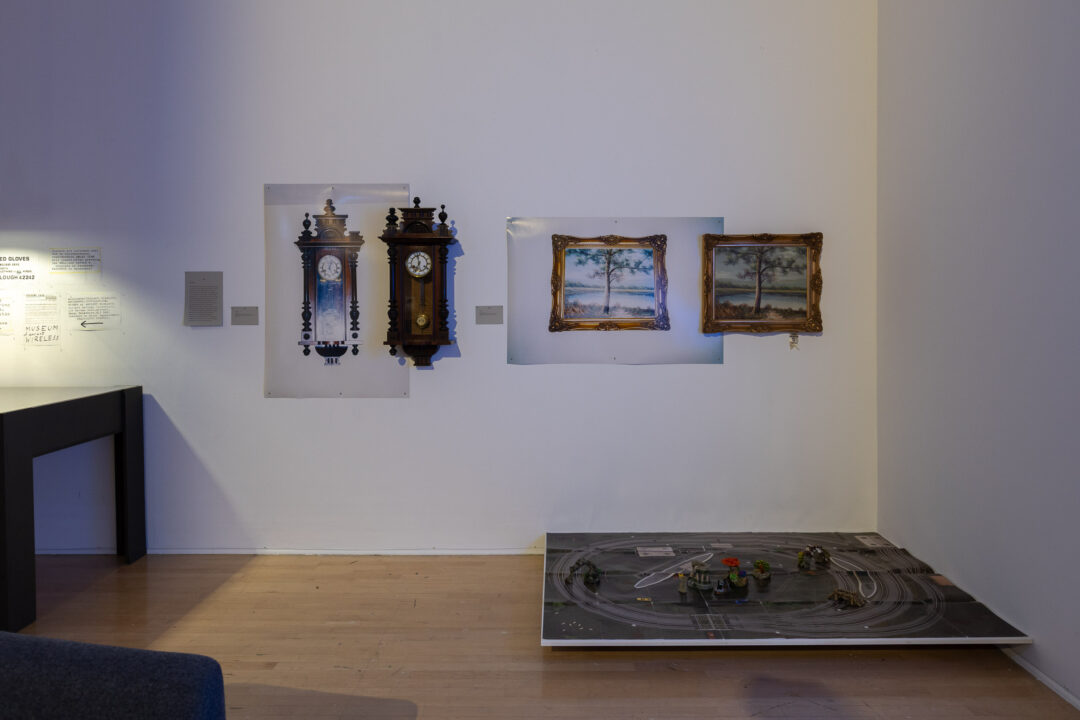

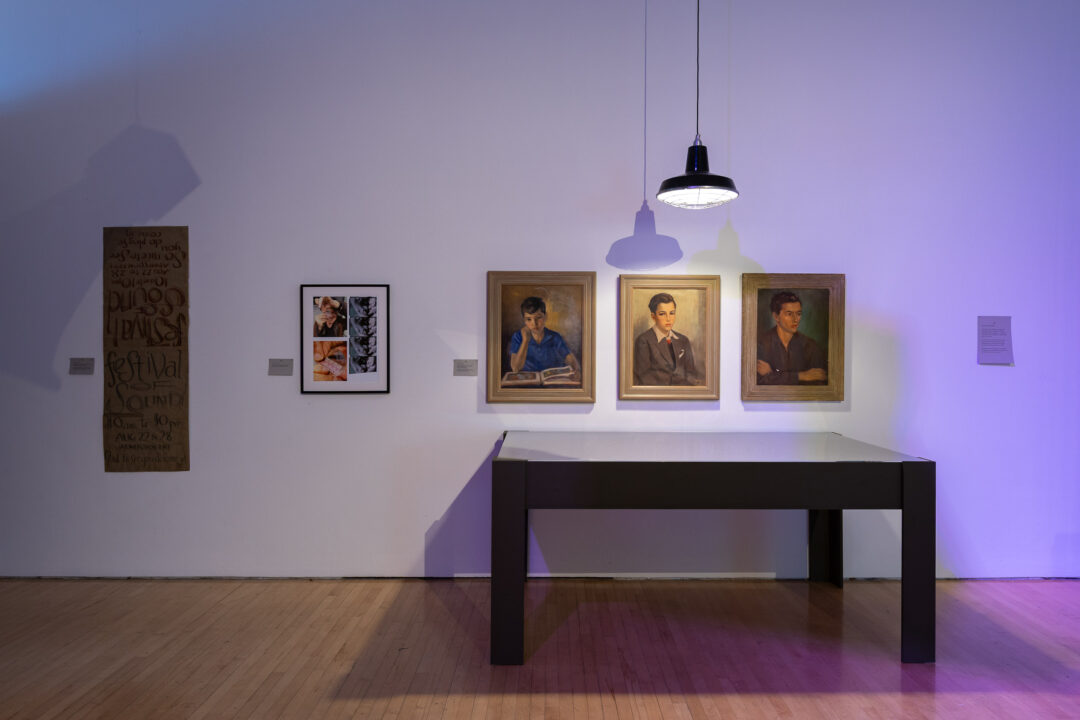
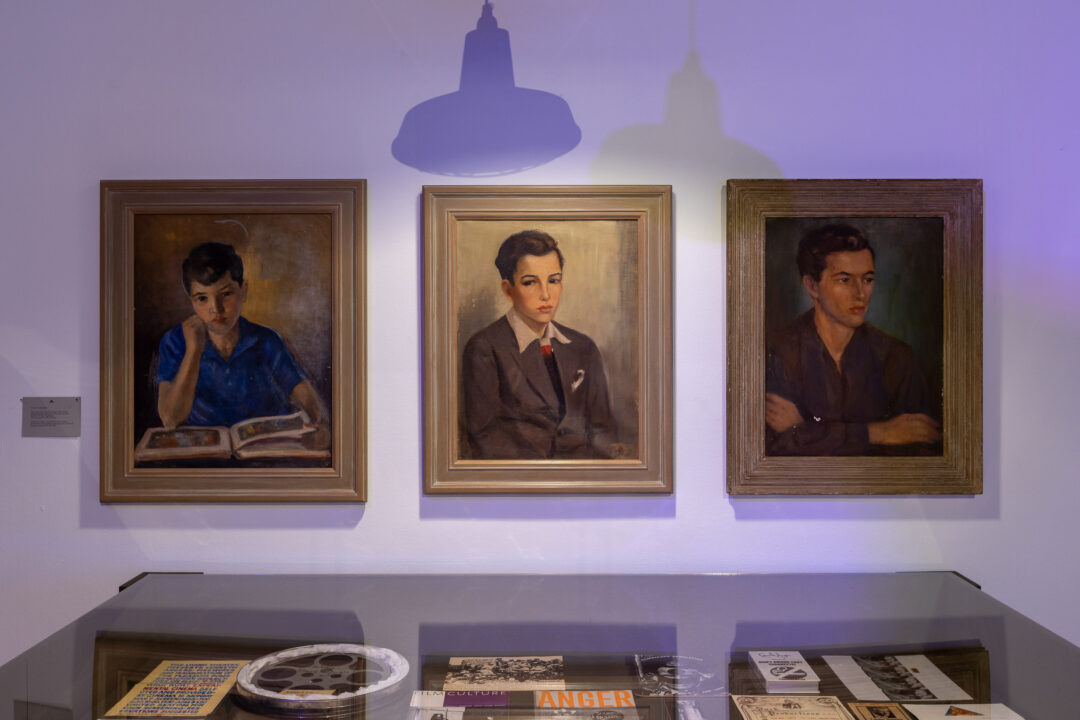
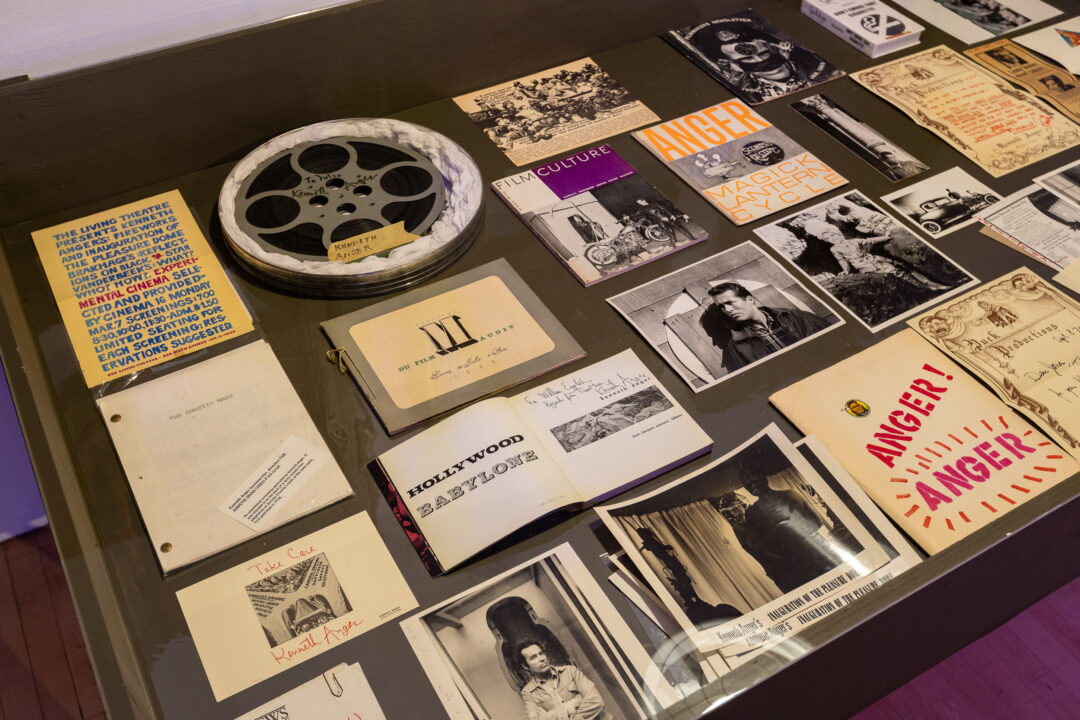

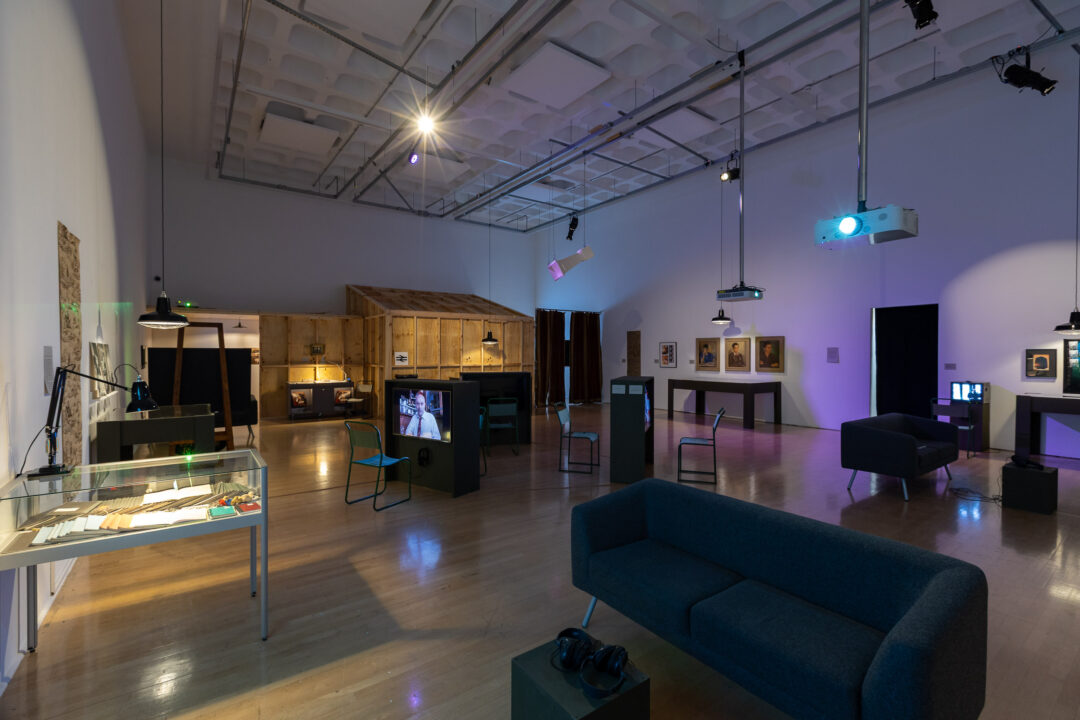
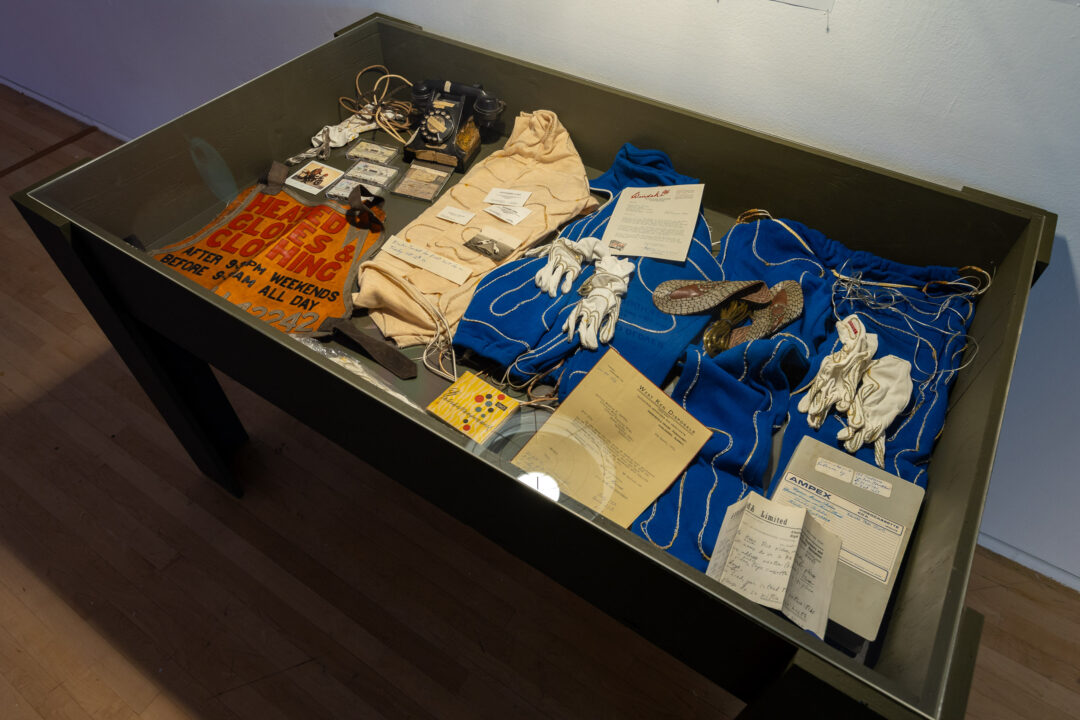
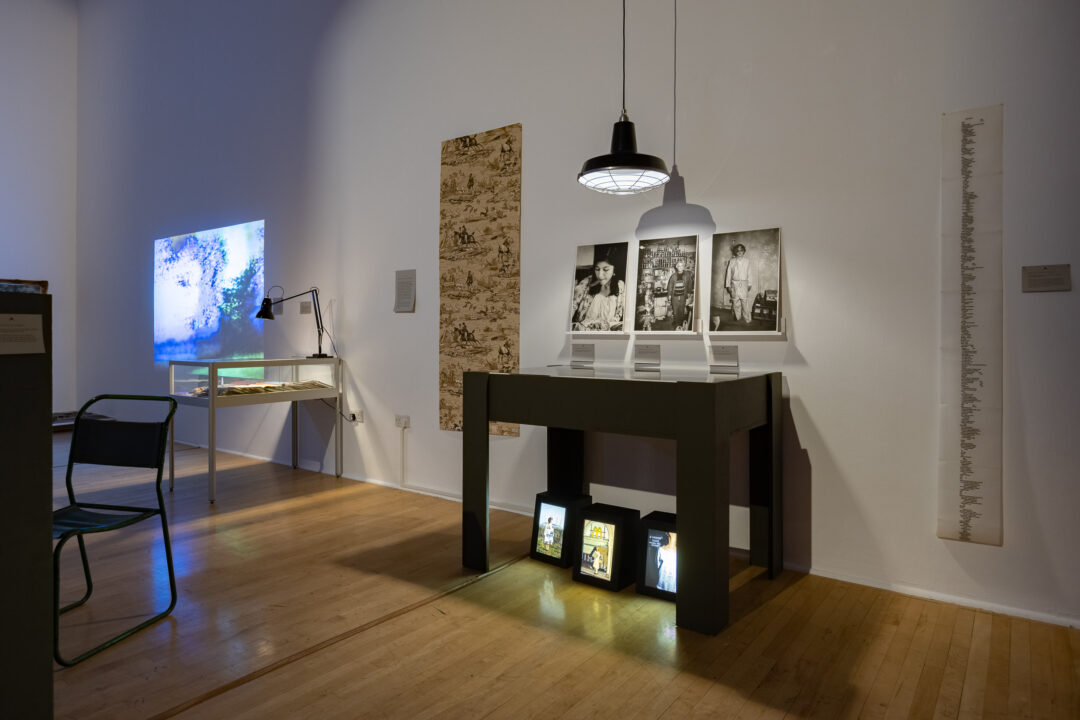
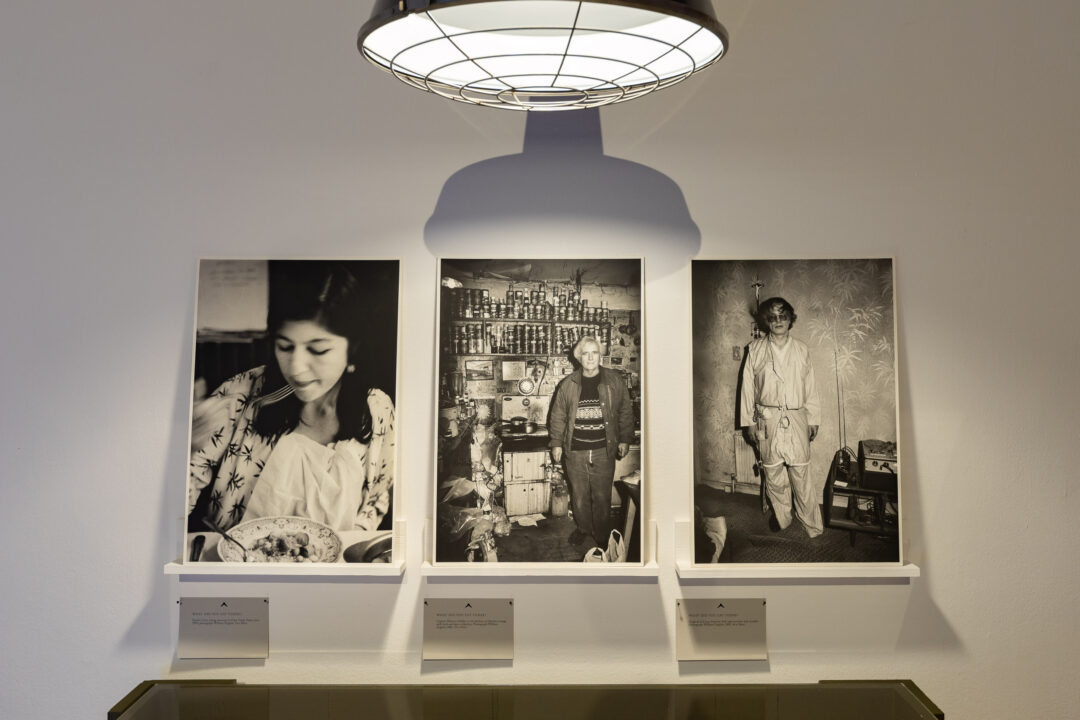
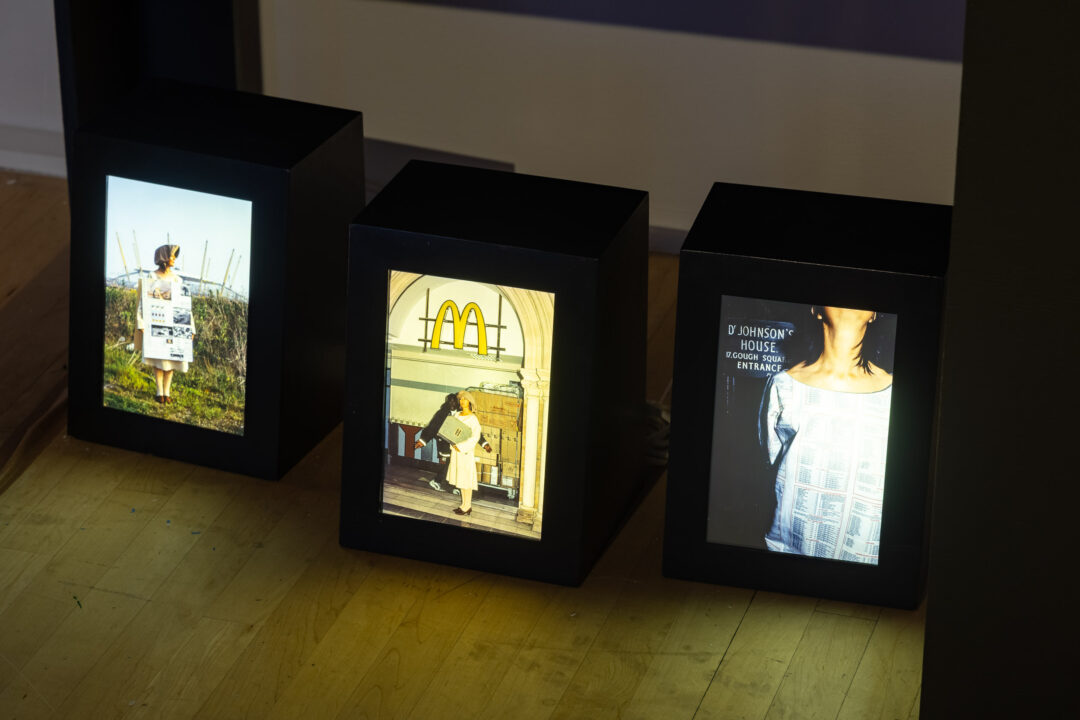
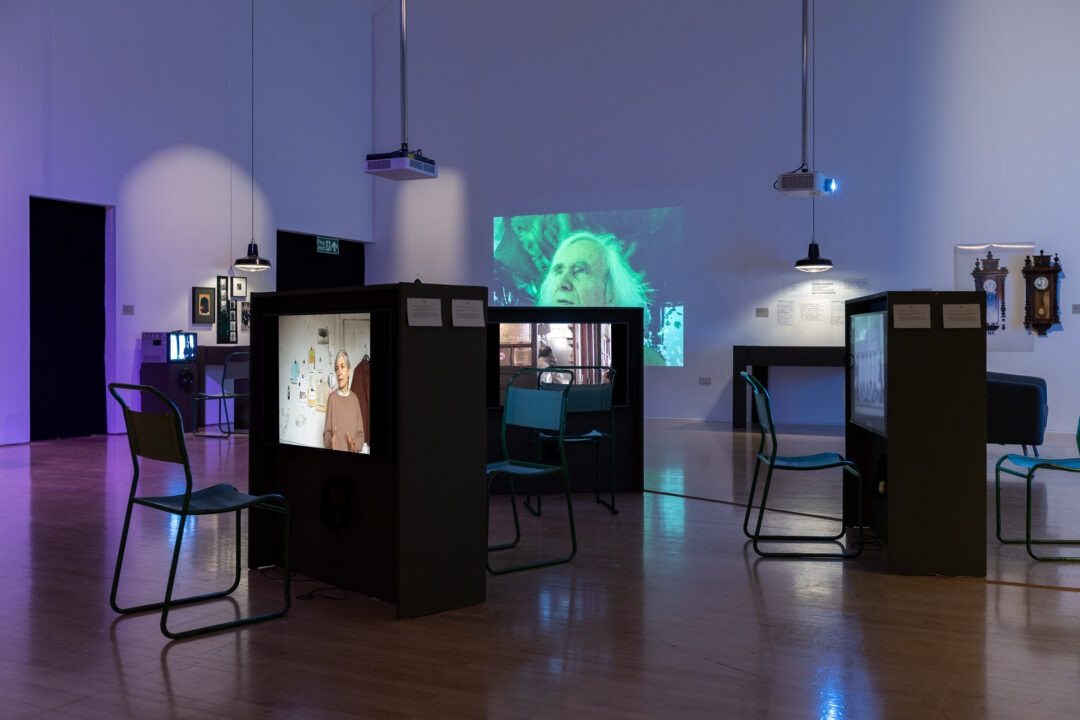
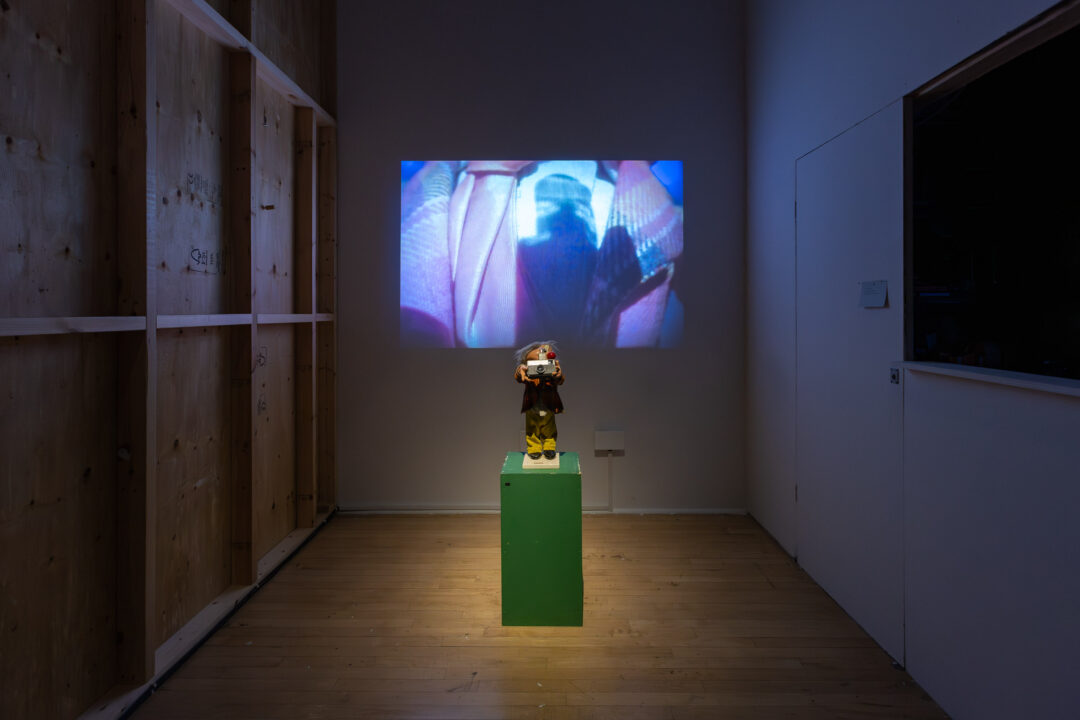
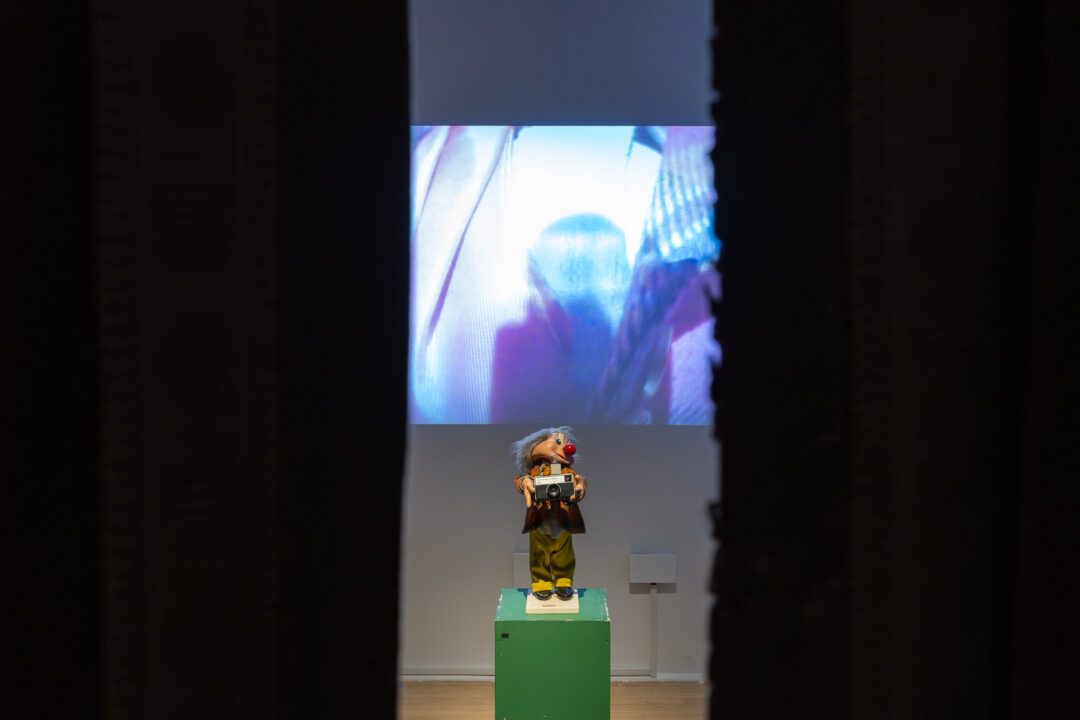
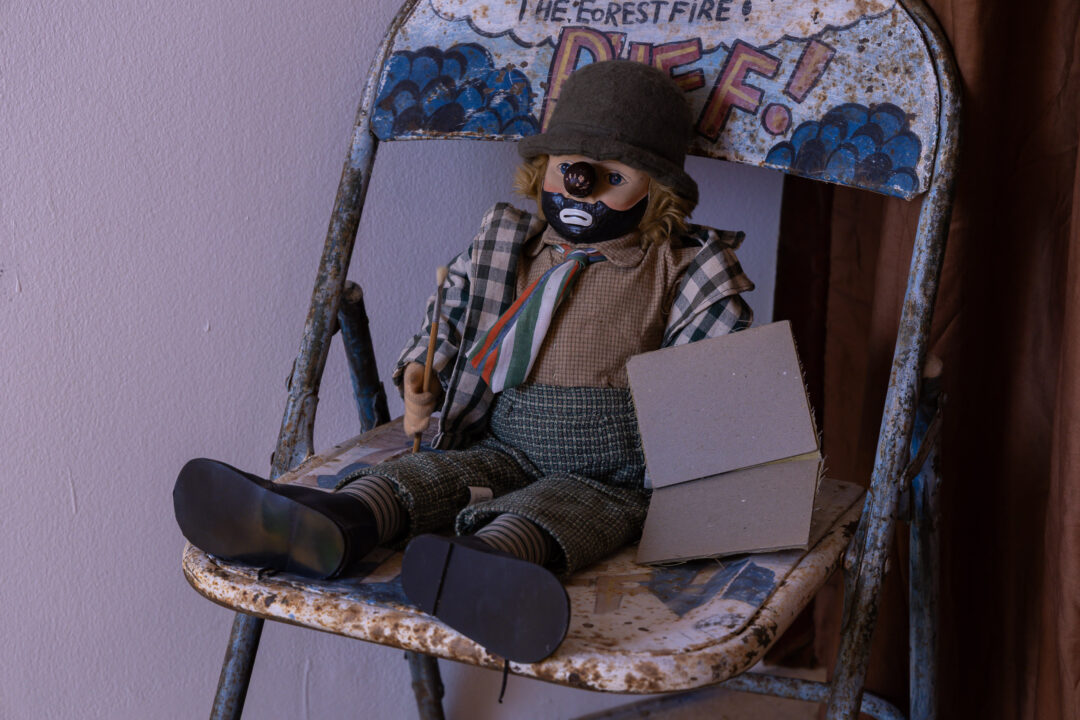
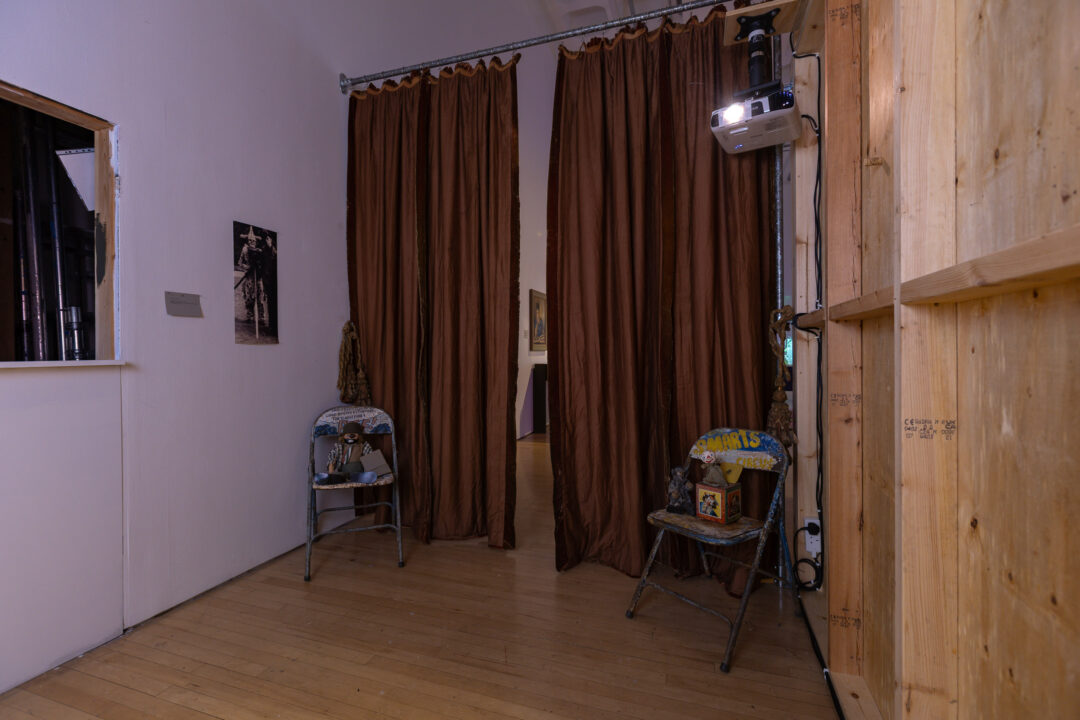
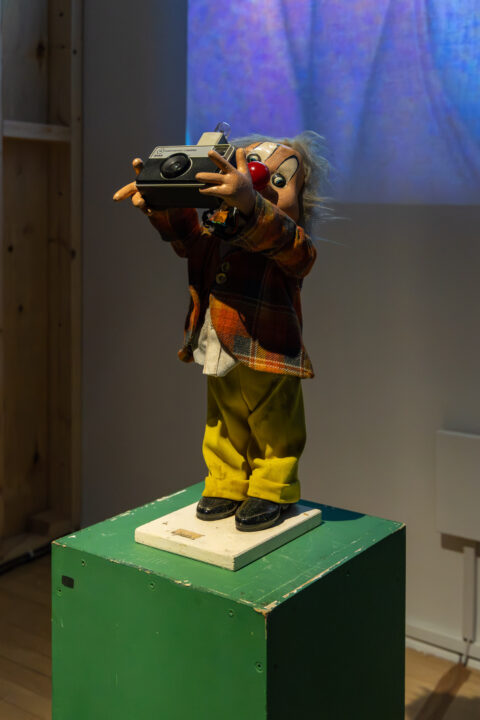

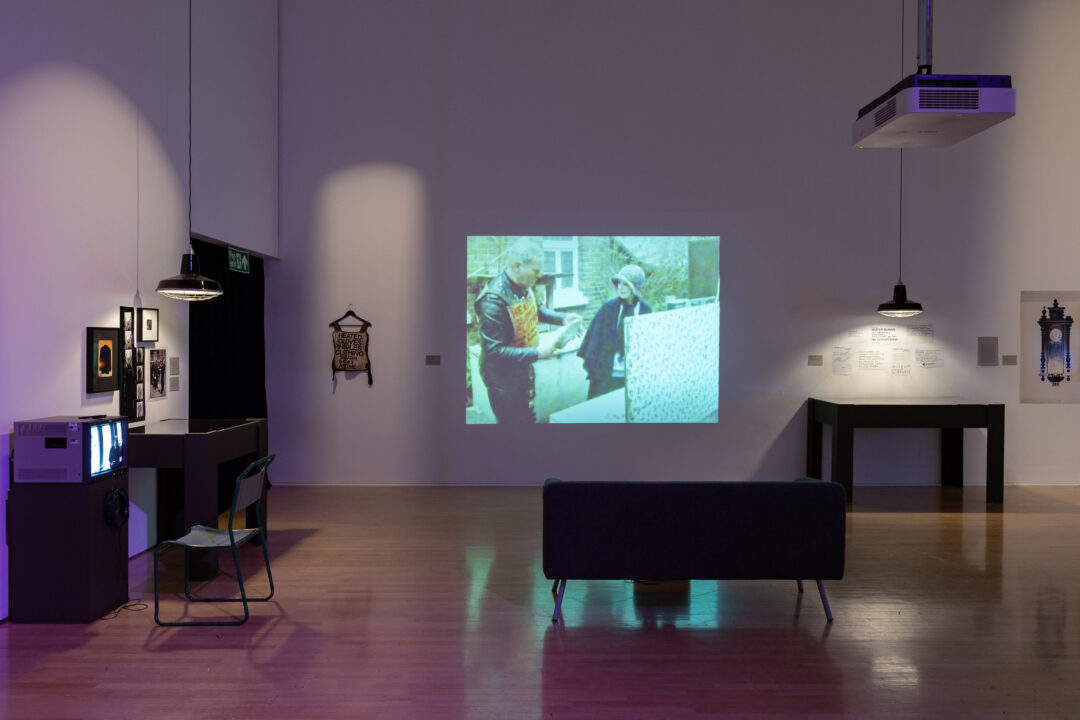
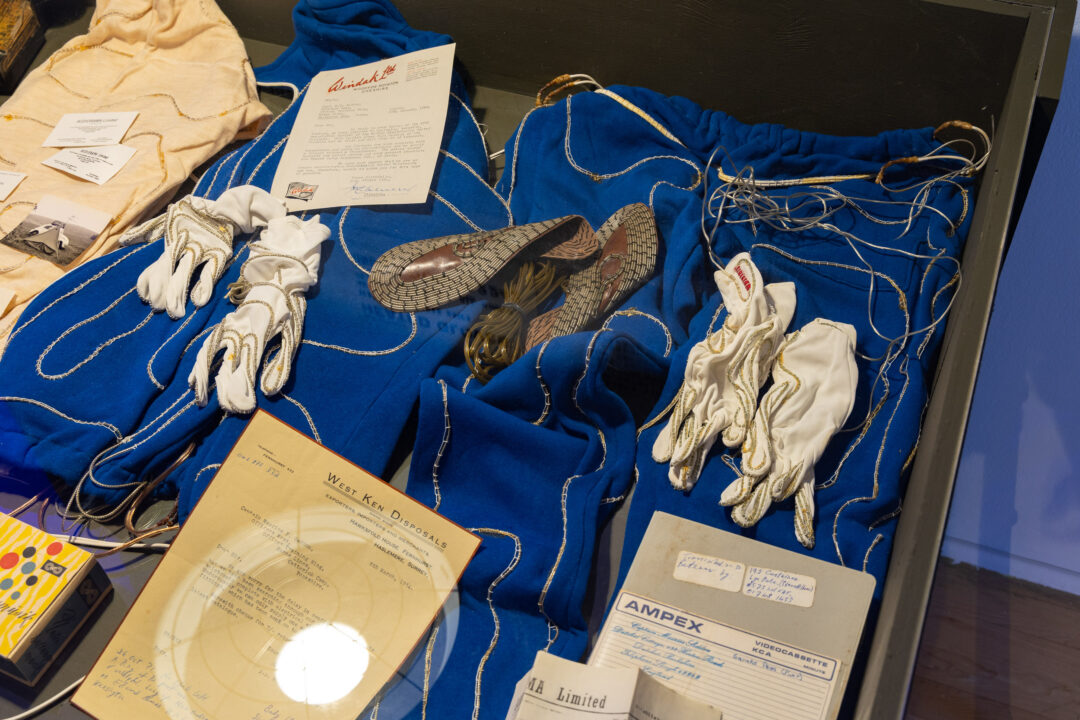
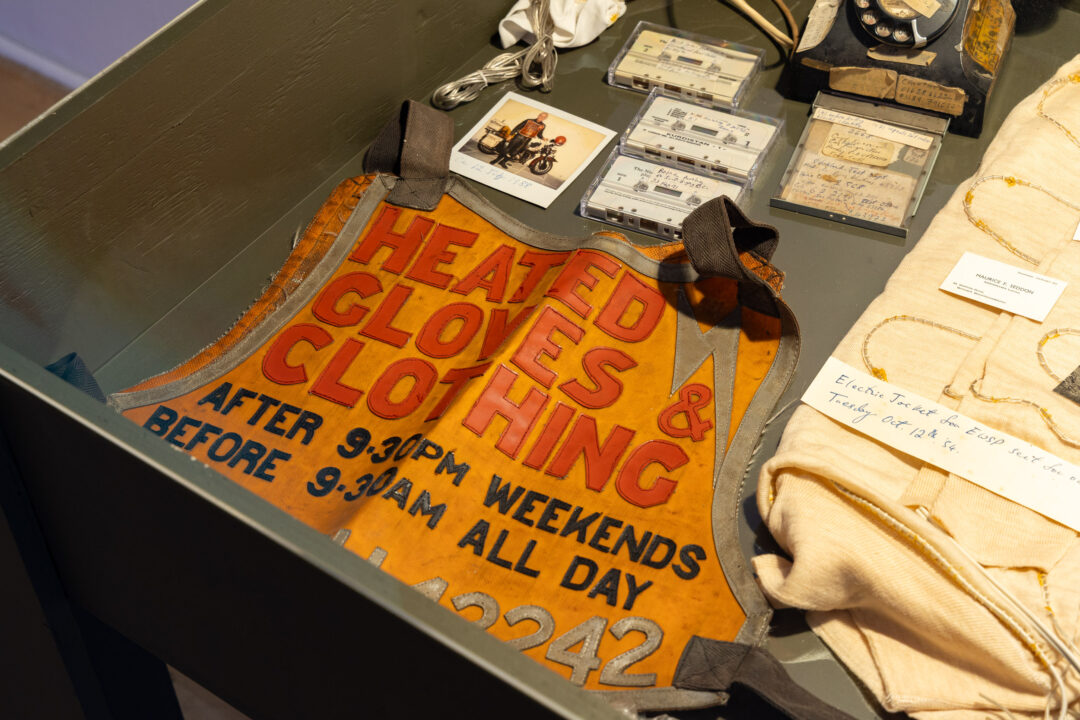
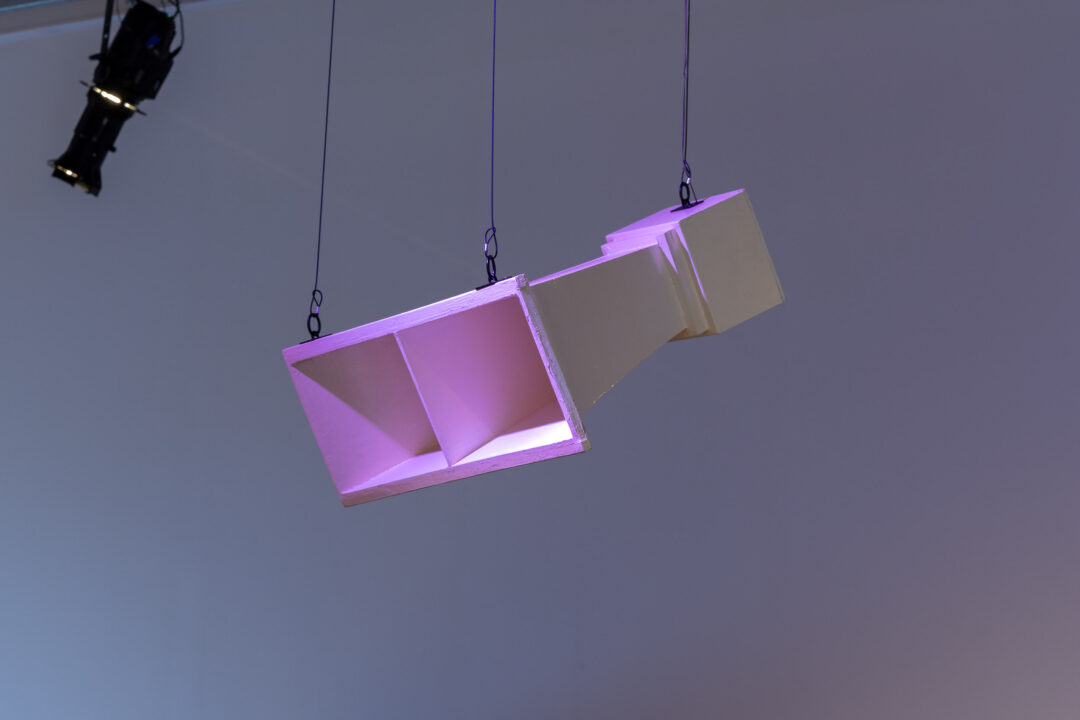
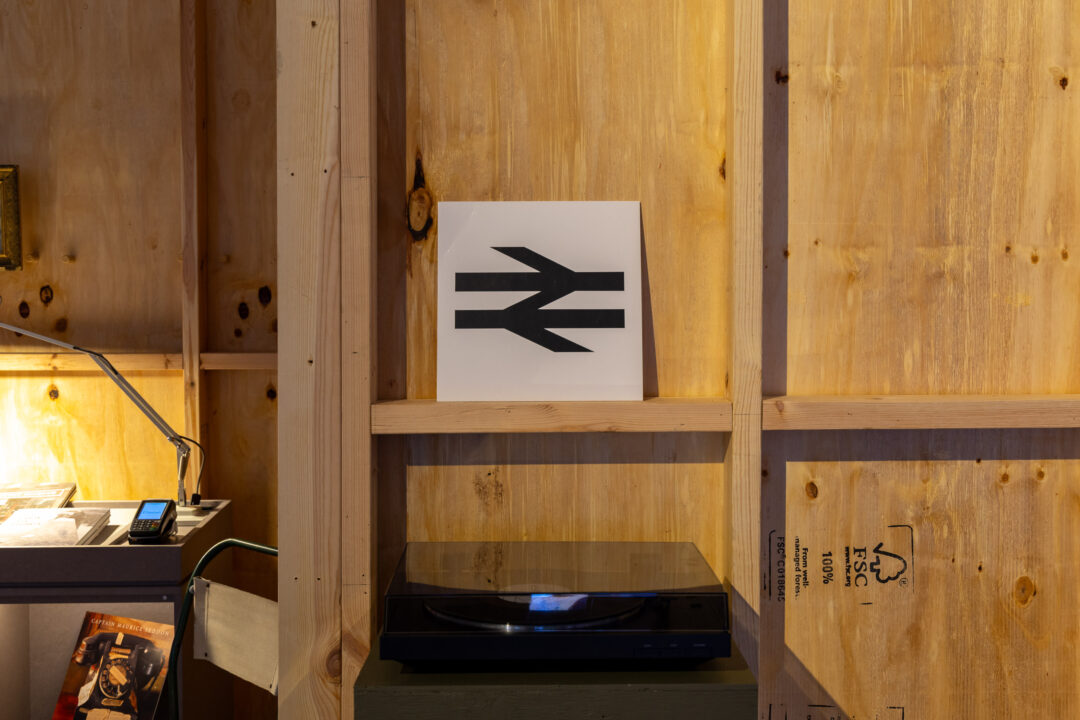
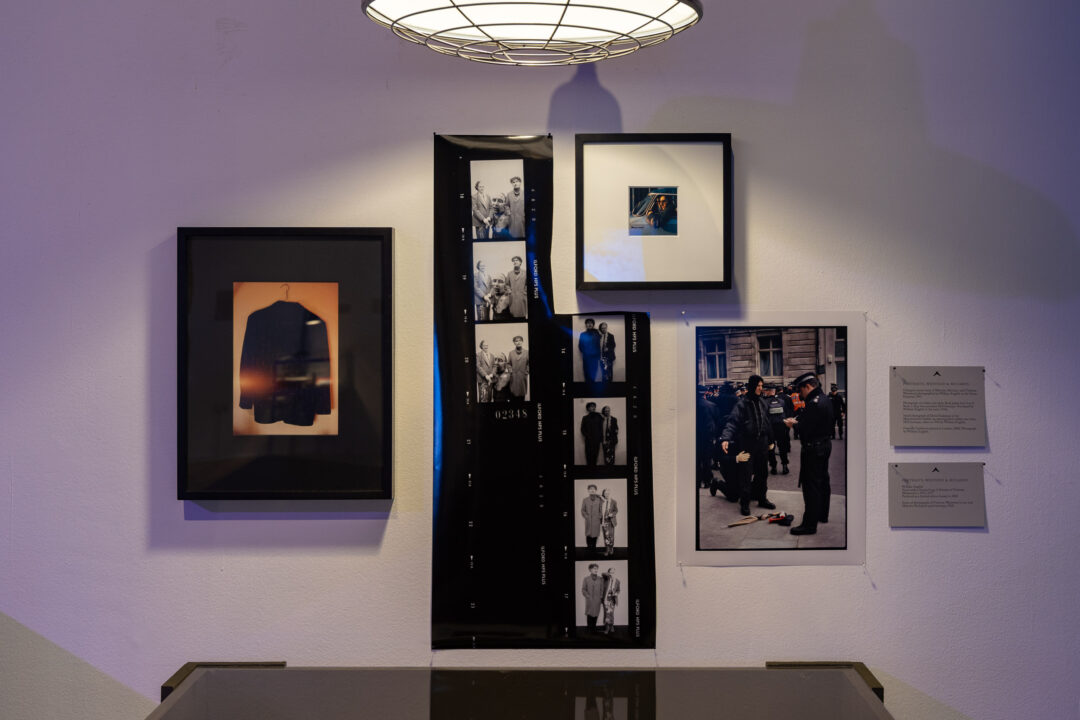
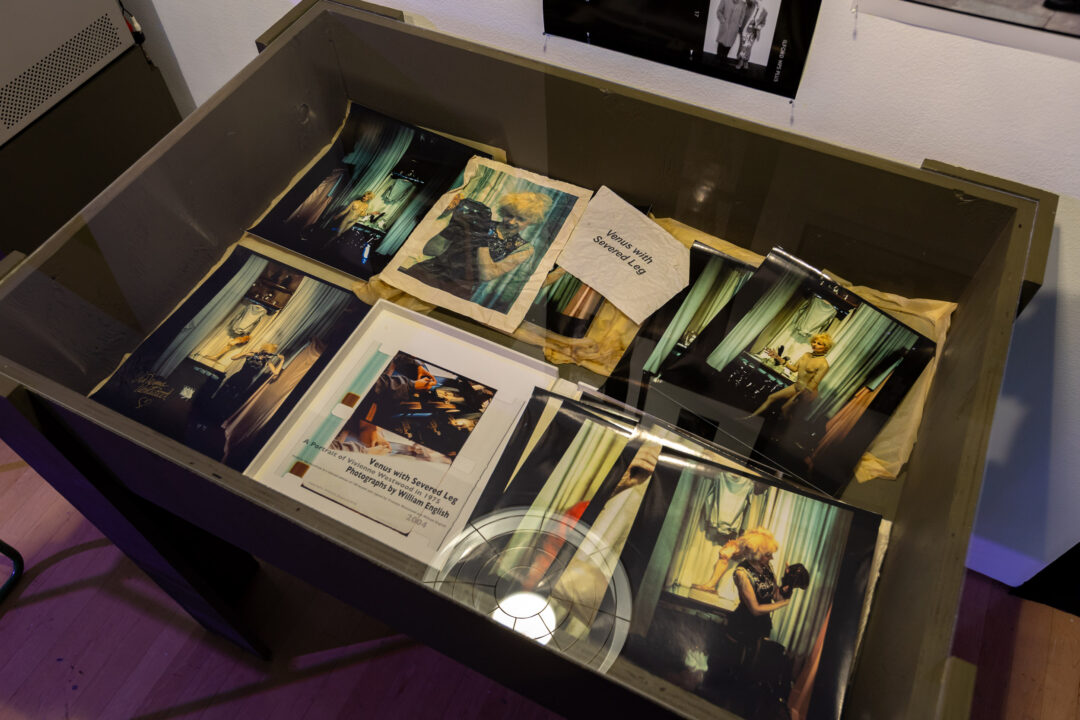
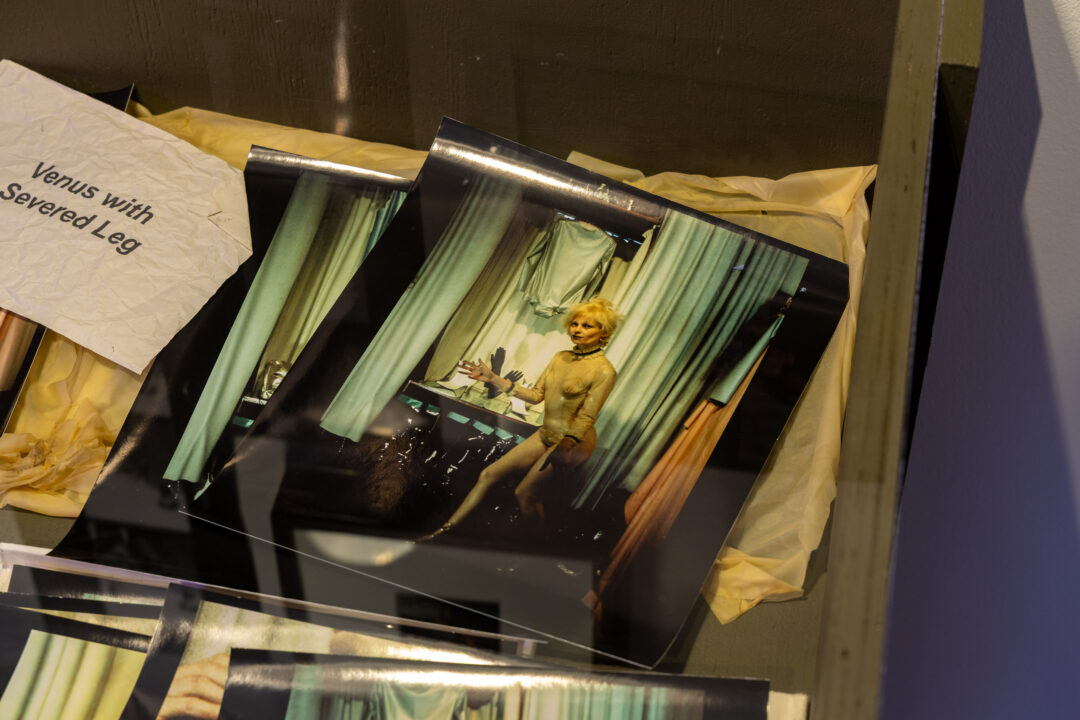
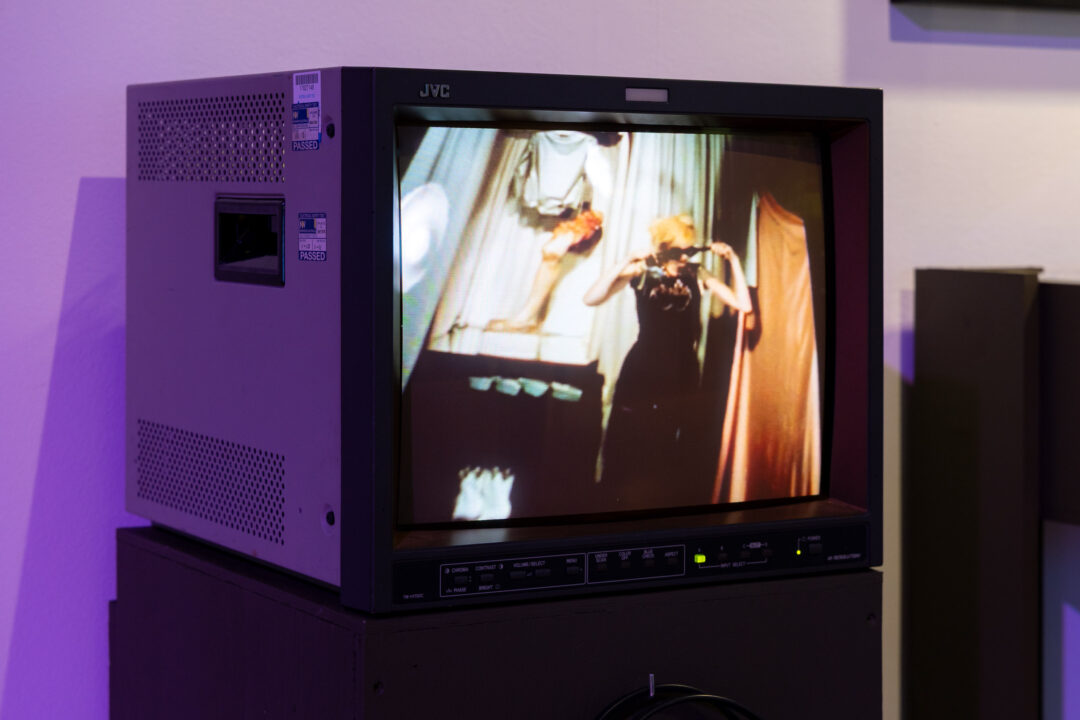
Image at top of page: Left – William English in Dining Room kitchen circa 1982 photograph by Sandra Cross / Right – Sandra Cross in Dining Room kitchen circa 1982 photograph by William English.
Join us for a free one-day presentation of Al Andalus, an audio-visual installation by Nottingham artists Claude Money and Meg Wall.
Musically, the installation makes a globally influenced offering to the modern school of electronic, instrumental Hip-Hop with large helpings of modern British jazz, traditional Andalusian sounds and Arabic modalities.
Accompanying the music are Lo-Fi stop-frame animations, bringing still, multi-layered artworks to life. The visual inspiration for the work lies in key motifs, colours and iconography from Andalusian history and culture both ancient and modern, concepts inherent to the soul of the music itself.
The rhythms and visual dynamics within the animations were not automated but were responsive to the atmospheres created by the music.
Claude Money is a music producer based in Nottingham by way of Singapore and Spain. He has worked with a number of artists, including Chaka Khan, Taka Boom, Emily Makis, President T, Windowkid, and Snowy, and has also created bespoke pieces of music for television and film. Outside of music, he is a PhD researcher at Nottingham Trent University working on recovering the hidden histories of Nottingham’s rich Hip-Hop heritage, a critically overlooked area of UK art and culture.
Meg Wall is an academic at Nottingham Trent University where she lectures in visual communication techniques to undergraduate students. As a creative practitioner, she is an illustrator and animator whose art centres around telling human stories.
Join us for a discussion and audio experience with Nottingham rapper Cappo and collaborating sound artist Tom Harris, exploring the ideas and processes behind CAPStone, Cappo’s week-long exhibition at Bonington Gallery between 14 – 21 June.
For the third event in our Bonington Connects programme, we are delighted to invite Nottingham based rapper Cappo and sound artist Tom Harris to discuss their collaboration and explore the ideas behind Cappo’s solo exhibition CAPStone. The two artists will also lead an improvised sound workshop and experience – utilising spoken word and elements found within the exhibition.
Bonington Connects
Bonington Connects is a student-programmed talks, discussion and workshop series inviting people to engage in thought-provoking conversations in response to Bonington Gallery’s exhibition programme. Aimed at creating an accessible atmosphere, this series encourages exploration of our exhibitions in informal, open and engaging settings. This installment has been programmed and organised by final-year MFA Fine Art student Vidhi Jangra.
We are pleased to acknowledge that funds from NTU TILT have supported this event.
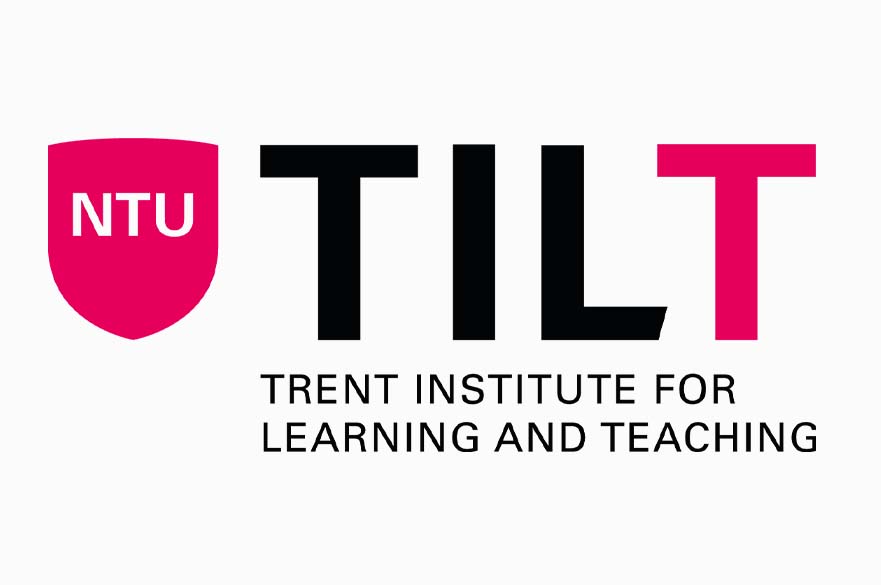
Bonington Gallery is delighted to host the culmination of this year’s CADALFEST (Celebrating Adivasi and Dalit Arts and Literature Festival).
After two successful festivals between 2022-24, at locations within the UK and India, this third instalment will culminate with a two-day programme of screenings, discussions, workshops and masterclasses at Bonington Gallery, offering audiences a closer, more sustained engagement with contributors than on previous occasions.
This new, more interactive format will allow audiences to work closely, and embark on a two-day journey, with the filmmaker Jayan K. Cherian, the writers and poets Gogu Shyamala and Jitendra Vasava, the writers and researchers Gopika Jadeja and Priteegandha Naik, as well as the Jangama Collective.
This year’s festival also celebrates the 10-year anniversary of the network on Dalit and Adivasi literature that was launched by the first conference on Dalit literature at Nottingham Trent University in June 2014.
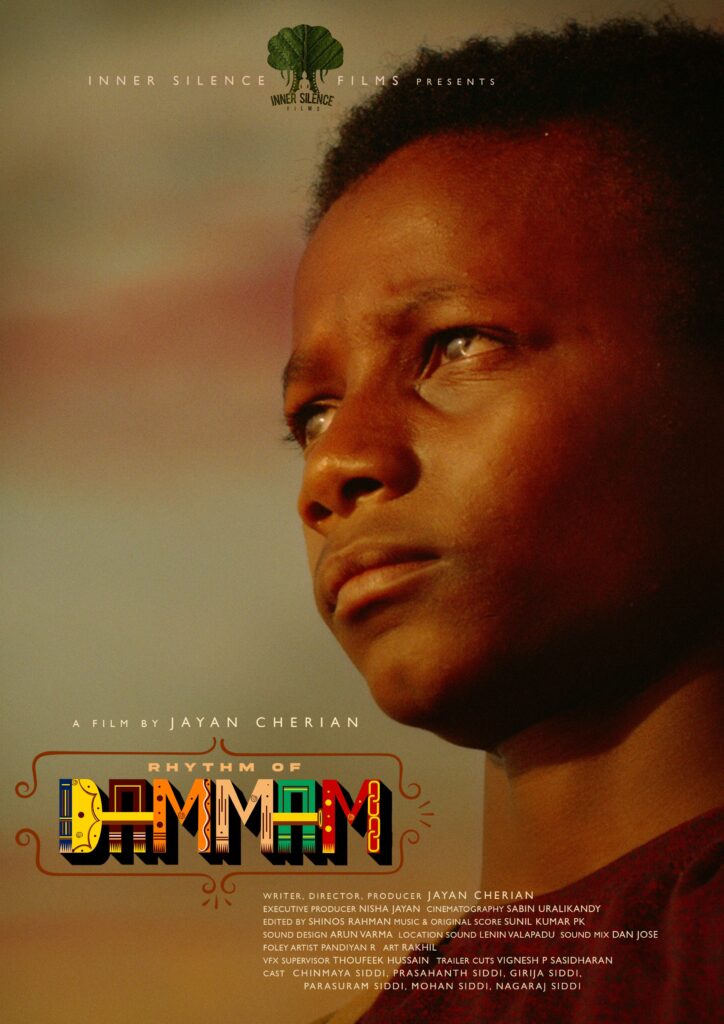
10 am – 12 pm: Gopika Jadeja and Jitendra Vasava, ‘Adivasi lives in forest, village, city’.
Jitendra Vasava and Gopika Jadeja have been working over the past decade to translate and publish Adivasi poetry from western India, including Vasava’s own poetry. Beginning with a song in celebration of the Earth, Vasava and Jadeja will weave through Vasava’s poetry in Dehwali Bhili and English translation, video footage of readings by other Adivasi poets and reflections on poetry, orality and Adivasi struggles.
1 – 3 pm: Screening of Rhythm of Dammam, a film by Jayan K. Cherian, followed by a discussion with the filmmaker.
In Uttara Kannada, India, Jayaram Siddi, a twelve-year-old boy, is believed to be possessed by the spirit of his late grandfather, Rama Bantu Siddi. Despite seeking help from local black magicians, Jayaram’s condition remains unchanged. He escapes into a dream world, using ‘magical’ instruments from his grandfather to connect with his ancestors. However, he becomes overwhelmed by the agonizing history of his ancestors’ chattel slavery, losing touch with reality. Jayaram drops out of school, and his family strives to restore his balance by embracing tribal rituals and Dammam music, both vital to their cultural heritage. The film delves into Jayaram’s struggle with intergenerational trauma, emphasizing the challenges faced by him and his family in finding healing and stability.
Rhythm of Dammam is a groundbreaking production that brings to light the little-known Siddi community of India, also known as the Sheedi or Habshi, who primarily reside in regions like Karnataka, Gujarat, and Hyderabad in Telangana. The Siddi people trace their ancestry to the Bantu people from Southeast Africa, who were enslaved by Portuguese traders and brought to the Indian subcontinent between 1530 and 1740. While slavery was declared illegal in British India by 1835 (and continued until 1865 in Portuguese-controlled Goa), the Siddi people endured a different form of bondage within India’s complex caste system after abolition.
Despite some progress in Indian society, the Siddi community continues to experience discrimination and marginalization, limiting their social and economic mobility due to their position within the caste hierarchy. Nevertheless, the Siddi people have shown remarkable resilience in preserving their unique cultural identity. They have achieved this by maintaining their ancestral customs while incorporating elements of Indian culture, particularly traditional Dammam music and tribal rituals. The journey of the Siddi people—from enslavement to current caste-based challenges—is a moving tale of determination and survival. It highlights the enduring impact of societal oppression while showcasing the strength of cultural heritage and community solidarity. The film Rhythm of Dammam offers a fresh perspective on the complex dynamics of caste, race, and identity in contemporary Indian society. It encourages viewers to question their preconceptions and biases while acknowledging the resilience of the human spirit in its pursuit of dignity and freedom.
3:30 – 5:30 pm: Masterclass with Jayan K. Cherian.
In this interactive masterclass, Jayan K. Cherian will focus on the logistics of independent filmmaking in a remote village setting—navigating limited infrastructure, working with non-professional actors, and building a creative process rooted in mutual trust. He will also share insights from his experience living and working with the Siddi community—how they prepared documentary subjects to step into fictional roles and developed the screenplay through oral histories, local legends, and the mythologies shared by elders. These became the foundation for a story that reflects the community’s collective memory, while also raising questions about who gets to represent whom, and how (the politics of representation in cinema).
10 am – 12:30 pm: Priteegandha Naik’s workshop ‘Reclaiming Tomorrows: Liberation through Dalit Futurism’.
This workshop aims to re-imagine and rewrite the intended telos of the caste system as envisioned by Vinayak Damodar Savarkar. It will employ speculative fiction to resist, challenge, and create anti-caste futures. The workshop uses Dalit futurism as a toolkit to build blueprints of tomorrows and bring them to life. It will use Dalit futurism to critique, dream, and create new narratives of hopeful and collaborative futures.
1:30 – 3:30 pm: Gogu Shyamala’s presentation ‘Pain resonates in speculative fiction’ and conversation with Priteegandha Naik, chaired by Basma Mahfoud-Vandermeersh.
In this presentation with poems, songs and stories, Gogu Shyamala will engage in a dialogue with the writings by Dalit women who unveil mundane lived and shared experiences of those who are located at the lowest strata of society and whose lives are coloured by divisions of class, caste and gender. The context of this intersectional oppression of Dalit women is a civil society that is fragmented by religion, while caste compartmentalises India into 3000 fragments and about 25,000 subdivisions. Unlike religion, the division among castes is invisible but firmly in place. This systematic division, called the ‘Caste System’, is premised on codification of the five-fold varna system. This codification subscribes to an ideology of divisions in a hierarchy akin to a vertical ladder, naturalising and internalising the idea of purity and pollution of castes by religion, effecting untouchability and inhumanity. All top four varnas thereby humiliate the last varna in terms of the economy, ethnicity, culture and assertion.
Gogu Shyamala will discuss how the form of speculative fiction is well suited to explore all these caste contradictions and dichotomies in order to create anti-caste literature and the history of contemporary conditions. She will draw on poems and songs as well as her recently published short story, “The Phantom Ladder” (in translation from Telugu by Divya Kalavala), in The Blaft Book of Anti-Caste SF by BLAFT Publications.
4 – 6 pm: Jangama Collective, represented by Lakshmana K P and Mohit Kaycee, screening of the play DaklaKatha DeviKavya, followed by a discussion with Lakshmana K P and Mohit Kaycee.
Daklakatha Devikavya is an experimental play drawing on the epic poetry and stories of the important Kannada writer and founder-member of the Dalit Sangharsha Samiti, K.B. Siddaiah. This experimental piece begins with a re- reading of a cosmogonic myth from a community that is oppressed even amongst the oppressed narrating the origins of the world and of life on it. The play progresses through weaving and unravelling untouchable rituals, beliefs, hunger and desires through song and storytelling. For untouchable communities nudi (speech, sound, voice, and word) is like breath that cannot be separated from the body. The play uses instruments such as the areye and tamte as vines of nudi that enmesh the narrative and sprout new directions from within. Thereby opening up the untouchable world as a world of deep sonic imprints. In a context such as this, the play confronts what happens when the ‘written word’ that has so far been unreachable collides with and becomes an organ of the untouchable body, giving rise to a new relationship of intimacy and struggle. The play provokes an exploration of how the received insights through the experience of untouchability and the ‘written word’ force us to confront what it means to be human in the depths of our being.
Jayan Cherian, from Kerala, holds an MFA in filmmaking from The City College of New York as well as a BA in film and creative writing from Hunter College. He has received numerous honours and recognition for his cinematic works, which have been featured at prestigious film festivals around the world, including the Berlin International Film Festival, Durban International Film Festival, BFI London Lesbian Gay Film Festival, NARA International Film Festival, Rio-de-Janeiro International Film Festival, Kolkata International Film Festival, and Montreal World Film Festival. His career features notable titles including Ka Bodyscapes (2016), Papilio Buddha (2014), The Shape of the Shapeless (2010), and the latest Rhythm of Dammam (2024). He has also contributed significantly to numerous documentaries and short films over the course of his career.
Basma Mahfoud-Vandermeersch is an ESL teacher based in Paris and pursuing a PhD at Université de Montpellier Paul-Valéry (France) in co-supervision with BITS Pilani Goa (India). Her research focuses on the production and reception of translated Dalit writings by women from South India and the diaspora. While looking at the articulation of caste in migration, she is also interested in exploring the possibilities of transnational collaboration, dialogue, and creation between marginalized communities (Dalits x Blacks x Queers x Muslims x Adivasis).
Dr Gopika Jadeja is a bilingual poet and translator and writing in English and Gujarati, active both in her native India and internationally. As part of a broadly engaged creative, scholarly and pedagogical practice, Gopika is Editor-at-Large (Singapore) for Wasafiri: International Contemporary Writing and Coordinating Editor of the journal PR&TA: Practice, Research and Tangential Activities—a peer-reviewed journal of creative practice with a focus on SE Asia based in Singapore. Besides this, she publishes and edits a print journal and a series of pamphlets that are part of a performance-publishing project called ‘Five Issues’. A recipient of the inaugural PEN Presents Award (South Asia) and the Charles Wallace Scholarship for Creative Writing, Gopika’s poetry and translations have been published in Modern Poetry in Translation, Asymptote, Cha: An Asian Literary Journal, Wasafiri, Cordite Poetry Review, Indian Literature, Sahcharya, Vahi, etc. Her work has also appeared in anthologies like The Art and Craft of Asian Stories: A Writer’s Guide and Anthology, A Thousand Cranes for India: Reclaiming Plurality Amid Hatred, No News: 90 Poets Reflect on a Unique BBC Newscast, The Blaft Book of Anti-Caste SF, etc. Gopika is currently working on a project of English translations of poetry from Gujarat, including Dalit and Adivasi poetry as well as a monograph based on her doctoral research. Her collection of poetry, What Parvati Does Not Say is forthcoming from Red River Press, India.
Judith Misrahi-Barak is Professor in Postcolonial Studies at the English Department, Université de Montpellier Paul-Valéry, France. She is a member of the research centre EMMA, and her areas of specialisation and publication are Anglophone Caribbean, Indo- and Sino-Caribbean literatures, diaspora and migrant writing, and Dalit literatures. Her monograph in French is entitled Entre Atlantique et océan Indien : les voix de la Caraïbe anglophone (Classiques Garnier, 2021). She is Co-Investigator on the AHRC-funded Research Network Series ‘Writing, Analysing, Translating Dalit Literature’ and its Follow-on Grant ‘On Page and on Stage: Celebrating Dalit and Adivasi Literatures and Performing Arts’. She is also General Editor of the series PoCoPages (Pulm, Montpellier) and she has co-edited special issues for The Journal of Commonwealth Literature (‘Dalit Literature’, 2019) and for Interventions: International Journal of Postcolonial Studies (‘Thanatic Ethics’, 2023). Among the volumes she has co-edited are the recent Kala Pani Crossings: Revisiting 19th century Migrations from India’s Perspective (Routledge, 2021), Kala Pani Crossings, Gender and Diaspora: Indian Perspectives (Routledge, 2023) and The Routledge Companion to Caste and Cinema in India (Routledge, 2023).
Shohini Barman is a Doctoral Candidate at the School of Arts and Humanities at Nottingham Trent University. She completed her Undergraduate and Master’s degrees in English from Jadavpur University (Kolkata, India). Her current research is on Dalit Literature in Bengal.
Mrigakshi Das is a Ph.D. candidate in English Literature at Nottingham Trent University, UK. Her research focuses on the assertion of Adivasi identity in Adivasi literature and cinema, with broader interests in Adivasi and Indigenous studies. She holds a Bachelor’s and a Master’s degree in English from the University of Delhi, India.
Dr Priteegandha Naik is an Assistant Professor at the Mukesh Patel School of Technology Management & Engineering, NMIMS University, where she teaches Communication Skills and other Humanities-centric courses. She is interested in exploring caste and gender in Indian Science Fiction. In particular, she has worked on Dalit Futurism and on understanding Dalit futures in speculative fiction, art, literature, and film and their consequent relevance to the anti-caste movement.
Dr Gogu Shyamala is one of the foremost contemporary Dalit writers in India, as an award-winning author, researcher, editor, and biographer writing in Telugu. Her collection of short stories Father may be an elephant and mother only a small basket, but… in English translation is a landmark in Indian literature, and her most recent publication is the short story ‘The Phantom Ladder’ (in translation from Telugu by Divya Kalavala), in The Blaft Book of Anti-Caste SF. Among her publications are anthologies of Dalit women’s writings in Telugu, and the biography of the first Dalit woman legislator, T.N. Sadalakshmi in the former state of Andhra Pradesh, India. She is the co-editor of the Oxford Anthology of Telugu Dalit Writing in English (OUP). She holds a PhD in the area of Dalit Women Biographies, Gender and Caste in Telangana, from the English and Foreign Languages University, Hyderabad. She studies Dalit women’s literature and the history and mythology of Dalit literature as well as collecting palm leaf manuscripts of Dalit Puranas for contemporary scholarly studies.
Dr Nicole Thiara is Senior Lecturer in English at Nottingham Trent University, UK, and Co-Lead of the Postcolonial and Global Studies Research Group as well as Principal Investigator on the AHRC-funded Research Network Series ‘Writing, Analysing, Translating Dalit Literature’ (2014-16) and its Follow-on Grant ‘On Page and on Stage: Celebrating Dalit and Adivasi Literatures and Performing Arts’ (2020-23). She teaches postcolonial and contemporary literature, and her area of research is Dalit, Adivasi and diasporic South Asian literature; her current research project is on the representation of modernity in Dalit literature. Her recent publications include ‘The Caste of Nature: Wholesome Bodies and Parasites in Bimal Roy’s Sujata and Gogu Shyamala’s “A Beauteous Light”, The Routledge Companion to Caste and Cinema in India, ed. by Judith Misrahi-Barak and Joshil K. Abraham (Routledge, 2023) and, with Judith Misrahi-Barak and K. Satyanarayana, the critical volume Dalit Text: Aesthetics and Politics Re-imagined (Routledge, 2019) and the special issue on Dalit Literature in the Journal of Commonwealth Literature 54 (1), March 2019.
Dr Jitendra Vasava is a poet from Mahupada village Narmada district of Gujarat, who writes in Dehwali Bhili, Hindi and Gujarati. He is the founding president of Adivasi Sahitya Academy and edits Lakhara, a magazine dedicated to Adivasi voices. Following his doctoral research on the cultural and mythological aspects of Dehwali Bhili oral narratives he is doing research on the environmental knowledge systems of the Bhils as a post-doctoral fellow at the Indian Institute of Technology, Gandhinagar. He has published five books on Adivasi oral literature, an anthology of Adivasi poetry from Gujarat and a book of poetry.
Jangama Collective is a Bangalore-based group of theatre artists with diverse cultural backgrounds who believe in creating cultural and political awareness choosing theatre as their way of expression. As an extension of this, the group has engaged itself in creative processes like education, literature, publishing, cinema and social struggles.
Lakshmana K P, founder member of Jangama Collective is an actor, director, poet, and performance educator from Karnataka, India. He graduated from the Intercultural Theatre Institute Singapore in 2018 and from Ninasam Theatre Institute in 2012. Lakshman has been exploring questions around Dalit aesthetics in performance, and his two recent plays We the People of India and Daklakatha Devikavya explore intersecting questions about Dalit political modernity and cultural memory.
Santosh Dindaguru is from Dindaguru of Channarayapattana-taluk-Karnataka. He holds a diploma from Ninasam and a master’s degree in Drama. He was inspired by Babasaheb Ambedkar’s thoughts and has persistently tried to bring awareness about caste discrimination and its impact on the society through poems, stories and plays. He is the founder of “Neladani”, an organization in his village-Dindaguru. Santosh is a recipient of DeccanHerald ChangeMaker-Award in 2023. Currently he is working as a theatre teacher in Poorna Learning Center in Bangalore.
Bharath Dingri is from Ashapura, Raichur District-Karnataka. He was introduced to the Songs of Resistance at a very young age by his father who is a street play artist and grew up traveling to different villages and regions and played the Tamate along with his father during performances. Having worked in well-known repertories in Karnataka, he did his Diploma from Ninasam. He also has a Diploma in Journalism.
Bindu Raxidi is from Raxidi of Sakaleshapura-taluk-Karnataka who grew up as a child artist. She completed her BBM. Later she worked in BPO agency in Mangalore. She holds a Diploma from Ninasam Theatre Institute and went on to be a part of Ninasam-Tirugaata Repertory for three years. She founded a theatre team called “Act-React” in Bangalore. She has established herself as an actress in Kannada and Tulu Cinema Industry and in Kannada theatre.
Ramika Chaithra is from Bangalore, Karnataka who has been doing theatre for the past 8 years. She completed her theatre course from Banna Abhinaya Rangashaale and attended various theatre workshops in Bangalore. She has acted in various theatre groups and also went on to act in TV serials and Cinema. After completing her B.Com., she has taken up acting and modelling as her profession.
Narasimharaju B K originating from Bevinahalli Sira, Karnataka, Narasimharaju’s expertise lies in playing the areye (urume). He comes from a lineage of areye players, having started when he was 6 years old. He commonly performs in festivals and ceremonies, and he has performed the areye in a contemporary performance setting in Singapore for a dance piece ’Yahi’. He also holds a master’s degree in Kannada literature and a bachelor’s in Education.
Shwetha Rani HK is a theatre practitioner from Hassan, working in theatre for the past 11 Years. She holds a Diploma in theatre by Ninasam and the National School of Drama, New Delhi, specialization in acting. She worked as an actress and technician in Ninasam, Shivsanchara and Janamanadaata Reportry Companies. She taught in Ninasam for two years. Currently, she is teaching and also the Principal of Sri Shivakumara Rangaprayoga Shaale, Sanehalli.
Poorvi Kalyani is a singer, composer and actor who grew up in the presence of theatre from a very young age as her parents are from Professional modern Theatre. Formally trained in theatre music by her mother, she later on practiced Hindustani and Carnatic Classical music. She is also a dancer who is trained in Bharatanatyam. Along with being an artist, she has also chosen a career in Finance and has a working experience in GST and is currently pursuing her law degree.
Mohit Kaycee is a Ph.D. Candidate in the Anthropology of Religion at Columbia University. Previously he worked at India Foundation for the Arts (IFA) and the Centre for the Study of Social Exclusion and Inclusive Policy (CSSEIP) at National Law School (NLSIU), Bangalore. Since 2012 Mohit has been closely associated with Kotiganahalli Ramaiah and his work in pedagogy and performance at Terahalli Hill in Kolar. He has also worked on documenting ritual cultures, oral-performative practices, and textual collections of marginal communities across Karnataka.
Skanda Ghate is from Bangalore. He began his theatre journey from a very young age and has been consistently working in Kannada Theatre since then. After completing his engineering degree, he decided to take up theatre as a profession and finished his diploma in theatre arts from Ninasam. Currently he is a member of Jangama Collective and has been a part of various plays and productions in different capacities.
Sriharsha G N is a Bangalore based theatre artist. Software Engineer by profession, he has worked in several theatre productions in Kannada, English and Hindi languages. He is currently a volunteer at Jangama Collective and Artists Conservatory.
Manju Narayan has been a Bangalore based freelance theatre practitioner in the lighting department for the past 15 years. He has been working with different genres such as classical and contemporary dance, ramp walk, and puppetry, predominantly in Kannada plays. Manju Narayan also holds PG in English from Bangalore University, a Diploma in theatre, a Diploma in Ambedkar studies, and a Diploma in Gandhi studies from the same University.
Sachin Ranganath is a Bangalore based theatre light designer. Civil Engineer by profession, he has worked in several theatre productions in Kannada.
Manoj Kumar K. is from Channarayapatna of Hassan district. From his schooling days, he learned Yaskshagana and performed in many plays across Dakshina Kannada. Along with his Bachelor’s, he has got a Diploma in Theatre arts from SDM College, Ujire. He is a Banker by profession. His major theatre plays are – A Mid-Summer Night’s dream, Maduve Hennu, Shashtravyuahagalu, Ooru-Keri, Krishna Sandhana, We the people of India.
Chandra Shekhara K, founder member of Jangama Collective, is an Actor, Director, Musician and teacher from Karnataka, India. He graduated from Ninasam theatre institute Karnataka and he has a Master’s Degree in performing arts from Bangalore University. He has been traveling across the world performing. He has performed in many national and international theatre festivals in India and abroad.
Image at top of page: Film still from Rhythm of Dammam (2024), directed by Jayan K. Cherian.